The post Best Android Phones to Buy in 2023 first appeared on Joggingvideo.com.
]]>This story is part of Gift Guide, our year-round collection of the best gift ideas.
Apple’s iPhone isn’t the only choice if you’re in the market for a new phone. Android has several advantages over iOS, and one of the biggest is the sheer variety of devices you can chose from. From the supersize Galaxy S23 Ultra to the more modest and affordable Pixel 6A, Android phones are available in a huge range of sizes and prices. But this sprawling selection of phones can make it difficult to know which ones are worth your hard-earned money. If you aren’t sure where to start, you’re in the right place: We’ve tested and researched all the best Android phones you can buy in 2023.
A great phone should have high-quality cameras, long battery life, compelling software features and 5G support. We considered these factors when putting together our list of the best Android phones in 2023, which you can check out below. CNET’s team updates this list periodically as we review new products.
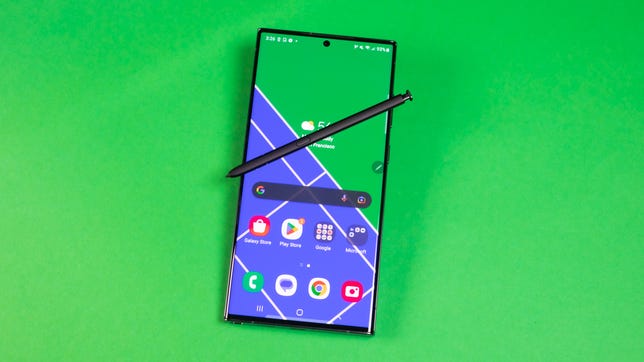

James Martin/CNET
Samsung Galaxy S23 Ultra
Best premium Android phone
Like:
- Fast performance
- Excellent main camera
- Bright screen
- Included stylus
- Double the storage in the base model
- Four generations of Android OS updates
Don’t like:
- High price
- Photos don’t always look natural
- No improvements to fast charging
The Galaxy S23 is a lot, but in a good way. It’s more than most people need in a phone, but that doesn’t make it any less impressive. Samsung made improvements to the camera’s resolution (200 megapixels compared with 108 megapixels), color tones and dynamic range, while retaining the same edgy design and massive 6.8-inch screen as its predecessor. There’s also a new Qualcomm Snapdragon 8 Gen 2 processor that’s been optimized specifically for Samsung’s phones, which brings faster performance compared with the Galaxy S22 Ultra.
It may be an understatement to call this phone expensive: It starts at $1,200. But people willing to pay more for a giant screen and a high-quality, versatile camera won’t be disappointed. Read our full review of the Galaxy S23 Ultra.
$1,200 at Samsung
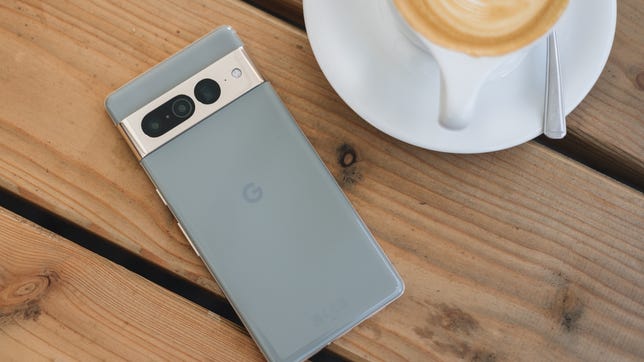

Google Pixel 7 Pro
Google’s best gets better
Like:
• Refreshed design looks great• Superb cameras• Clean and enjoyable interface
Don’t like:
• Battery life could be better
Google’s latest flagship phone, the Pixel 7 Pro, isn’t a huge overhaul from the already excellent Pixel 6 Pro Google launched last year. But it’s taken that winning formula and made some key tweaks to almost every element, resulting in a superb phone that’s bliss to use. The refreshed camera can take stunning images too, earning its spot among the best flagship phones around. It typically sells for $899, but Google currently has it on sale for $150 off.
Read our Google Pixel 7 Pro review.
$839 at AmazonGet Price AlertsYou’re receiving price alerts for Google Pixel 7 Pro – 5G Android Phone – Unlocked Smartphone with Telephoto Lens, Wide Angle Lens, and 24-Hour Battery – 512GB – Snow
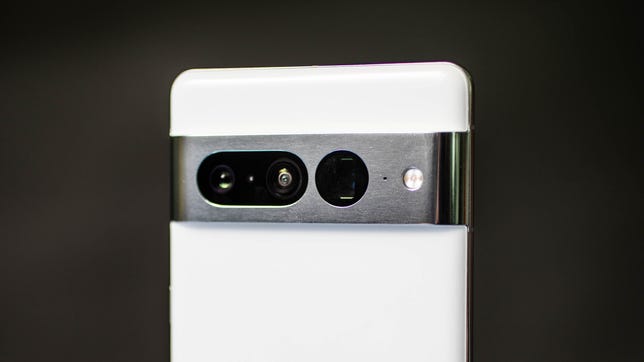

Patrick Holland/CNET
Google Pixel 7
Best Android phone under $600
Like:
• Sleek design• Great value • Main camera is Google’s best
Don’t like:
• Battery life is good but not great• Not as much Android version support as Samsung
At around $600, the Google Pixel 7 offers a great way to put some of Google’s best tech in your pocket without emptying your bank balance in the process. It undercuts the fully-specced 7 Pro model by some way, but still packs the same Tensor G2 processor, a glorious screen and a great main camera.
Like the 7 Pro, it’s had a refreshed design which looks classy and stylish, while its Android 13 software is clutter-free and easy to use. The battery life could be better, but with careful use you’ll get through a day on a charge. It lacks the telephoto zoom and a couple of the other bells and whistles of the 7 Pro, but if you’re after a solid everyday phone at a decent price, then the base Pixel 7 is a great option.
$645 at Walmart$449 at Target$449 at Best BuyYou’re receiving price alerts for Google Pixel 7 (128GB, Lemongrass)
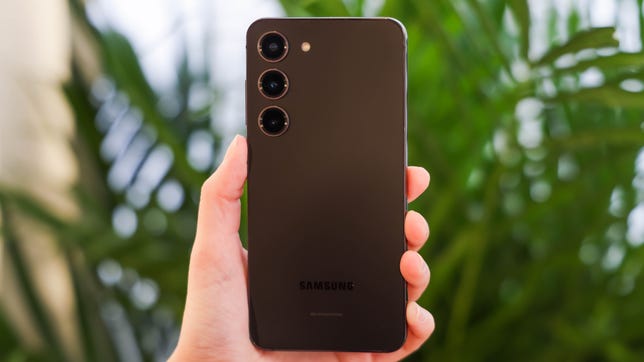

James Martin/CNET
Samsung Galaxy S23
Best small phone
Like:
- Longer battery life
- Attractive design
- Four generations of Android OS updates
- Fast performance
Don’t like:
- Cameras are basically the same as last year
- Expensive
- No improvements to fast charging
- No upgrade to base storage
Android fans looking for a petite phone don’t have much to choose from. But the 6.1-inch Galaxy S23 provides a compelling option for those who want a phone that feels compact but still provides enough screen space. The Galaxy S23 comes with routine upgrades like a fresh processor (a version of Qualcomm’s Snapdragon 8 Gen 2 that’s been optimized for Samsung’s phones), a slightly new design and a higher-resolution selfie camera. But it’s the Galaxy S23’s larger battery that makes it worth recommending. Read our full review of the Galaxy S23.
$800 at Samsung
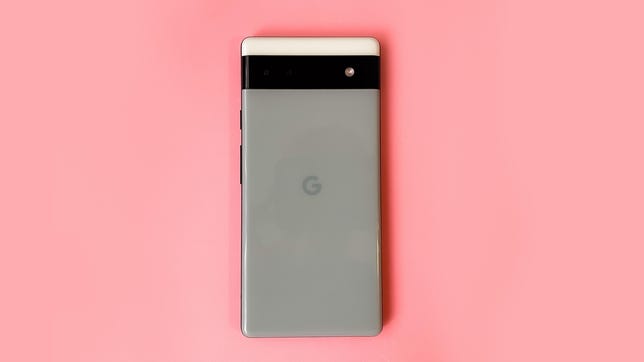

Lisa Eadicicco/CNET
Google Pixel 6A
Best camera for its price
Like:• Nice screen• Speedy performance• IP67 water-resistant• Affordable priceDon’t like:• No wireless chargingThe next-gen Pixel 6a is available now, and if you want 5G on the cheap the smartphone is a solid choice. This Pixel phone has a high-end chipset, great rear cameras, a good display, and average battery life. It is one of the cheapest good 5G smartphones you can buy right now.
Read our Google Pixel 6A review.
$299 at Google
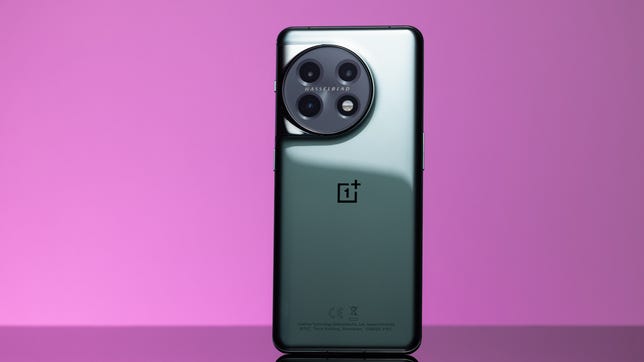

OnePlus 11
High performance flagship with a lower price
Like:
- Incredible performance for gaming
- Slick, refreshed design
- Hyper-fast charging
- Five years of security support
Don’t like:
- Cameras are good but not great
- Better waterproofing on rivals
The $700 OnePlus 11 is a powerful phone that’s well equipped to handle gaming, video streaming and other common tasks. In typical OnePlus fashion, this phone is also cheaper than the $800 Galaxy S23 and $900 Pixel 7 Pro. The cameras aren’t the best, but they’re fine for casual photographers who just want to capture their next vacation or a night out. What sets the OnePlus 11 apart from many of its rivals is its blazing 100-watt fast charging, which can replenish the battery in just 25 minutes. (The US version only supports 80-watt charging, but that’s still an improvement over the Galaxy S23 Ultra’s 45-watt charging). Overall, the OnePlus 11 is ideal for people who want a powerful phone that charges quickly and won’t break the bank. Read our full review of the OnePlus 11.
$699 at OnePlus
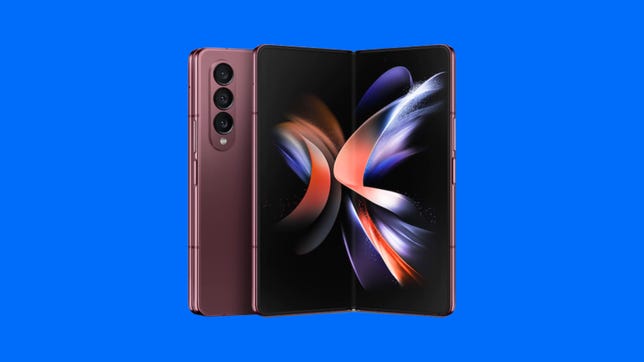

Sarah Tew/CNET
Samsung Galaxy Z Fold 4
The best folding phone
Like:• 120Hz cover screen• Water resistance• Enhanced tablet experience• Software improvements for multitasking and Flex ModeDon’t like:• $1,800 is still expensive
Foldable phones haven’t really hit the mainstream, remaining instead only in the reach of those willing to spend top dollar on the latest in mobile innovation. Samsung’s Galaxy Z Fold 4 is the best folding phone around, offering top-notch performance, a great camera setup and a variety of tweaks to its folding technology that make this Android smartphone more desirable than its predecessor.
$1,465 at Samsung
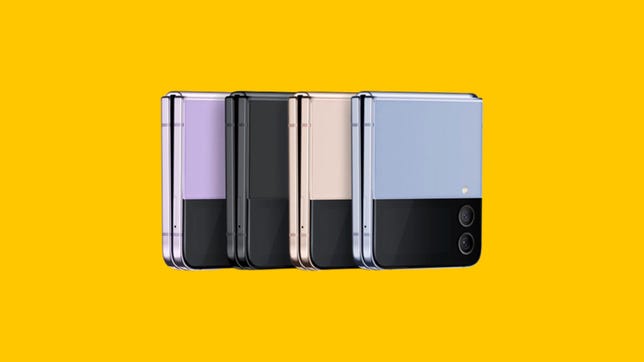

Samsung
Samsung Galaxy Z Flip 4
Best foldable under $1,000
Like:
- Better battery life than before
- Still the best flip phone to get into foldables
- Water resistance
Don’t like:
- Same cameras as the Galaxy Z Flip 3
The Samsung Galaxy Z Flip 4 is an iterative update but it packs a punch for the $1,000 price tag. With a better battery life thanks to a more power efficient processor and a bigger battery, the Flip is finally worth investing in as a flagship device.
$840 at Samsung
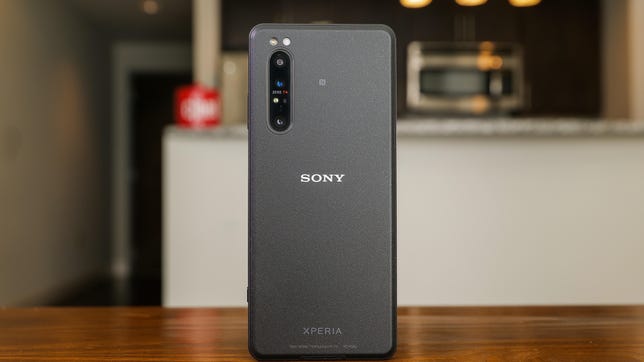

Patrick Holland/CNET
Sony Xperia Pro
Best phone for creatives
Like:
- Professional level video monitor features
- Robust utilitarian build
- Live broadcast streaming over 5G
- As a phone, it’s essentially the Sony Xperia 1 II
Don’t like:
- Price is high, limiting its narrow appeal
- 2020 specs and Android 10
- Wished it recorded video via HDMI input
At a whopping $1,800 list price, the Sony Xperia Pro isn’t for everyone. But if you’re a photographer or videographer looking for professional-level camera phone features, you can’t go wrong. The Xperia Pro is essentially four products in one: a phone, a camera monitor, a speedy photo file transfer device and a 5G machine suitable for broadcasting and livestreaming.
Read our Sony Xperia Pro review.
$1,198 at Walmart$1,100 at Best BuyGet Price AlertsYou’re receiving price alerts for Sony Xperia Pro
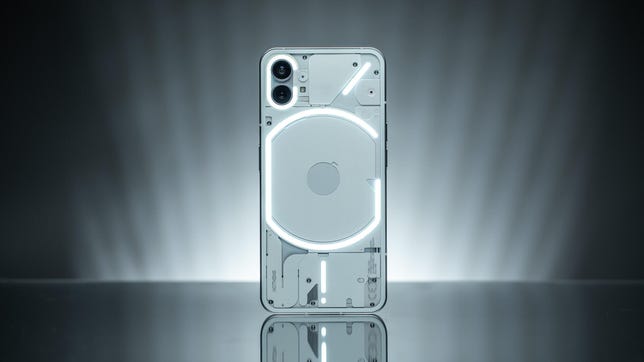

Andrew Lanxon/CNET
Nothing Phone 1
A flashy, affordable phone (Update: Low stock)
Like:
• Flashing design• Solid performance• Affordable price
Don’t like:
• Cameras are only OK• Not yet available in the US
The Nothing Phone 1’s affordable price, solid performance and good-enough camera setup already make it a solid option to consider if you’re looking for an Android phone on a budget. But this phone takes the pizzazz up a notch with its suite of flashing LED lights on the rear, which certainly make it stand out against its competitors.
It’s a great phone, which we enjoyed reviewing, but there is a downside: As of right now, there aren’t any plans to launch the phone widely in the US. You can get it unlocked on Amazon, but it’s GSM-only so it won’t work on Verizon. The company’s next phone, the Nothing Phone 2, will be coming to the US later this year.
$427 at AmazonGet Price AlertsYou’re receiving price alerts for Nothing Phone1 5G Dual 128GB 8GB RAM Smartphone Factory Unlocked (GSM Only | No CDMA – not Compatible with Verizon/Sprint) – Black
How we test phones
Every phone that appears on this list has been thoroughly tested by CNET’s expert reviews team. That means actually using the phone, testing the features, playing games on it, and taking photos with it. No marketing promises are taken at face value, and if we find something we don’t like, be it battery life or build quality, we’ll tell you all about it.
Testing a phone means testing every element of the device. Is the display bright, sharp, vibrant? Does the design feel good to hold? Is it heavy? Does it feel well made? Is it water resistant? We test the processor performance using standardized benchmark tools like GeekBench and 3DMark, along with our own anecdotal observations while navigating the interface or playing demanding games.
All the cameras (both front and back) are tested in a variety of conditions, from bright sunlight through to dark scenes (for any available night modes), and we compare our findings against similarly priced models. We conduct battery tests, running them down from full to see how long they’re likely to keep going out there in the real world.
We take into account additional features like 5G, fingerprint or face scanners, styluses, fast charging, flexible displays, or other extras that can be useful. And we of course balance all this against the price, to give you the verdict on whether that phone, whatever price it is, actually represents good value.
More phone and Android recommendations
- Best Android Tablet for 2023
- Best T-Mobile Phones of 2023
- Best Smartphone Under $500 for 2023
- Best Prepaid Phones for 2023
- Best Samsung Phone for 2023
- Phones Under $200: Top Picks and New Budget Phones
The post Best Android Phones to Buy in 2023 first appeared on Joggingvideo.com.
]]>The post Pixel 7 Pro vs. iPhone 14 Pro: Which Phone Camera Is Better? first appeared on Joggingvideo.com.
]]>This story is part of Focal Point iPhone 2022, CNET’s collection of news, tips and advice around Apple’s most popular product.
Google’s Pixel 7 Pro has an excellent triple-camera setup that’s already seriously impressed me, alongside the phone’s slick new design and streamlined Android 13 software. But the competition is fierce, with Apple’s latest iPhone 14 Pro also packing some potent specs and a set of cameras that can take truly superb images.
So which one does it best and which one should you consider if you’re looking for the best photography phone around? I took both phones around the stunning Edinburgh suburb of Leith to find out.
It’s an interesting matchup as both phones have similar camera offerings with a main standard lens, an ultrawide lens and a telephoto zoom. And both have already proven their photographic prowess in our full reviews, with rich images and excellent dynamic range being delivered on both sides.


Pixel 7 Pro, main lens.
Andrew Lanxon/CNET


iPhone 14 Pro, main lens.
Andrew Lanxon/CNET
Take a look at the photos above from the Pixel 7 Pro’s 50-megapixel and the iPhone 14 Pro’s 48-megapixel main camera lens. Both scenes are well exposed here, with controlled blue skies and plenty of detail to be seen in the more shadowy areas. The iPhone’s color balance is a bit warmer, which I think suits the scene well, although the Pixel’s image is arguably a touch more natural looking.
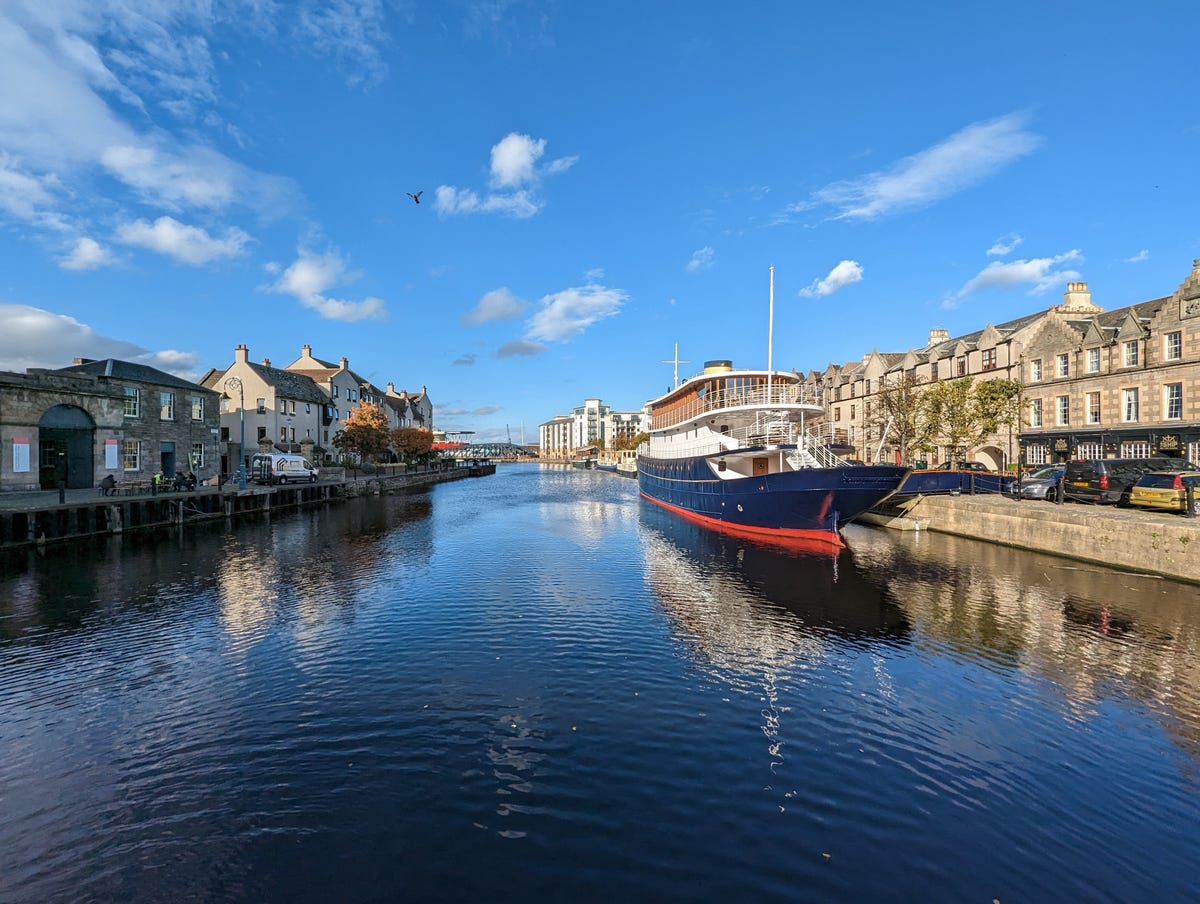

Pixel 7 Pro, ultrawide lens.
Andrew Lanxon/CNET


iPhone 14 Pro, ultrawide lens.
Andrew Lanxon/CNET
Switch to the ultrawide lens, and again both phones have done a great job in capturing this high contrast scene above. There’s very little to choose between them, but I think the Pixel 7 Pro’s more natural color tones might give it the edge.
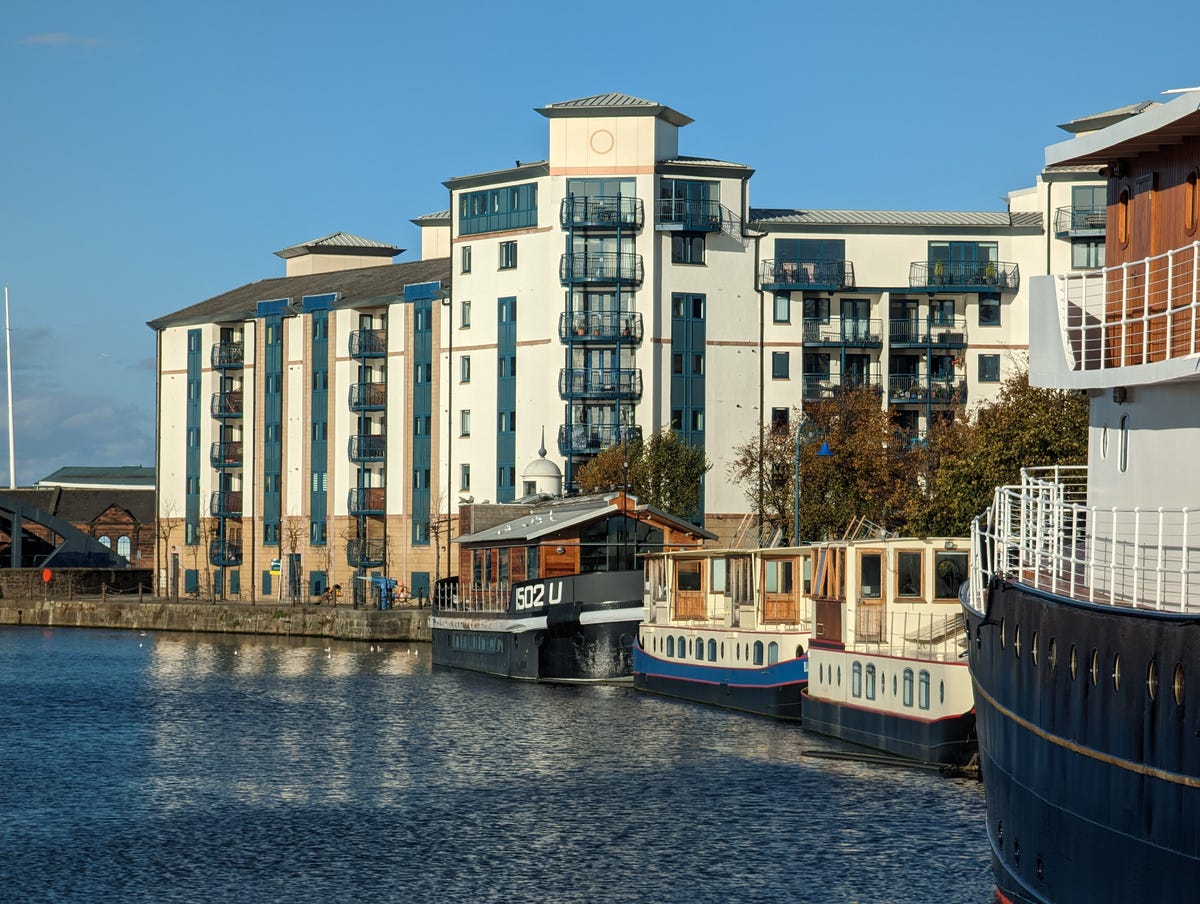

Pixel 7 Pro, 5x optical zoom lens.
Andrew Lanxon/CNET


iPhone 14 Pro, 3x optical zoom lens.
Andrew Lanxon/CNET
Things change when we switch to the zoom lenses though, most notably because the Pixel 7 Pro’s 5x offers a much closer view than the 3x optical zoom of the iPhone 14 Pro. I love a longer zoom as it helps you find different photo compositions in a scene that would be lost to those who only have wide angle lenses. Using the zoom lens for the photos above let me capture a totally different scene, but I didn’t have to physically move to get it.
That extra reach is noticeable on the Pixel’s shot, with a much closer zoom on the buildings in the distance. Both phones have achieved a good exposure however, and while the Pixel’s image is noticeably warmer (particularly on the buildings themselves), I like the color balances of both shots.


Pixel 7 Pro, 5x zoom lens.
Andrew Lanxon/CNET
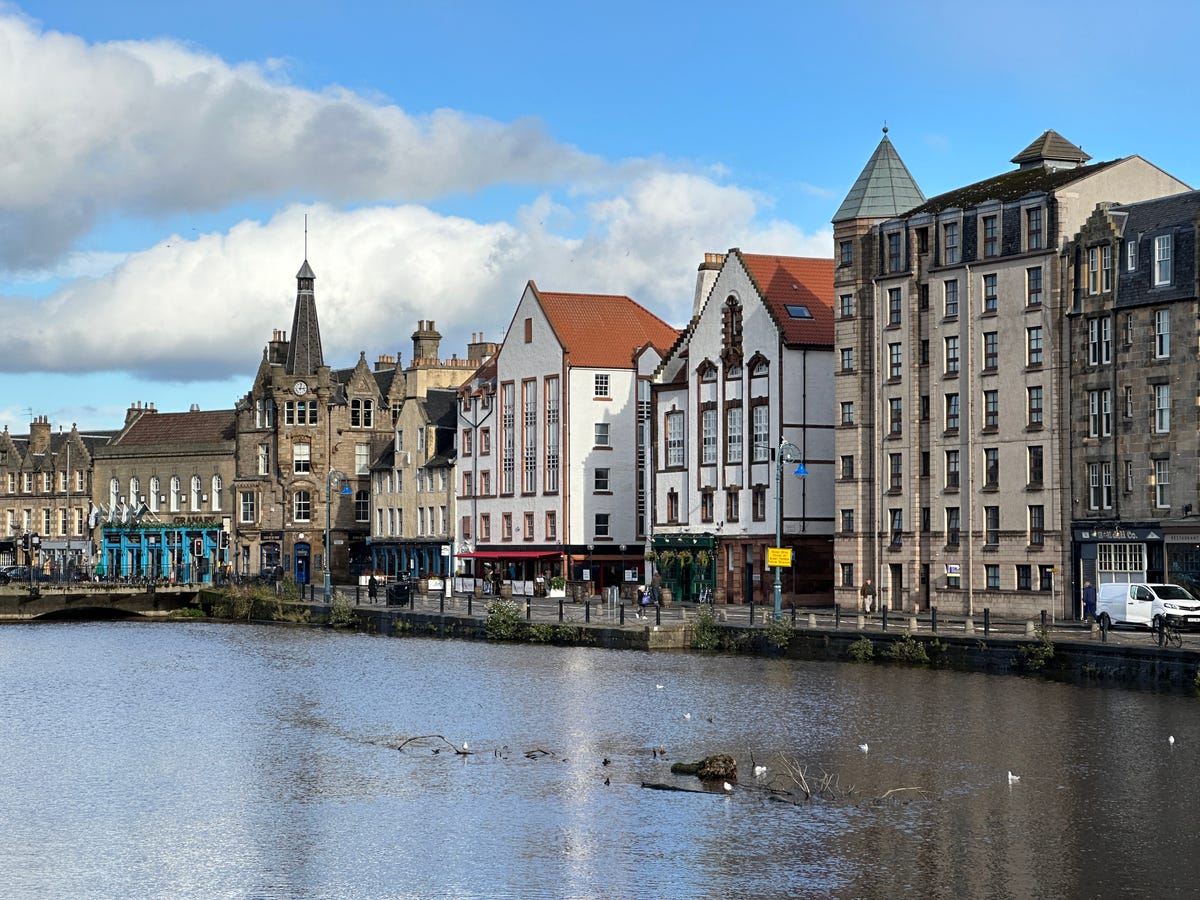

iPhone 14 Pro, 3x zoom lens.
Andrew Lanxon/CNET
Again, that extra zoom on the Pixel let me get a tighter composition on the buildings next to the river in the images above, and it’s a better-looking photo as a result. That said, I prefer the tones and exposure of the iPhone’s shot, with brighter whites and a more vibrant pop of orange visible on the central building and richer blue tones in the sky.
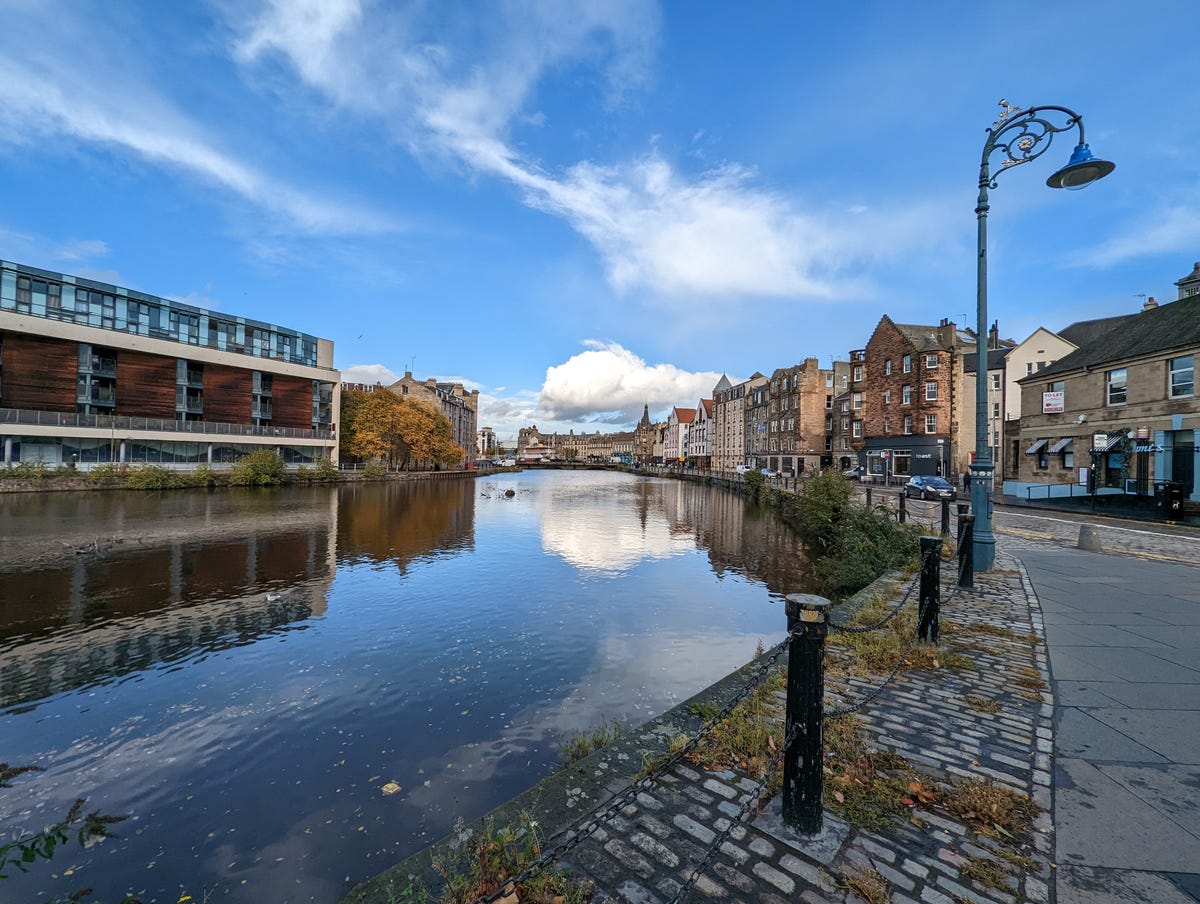

Pixel 7 Pro, ultrawide lens.
Andrew Lanxon/CNET
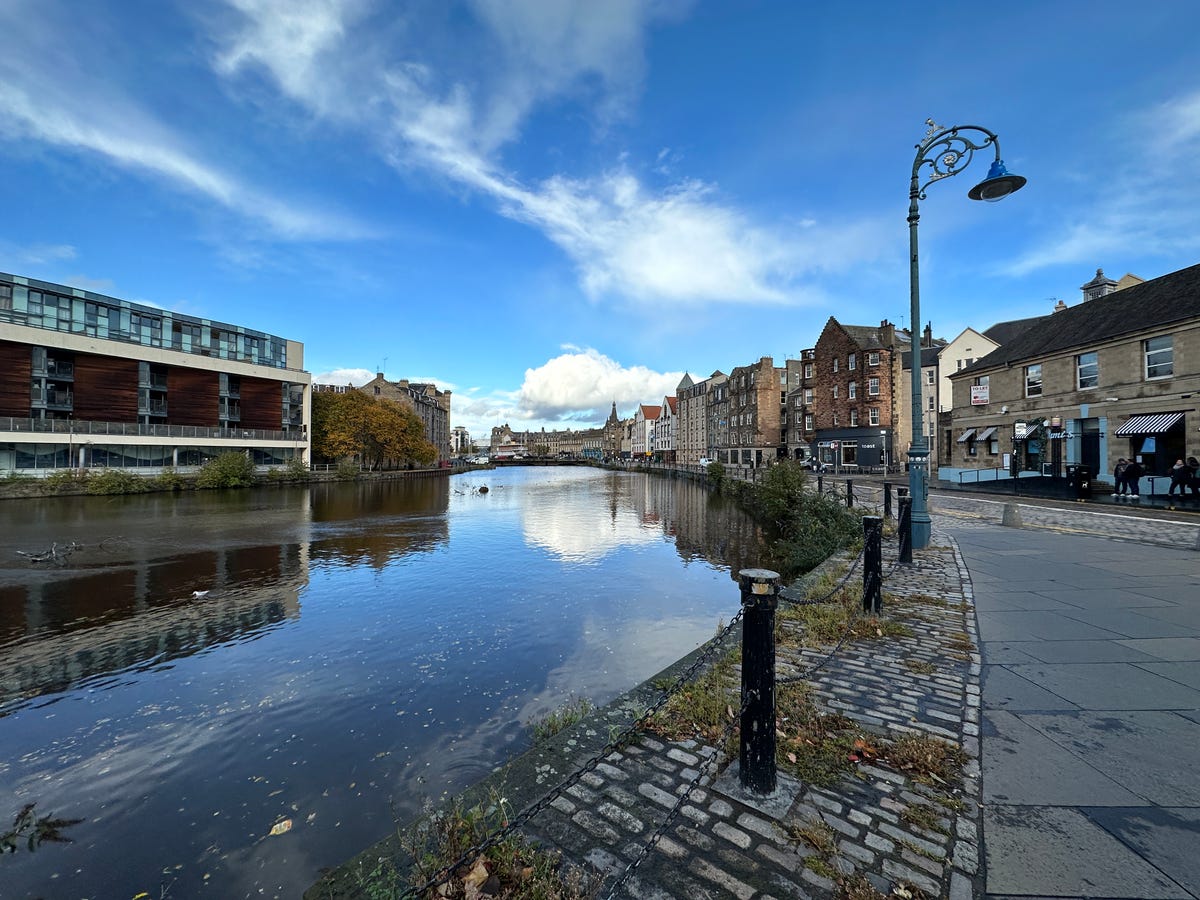

iPhone 14 Pro, ultrawide lens.
Andrew Lanxon/CNET
The ultrawide photos above are more mixed however. While both phones achieved a generally decent exposure, they both have slightly blown out highlights visible in the distant clouds. And while I prefer the more natural blue sky of the iPhone 14 Pro, the Pixel 7 Pro has achieved more vibrant color tones on the buildings and trees toward the center of the frame. It’s tough to make a call on which is “better” here.


Pixel 7 Pro, main lens.
Andrew Lanxon/CNET
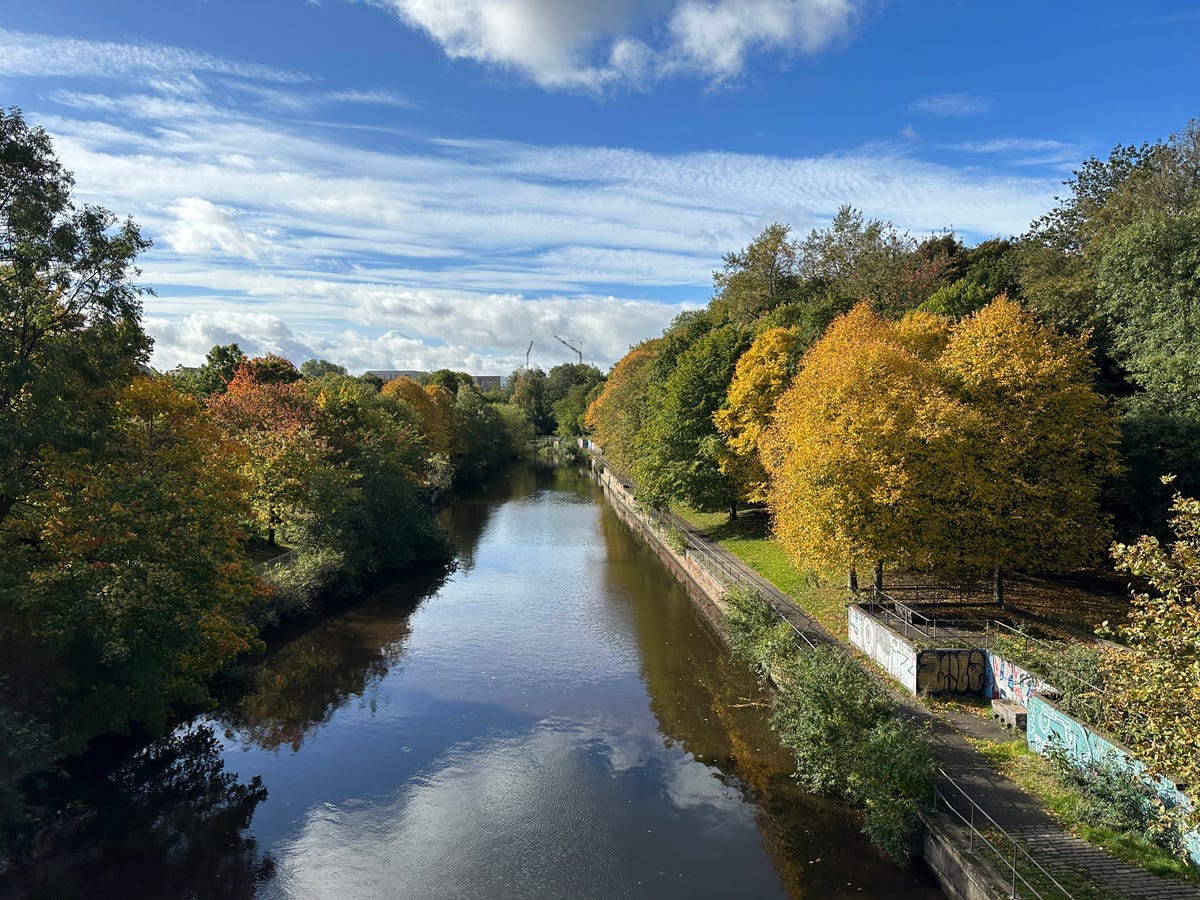

iPhone 14 Pro, main lens.
Andrew Lanxon/CNET
Back to the main camera lens, and there’s again very little to choose between the two pictures above. There’s tons of detail in both, and the overall exposure is spot on. If I were nitpicking — which I am — I’d say the Pixel 7 Pro’s sky has a bit too much of a purple tinge in it and it’s a slightly more contrasty scene overall. While that’s resulted in deeper orange hues on the fall leaves, it’s less representative of the actual colors of the scene. It’s largely down to personal preference, but I’m marginally erring toward the iPhone’s shot here.
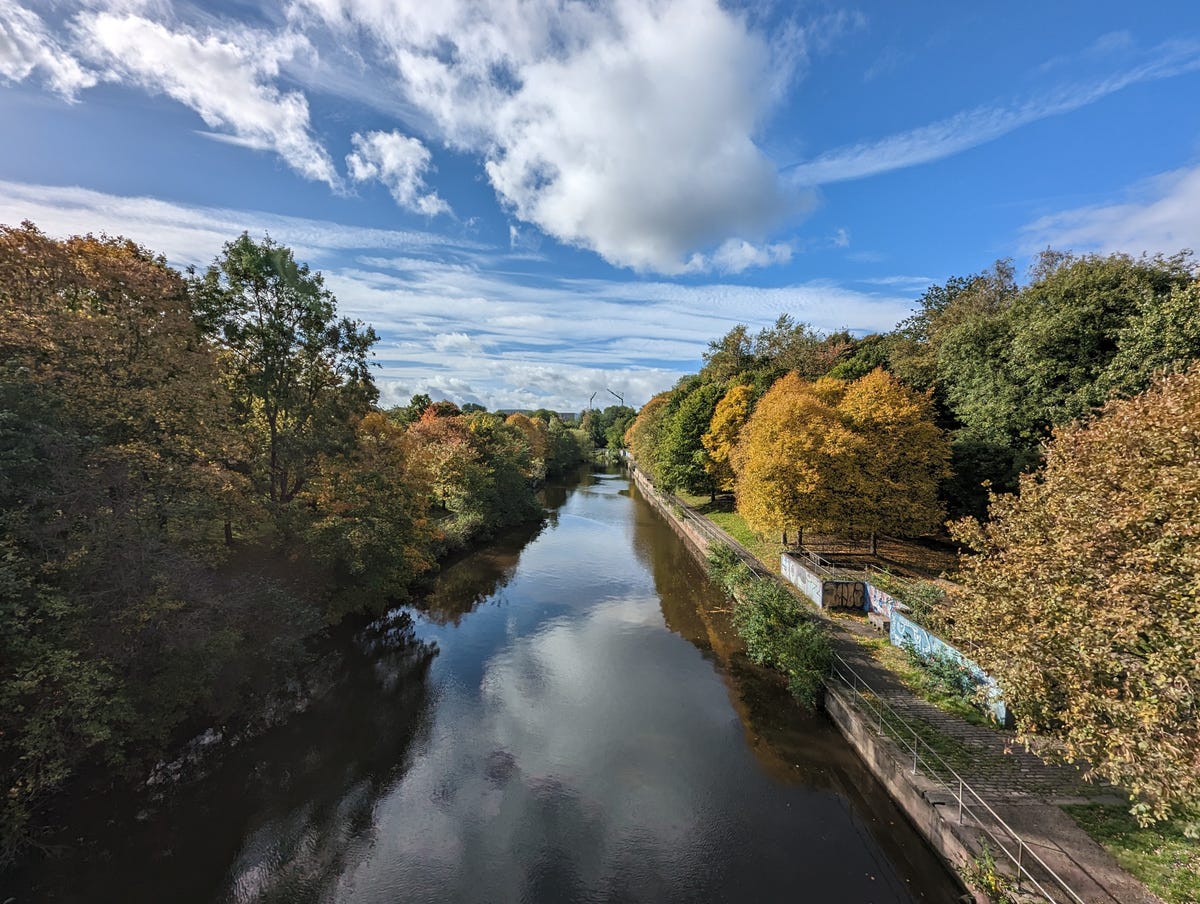

Pixel 7 Pro, ultrawide lens.
Andrew Lanxon/CNET


iPhone 14 Pro, ultrawide lens.
Andrew Lanxon/CNET
The photos above show the same scene but from the ultrawide lens this time. To my eye, it’s an easier win for the iPhone here. The overall color balance is more natural. And while the iPhone kept a decent contrast in the darker area in the bottom left, the Pixel has tried to brighten this area artificially, resulting in a weird-looking grey patch that I’m not keen on.


Pixel 7 Pro, wide-angle lens with macro focus.
Andrew Lanxon/CNET


iPhone 14 Pro, wide-angle lens with macro focus.
Andrew Lanxon/CNET
With the Pixel 7 Pro now packing auto-focus on its ultrawide lens, it’s able to offer macro photography as it can focus within a couple of inches of the lens. It’s something Apple introduced on the iPhone 13 Pro, and it’s great fun to experiment with.
In the macro photos above, I prefer the image from the Pixel 7 Pro’s camera. The white balance has resulted in more vibrant — and more accurate — blue-purple tones on the flower’s petals. The leaves in the background also have more of an emerald tone, rather than the yellow-green tones seen on the iPhone’s shot.
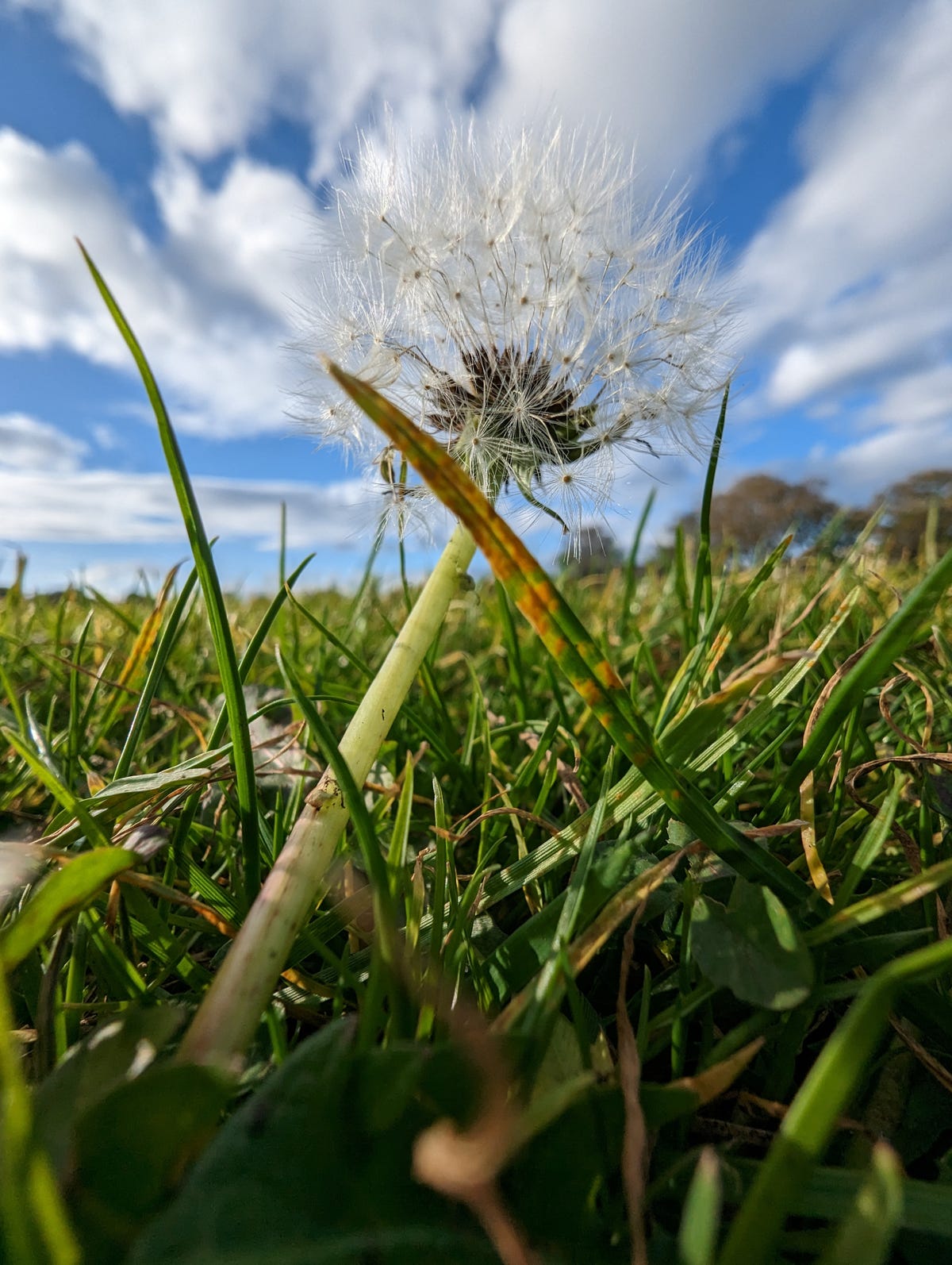

Pixel 7 Pro, wide-angle lens with macro focus.
Andrew Lanxon/CNET
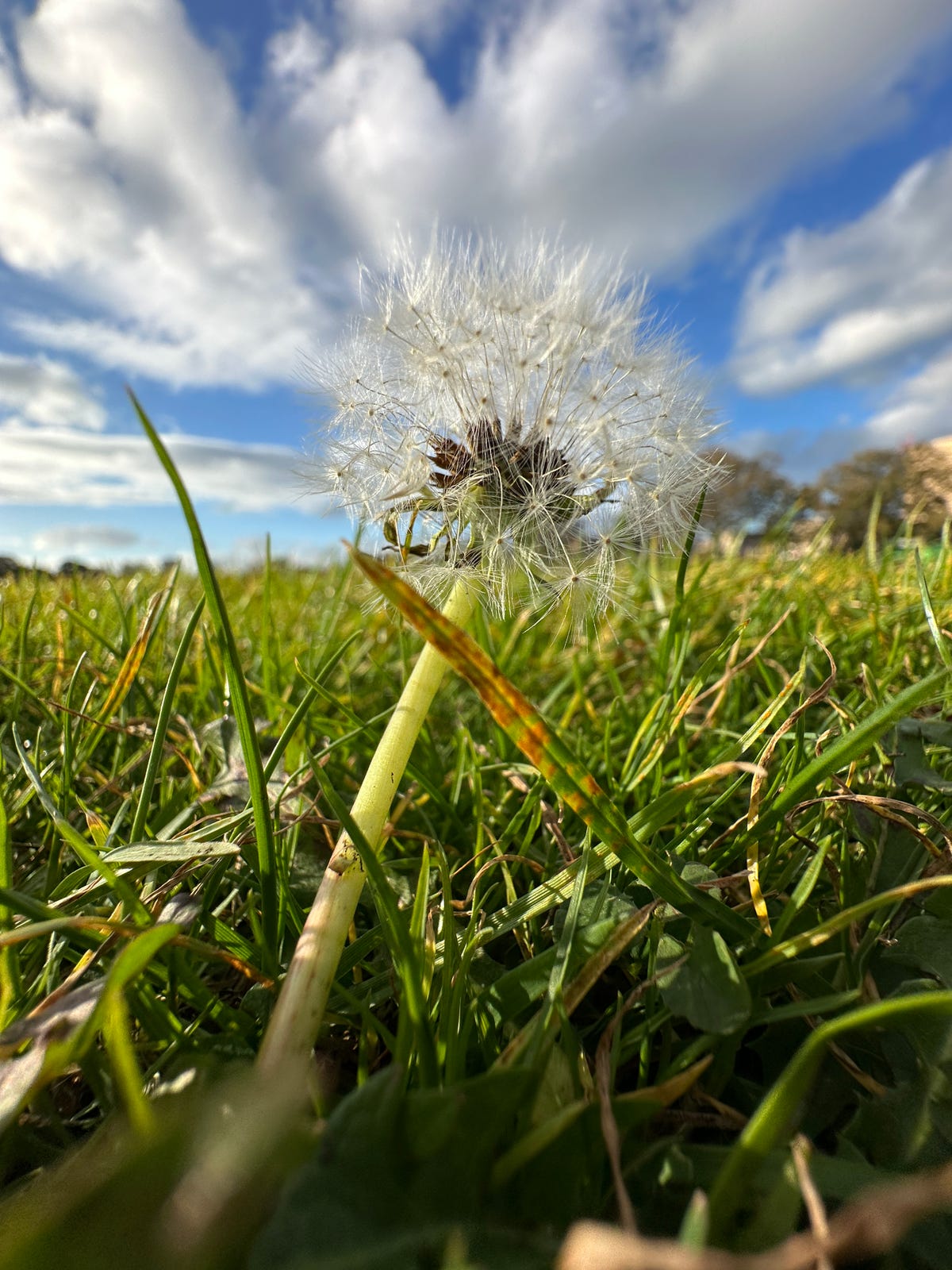

iPhone 14 Pro, wide-angle lens with macro focus.
Andrew Lanxon/CNET
And it’s much the same in the pictures above when I used the phones to get a low-down shot of this dandelion, with the blue sky behind it. The Pixel 7 Pro’s shot has much more vibrant green tones in the grasses around the subject. The iPhone 14 Pro captured a warmer scene, with more yellow tones seen in the grasses that I personally don’t like as much.


Pixel 7 Pro selfie camera test.
Andrew Lanxon/CNET


iPhone 14 Pro selfie camera test.
Andrew Lanxon/CNET
The Pixel 7 Pro is packing a 10.8-megapixel front-facing selfie camera, which is slightly below the iPhone 14 Pro’s 12 megapixels. It’s not a huge difference, there is slightly more detail visible when you zoom in. Both shots are generally solid, however, although I think the Pixel has gone a bit too “HDR” by reducing the highlights on my face too much. Personally, I prefer how I look in the iPhone’s image.


Pixel 7 Pro wide-angle selfie test.
Andrew Lanxon/CNET


iPhone 14 Pro wide-angle selfie test.
Both phones have a wider-angle option for the front-facing cameras, which is helpful if you want to capture more of your surroundings or want to squash more of your friends into the picture. I took the photos above in this mode, and the Pixel actually has the edge slightly in terms of fine image details. But again, I prefer the exposure and contrast from the iPhone as the Pixel’s HDR has flattened the tones in my face a bit too much for my liking.


Pixel 7 Pro, night mode.
Andrew Lanxon/CNET


iPhone 14 Pro, night mode.
Andrew Lanxon/CNET
When switching to night mode on both phones, I had to give an early win to the iPhone in the photos above. Its white balance produced a nicer-looking shot without the overly warm orange tone seen in the Pixel’s image.


Pixel 7 Pro night mode, 100% crop.
Andrew Lanxon/CNET


iPhone 14 Pro, night mode, 100% crop.
Andrew Lanxon/CNET
It’s also clear that the iPhone’s image is sharper when cropping in to 100% on both images, with the Pixel’s shot showing some motion blur, particularly on the pub sign. Look at the spotlights on the wall sculptures above; the Pixel’s shot hasn’t been able to capture the dynamic range here, resulting in blow-out areas, while the iPhone has done a much better job of keeping those bright tones under control.
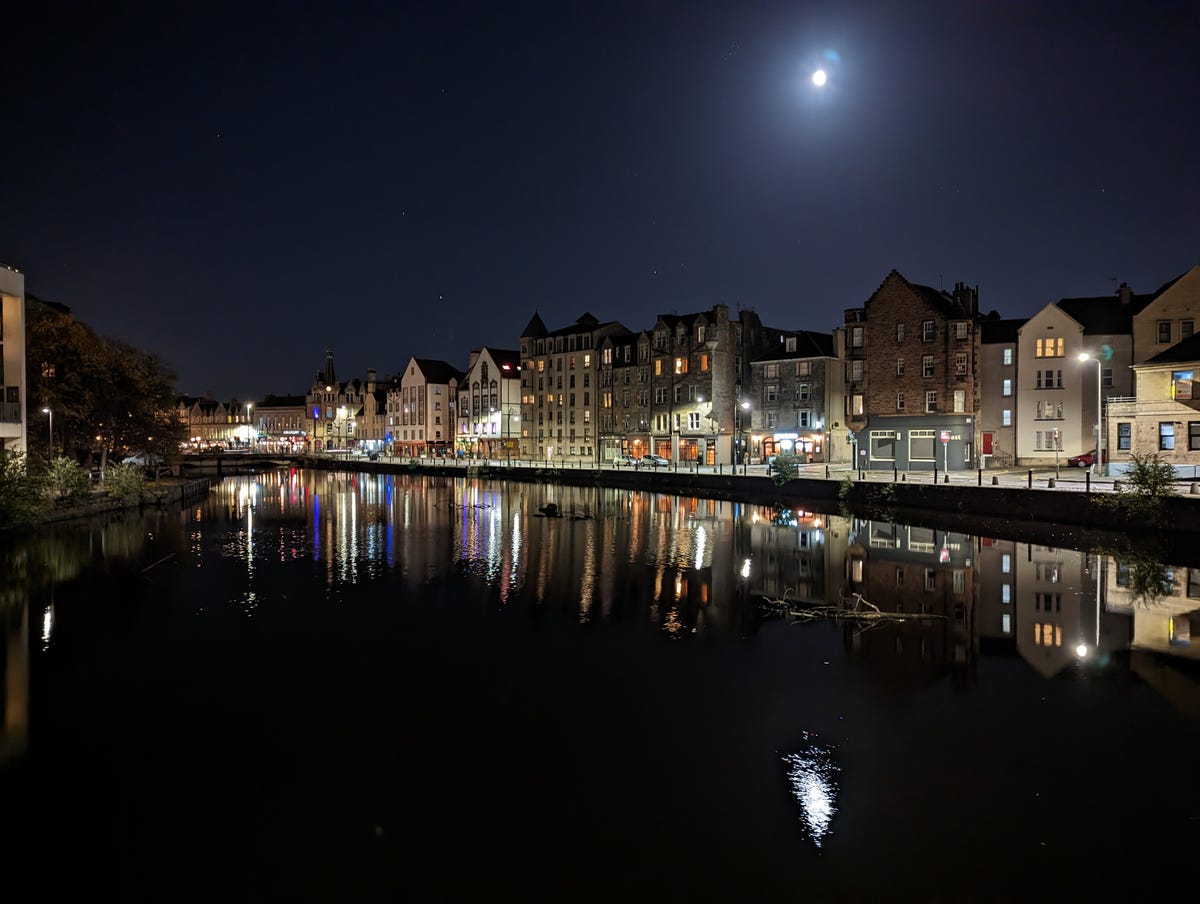

Pixel 7 Pro, night mode.
Andrew Lanxon/CNET


iPhone 14 Pro, night mode.
Andrew Lanxon/CNET
There’s not as much to choose between in these night-time shots above that I took overlooking Leith Shore. Both have similar color tones, exposure and only marginal improvements on the iPhone’s shot when viewed at 100%.
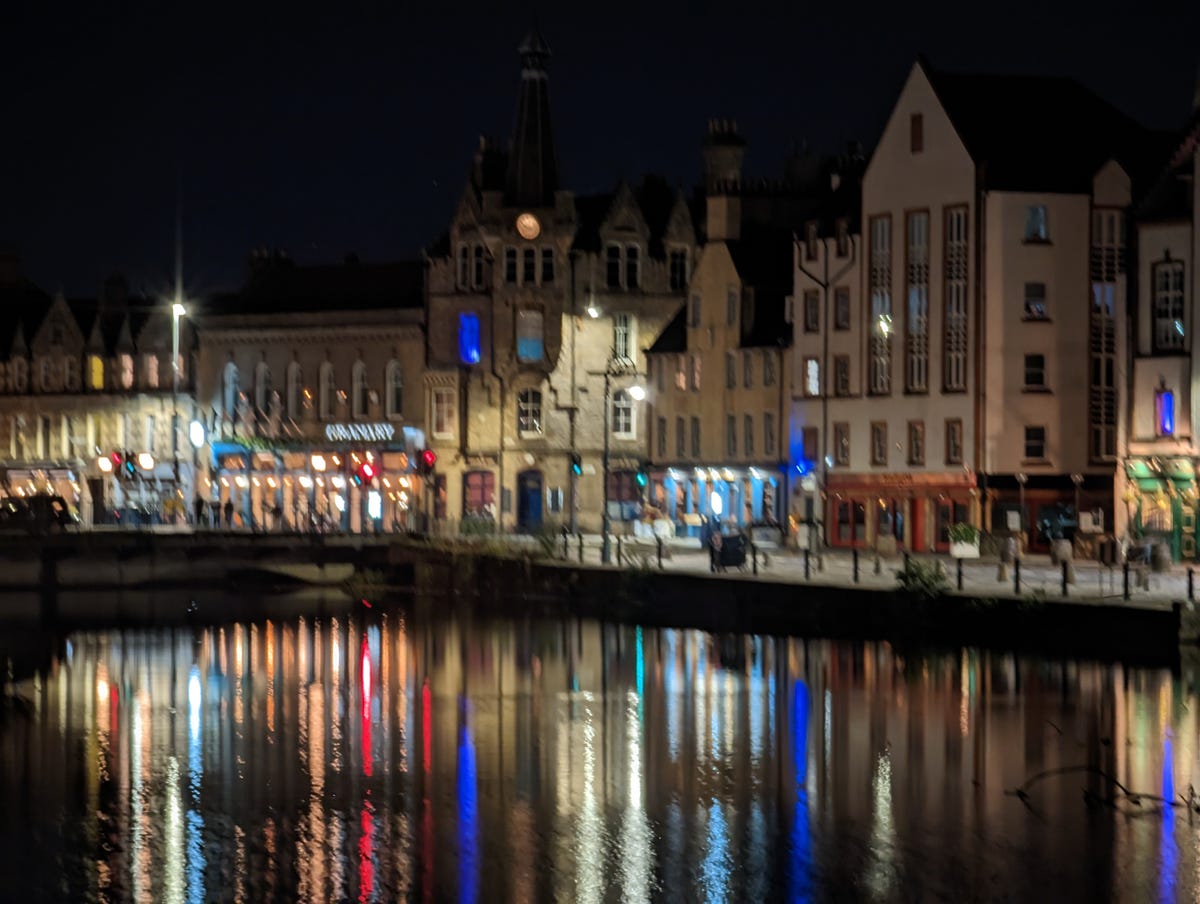

Pixel 7 Pro night mode, 5x zoom.
Andrew Lanxon/CNET
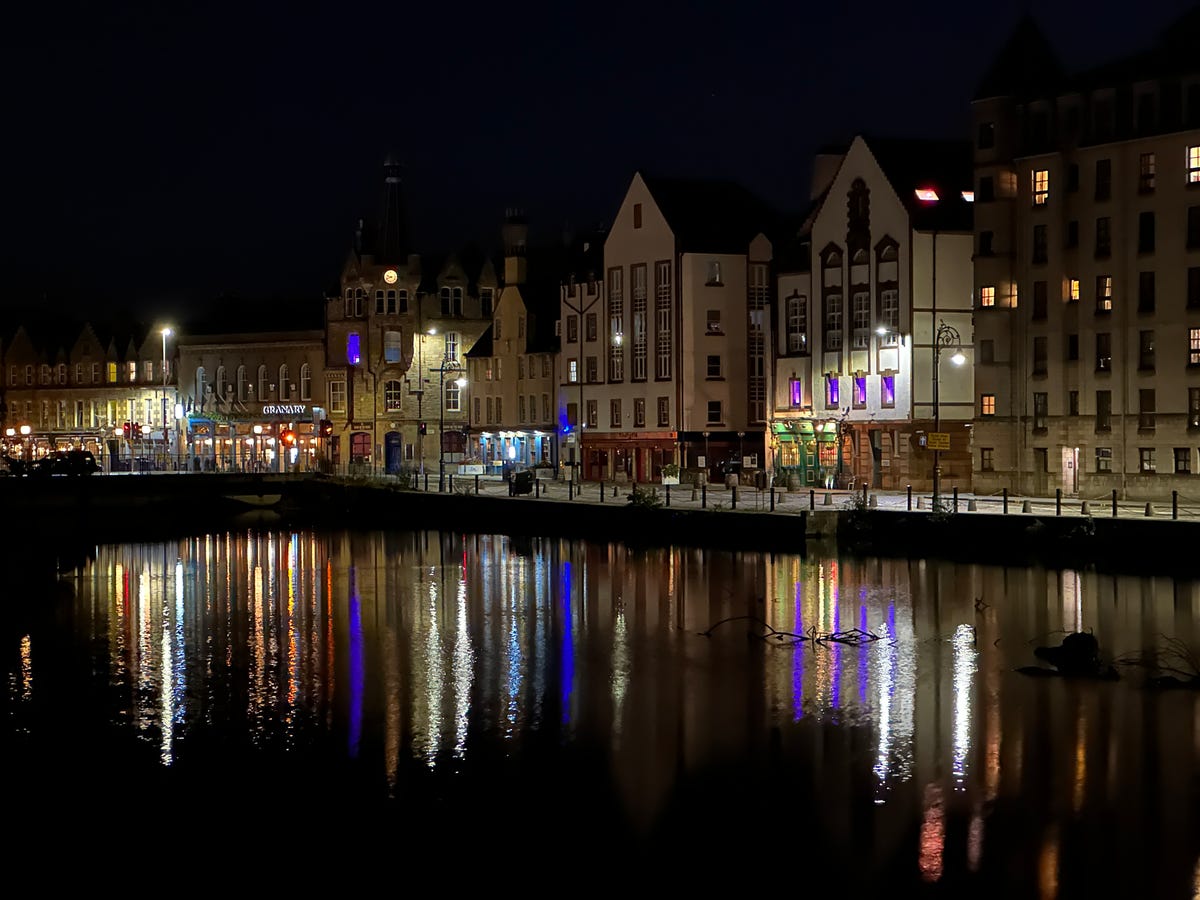

iPhone 14 Pro, night mode, 3x zoom.
Andrew Lanxon/CNET
Switch to the zoom mode, and there’s a bigger difference between the two phones. In the images above, the Pixel’s shot is brighter and more vibrant but suffers hugely from motion blur, despite that fact that I stabilized myself against a bridge wall when taking the shot. I took three images here and this was the best I could get.


Pixel 7 Pro, night mode, 5x zoom at 100% crop.
Andrew Lanxon/CNET


iPhone 14 Pro, night mode, 3x zoom at 100% crop.
Andrew Lanxon/CNET
You can really see how blurry the Pixel’s image is when cropping in to 100%. Sure, the iPhone doesn’t have the same reach with its 3x zoom. But its shot is much sharper and clearer, and it easily takes the win here.


Pixel 7 Pro, night mode.
Andrew Lanxon/CNET


iPhone 14 Pro, night mode.
Andrew Lanxon/CNET
I also found that the Pixel 7 Pro is particularly susceptible to lens flare at night when shooting towards bright light sources like the street lamp shown in the pictures above. While both cameras suffer from lens flare, the Pixel’s is particularly problematic since most of the night sky is filled with red-pink flares surrounding the light. It’s a shame because this would otherwise have been a nice night-time scene.
Which phone takes better pictures?
Both phones took some truly superb photos during this test, and it’s not easy to give either one the definitive win. Some elements of what makes a “better” photo will come down to personal preference. In well-lit outdoor shots, I found that the Pixel 7 Pro achieved a more natural color tone from its main lens than the iPhone managed. But its colors weren’t as good in some wider-angle shots. Of course, you can set up different photographic styles on the iPhone to customize how the camera captures photos and make them look more natural if that’s your preference.
At night the iPhone is the clear winner though, with better colors, crisper detail and a superior ability to handle bright light sources — both in terms of exposure and lens flare. However, the Pixel 7 Pro absolutely takes the win with its superior zoom skills, with its 5x zoom letting you snag beautiful, crystal-clear images that are simply out of reach of the iPhone’s 3x zoom. I also preferred the look of the Pixel’s macro images in all of the tests I shot.
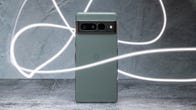

Now playing:
Watch this:
Pixel 7 Pro Review: Google’s Best Phone Gets Better
10:14
So which is “best” will come down to what you want most from your phone camera. If night photography is important, then go for the iPhone 14 Pro. If you want zoom skills to find creative compositions in your landscapes and street photography, then the Pixel 7 Pro is for you.
If you just want a great all around camera to snap vibrant shots of your kids at the beach, your friend’s food at a local market or some stunning woodland scenes on your next hike, then either phone will suit you incredibly well. Your bigger decision will instead come down to whether you want to go with iOS or Android as your operating system and whether spending the extra hundred bucks or so on the iPhone 14 Pro is worth it.
Pixel 7 Pro: Subtle Tweaks Improve Google’s Best Phone
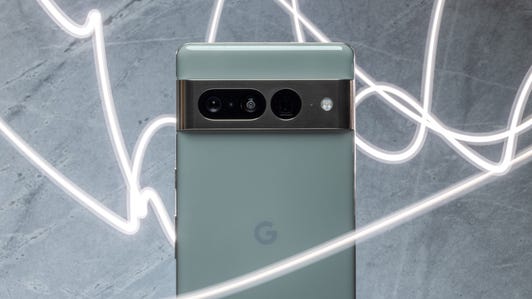

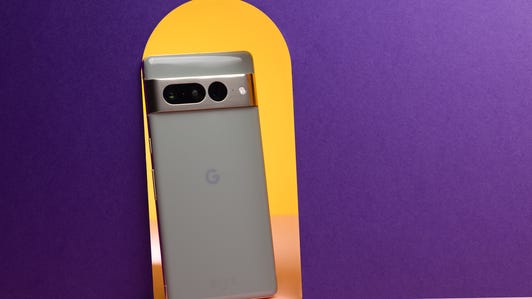

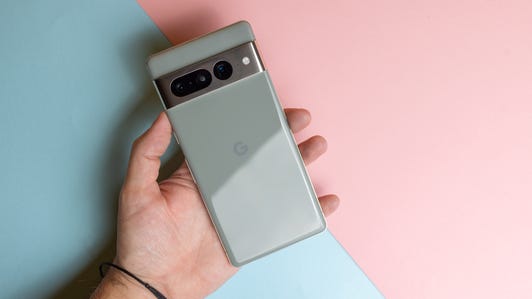

+16 more
The post Pixel 7 Pro vs. iPhone 14 Pro: Which Phone Camera Is Better? first appeared on Joggingvideo.com.
]]>The post It’s Expensive to Heat An Older Home, But Here’s How You Can Save first appeared on Joggingvideo.com.
]]>This story is part of Home Tips, CNET’s collection of practical advice for getting the most out of your home, inside and out.
Heating a home is rarely cheap and, with global energy prices on the rise, it’s more important than ever to consider how to make our homes more energy-efficient.
This is easier in newer properties as they’re more likely to have been built with efficiency in mind, with double-glazed doors and windows and thermal insulation throughout.


Older and period properties are another matter altogether, with many lacking those same features. And their period nature often means that adding insulation can be costly. (Here’s how to tell if you’re buying an energy-efficient house.)
But there are plenty of other ways you can heat your home in a more cost-effective way, and many of them won’t cost you a thing. I’ve put together some of the top tips that I use in my own 1860s home in Scotland — a building where any improvements I can make to its efficiency go a long way. You can also check out more tips on how to save money on your heating bill this winter, and a simple ceiling fan hack that can keep your home warmer.
Read more: Best Smart Thermostats for 2022
Look at insulation options for walls and the roof
While older properties (including my own) may have no insulation built in as standard, it is possible to still add this in. Houses lose a great deal of heat from the roof, so adding insulation here can be a great start. It’s even possible to buy insulation (in rolls or even as boards) and install it yourself.
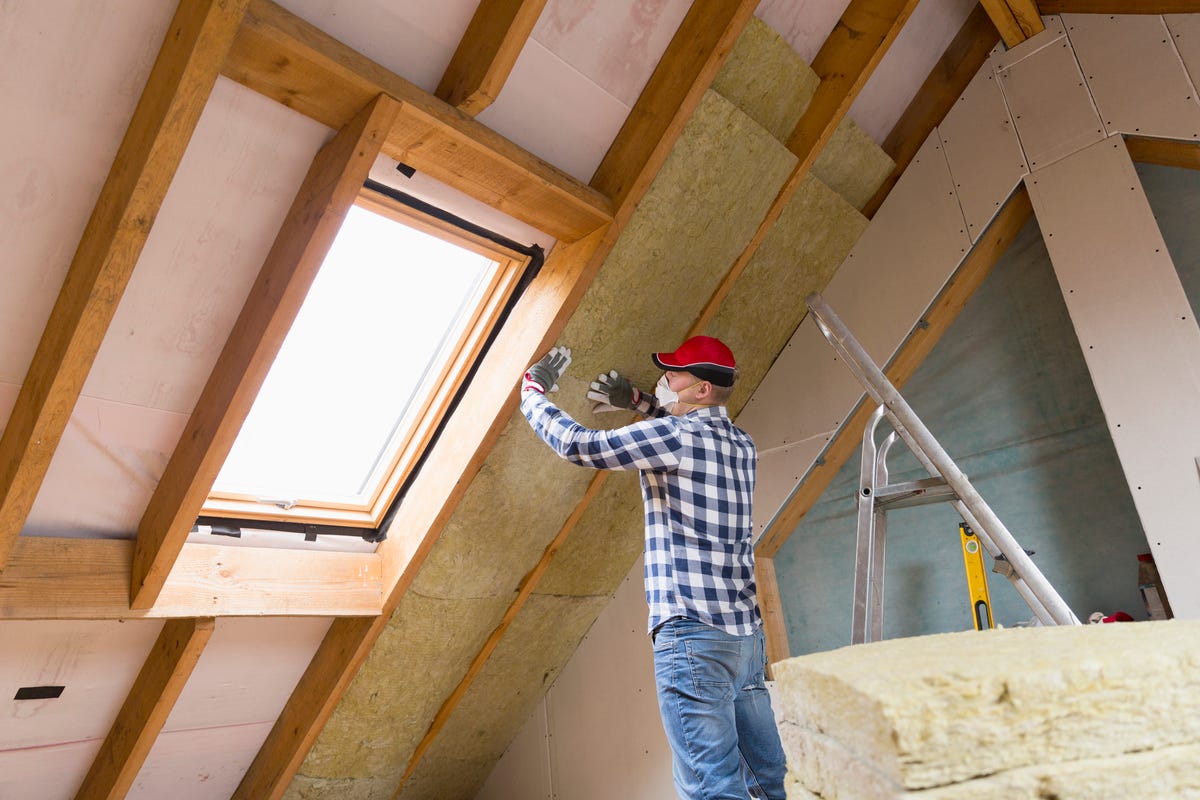

Adding insulation to your roof or walls can cut your heating bills.
Artursfoto/Getty
The walls are another matter entirely and will require the insulation to be affixed either to the interior walls, with a false wall erected within to create the cavity or a new rendered wall created on the outside of the building. For period homes where the original walls are part of the character, this latter option simply won’t fly — especially if your home is historically listed, like mine, where there is a particular focus on maintaining the exterior aesthetics of the property. Other insulation options can include materials inserted beneath the floorboards.
Adding insulation to the property can be a great way to increase energy efficiency, but it can also be a big outlay and potentially very disruptive to install. Thankfully there are many insulation specialists who can advise on your best options.
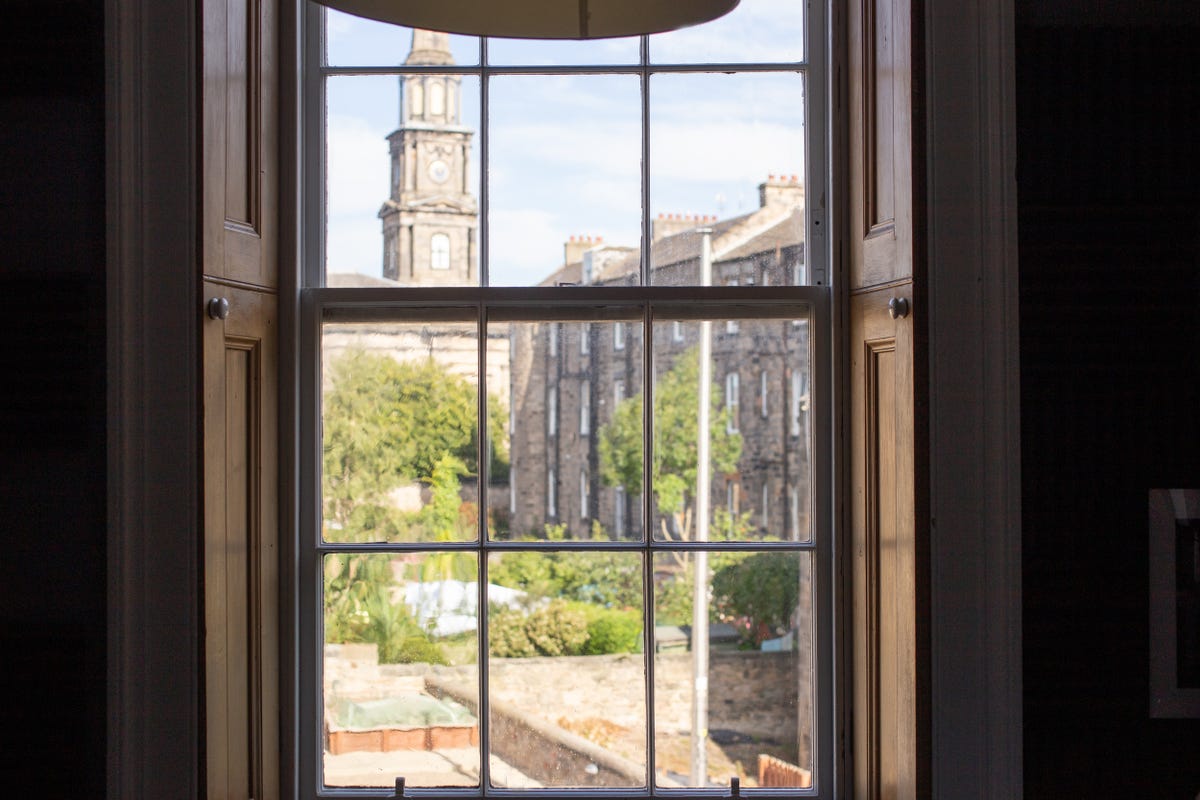

Those big, old windows might look great, but single panes of glass are not good at keeping the heat in.
Andrew Lanxon/CNET
Replace those old windows with better ones — or get good drapes
While we’re on the subject of expensive options, let’s talk windows. Many period properties boast extremely large windows that may offer lovely views and allow in plenty of natural light, but can also let a lot of heat escape in the colder months. Replacing old windows can therefore be a good way of keeping the heat in, especially if those old windows have single panes of glass. Double glazing is much more heat-efficient.
Check that the rubber seals are in good condition too. If there are any gaps where air can get in, the sealant could always be replaced without having the expense of replacing the whole window.
Unfortunately double-glazed windows are not cheap, especially on period properties. Replacing the windows in my property would likely be over $30,000, which is simply money I do not have to spare. If replacing the windows is not an option, consider using thicker curtains which, when closed, can help seal off the window and stop drafts from getting in.
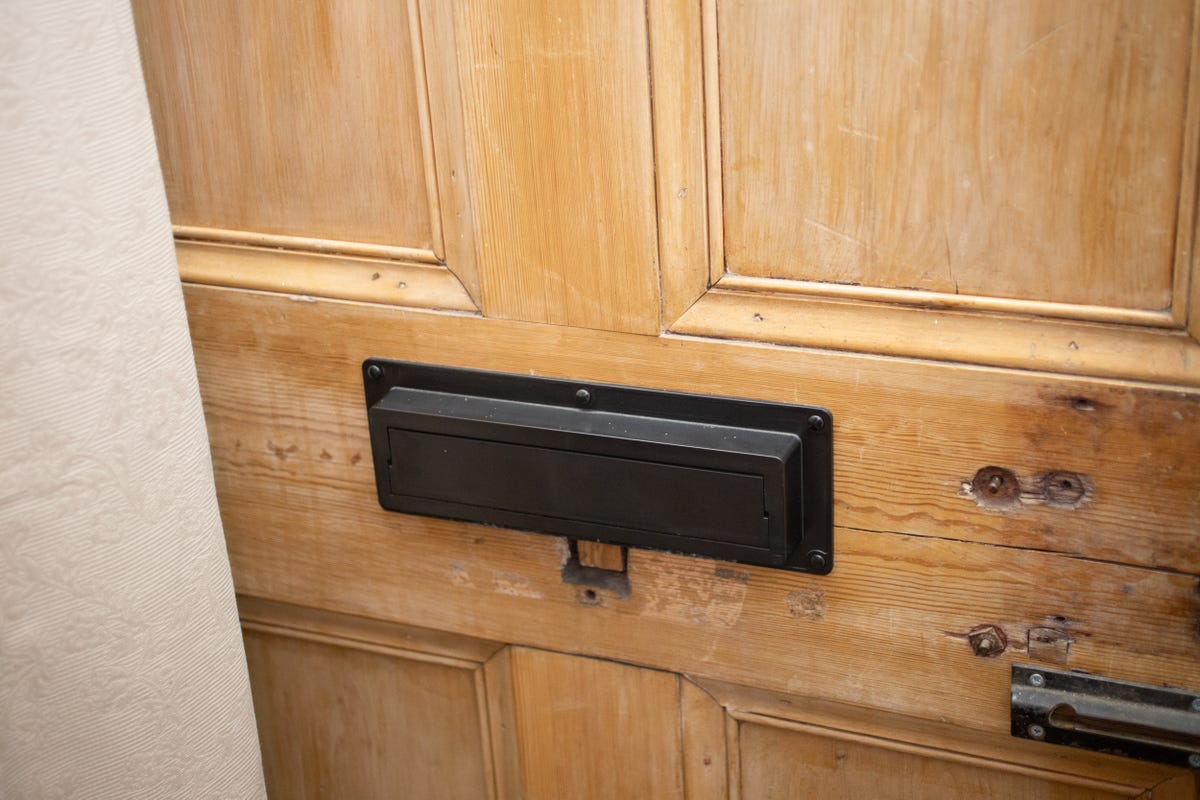

If your front door has a mail slot, fitting a draft excluder around it is highly recommended.
Andrew Lanxon/CNET
Seal or cover areas with drafts
If your house has areas with drafts, it’s going to be even more difficult to keep the heat in, so it’s important to hunt down those problem areas and plug them up well. Usually you’ll be able to tell where they’re coming from, and it’s typically worse anywhere that separates the inside from the outside. Drafts around exterior doors are common, especially if you have an older door.
Consider sticking foam draft tape around the inside of your door frame so your door creates a tight seal when closed. If your door has a letterbox, make sure it has a draft excluder (a sealed box or bristles that stops air getting through), and if there is a gap under the door then get a draft stopper (one of those long sausage-shaped cushions) to help keep the drafts at bay.
Again, checking the seals around your windows is important. And don’t forget about using thicker curtains.
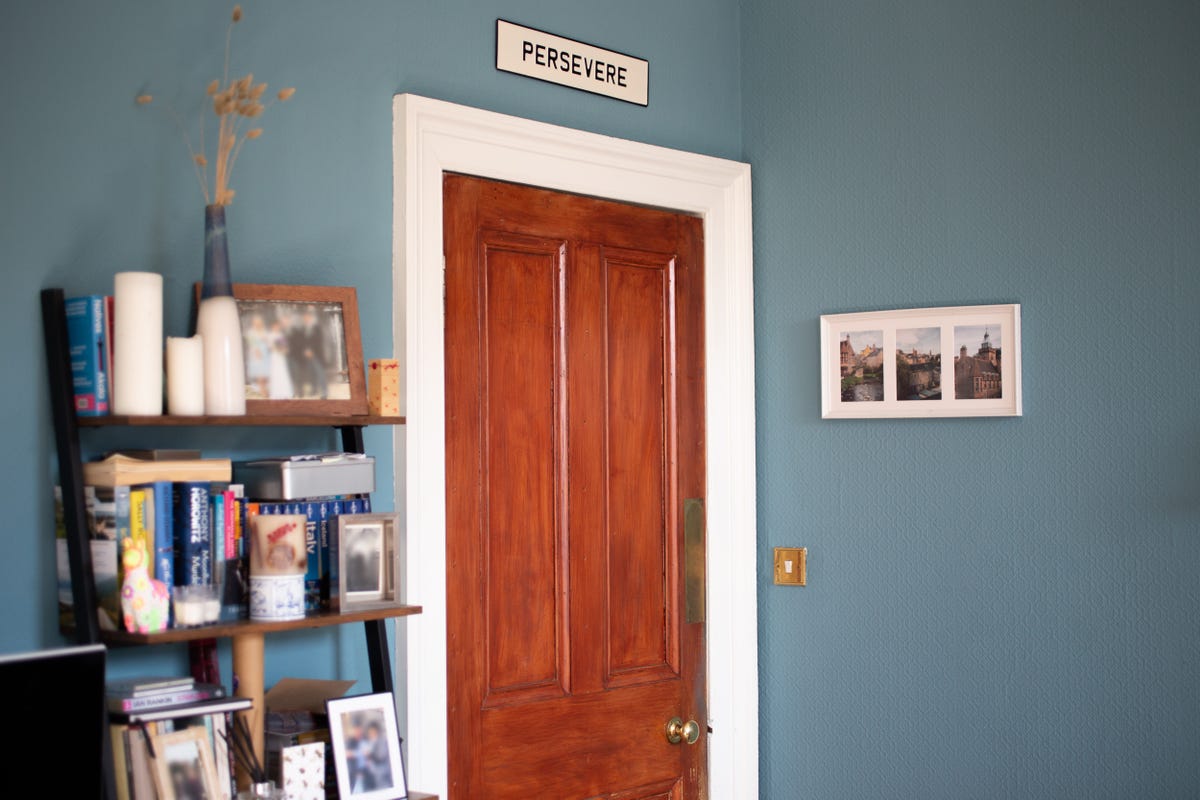

Simply keeping your internal doors closed can make it much easier to heat the room you’re in and stop that heat escaping to other parts of the house.
Andrew Lanxon/CNET
Keep interior doors closed
It’s one of the cheapest and simplest things to do, but keeping your interior doors to your rooms closed can make a big difference in heating your home. It has two benefits. First, it helps keep any errant drafts under control and stops them seeping into your cozy living room and giving you the chills.
Second and even more important, it keeps the heat in, meaning if you have the heating (radiators or stand-alone heaters) on in your living room, that heat doesn’t escape, meaning less money spent overall. Extra bonus if those interior doors are also sealed with draft-proof tape.
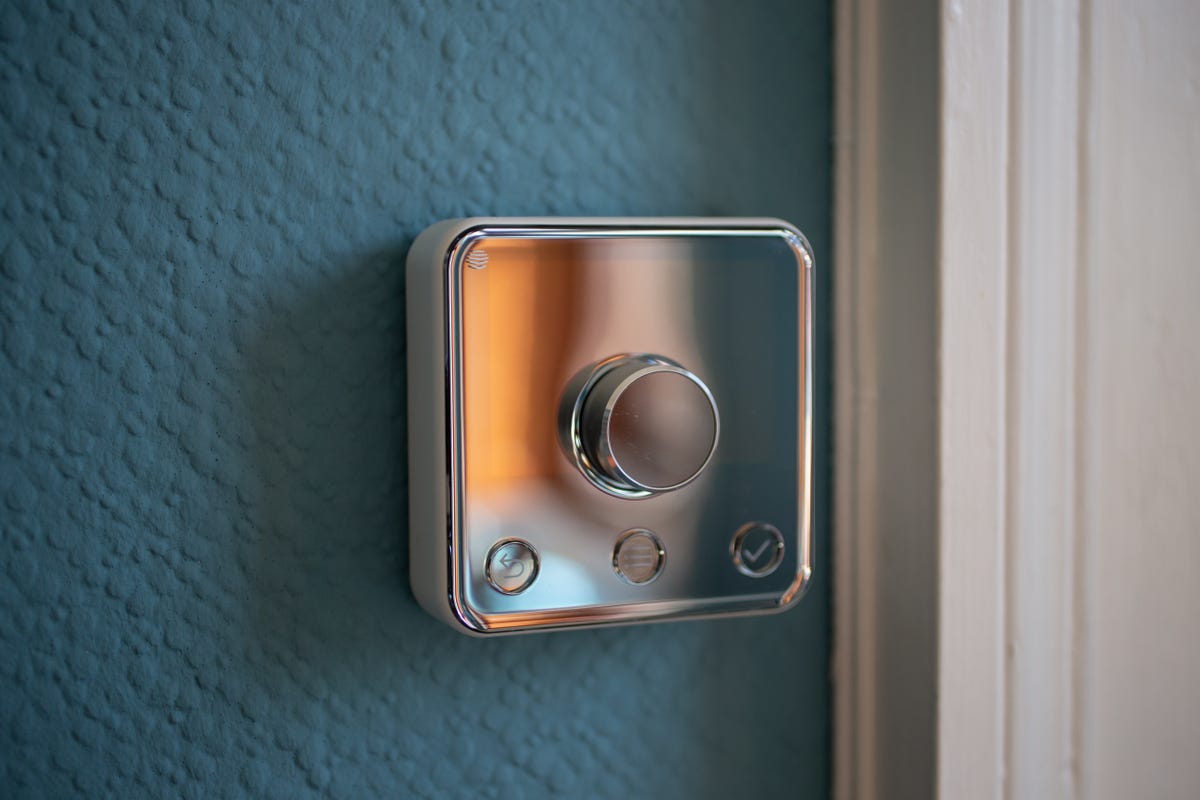

Using smart thermostats like Hive allows you to more easily schedule your heating to only warm up your house when you need it.
Andrew Lanxon/CNET
Get a smart thermostat and upgrade your radiator valves
Your home’s central heating is usually the best way to warm the place up, but older systems tend not to be particularly efficient and often end up heating the whole home needlessly and at times when you don’t even need it.
So consider switching to a smart thermostat like the Amazon Smart Thermostat, the Google Nest Learning Thermostat or, in my case, the Hive thermostat. These allow you to program exactly when you want the heat to turn on and to what temperature — and then when you want it to turn off. It allows you to have the house nice and toasty when you get up for your morning shower, and it can shut off when you head out to work.
But you can take it a step further with smart radiator valves too. Smart valves, like the Hive ones I’m using, allow you to heat up only the specific rooms you need at specific times — the bedroom and bathroom in the morning and the living room in the evening, for example — meaning no energy is wasted on heating up rooms you’re not using.
Read more: Best Affordable Smart Thermostats of 2022
Use portable heaters
As with smart valves, using a small, portable heater can be a more efficient way to heat only the rooms you need. This can be especially useful for those of you working from home, when you can use a simple plug-in heater that will direct a flow of warm air just to you, rather than having to turn on your home’s central heating system.
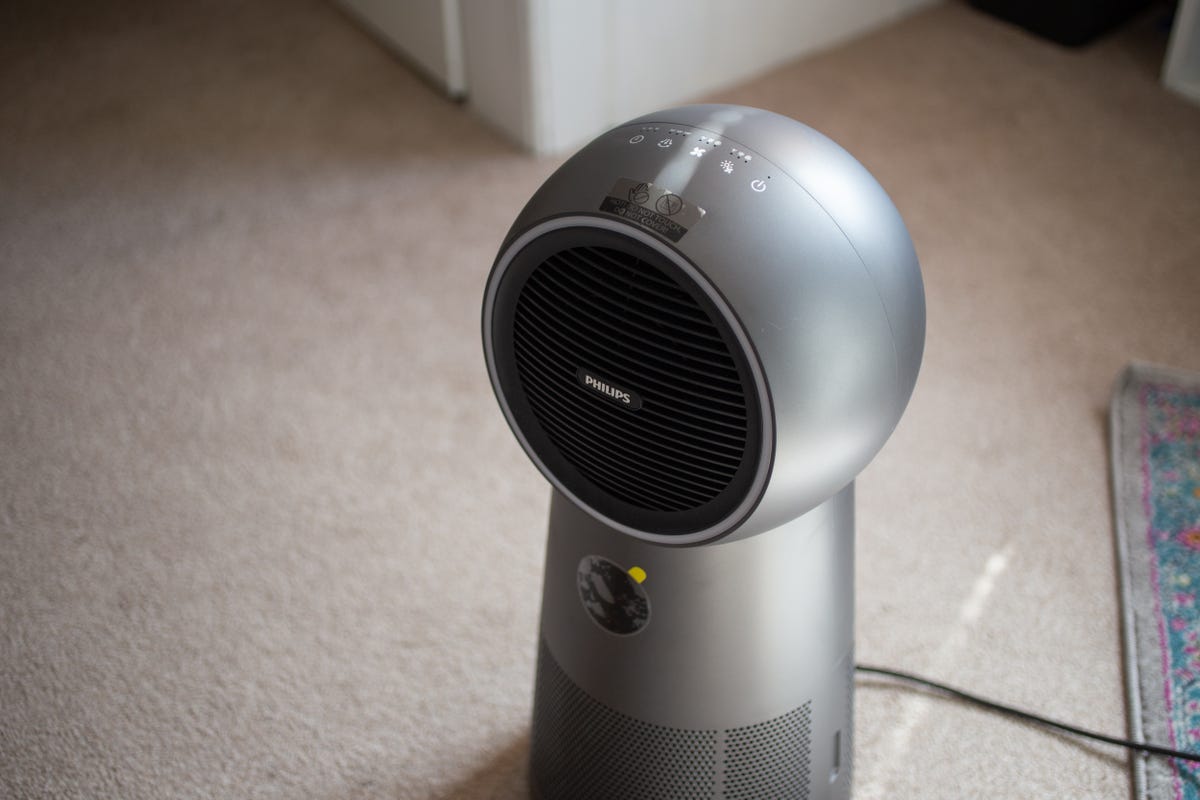

Portable heaters aren’t going to keep your whole house toasty and warm, but if you work from home and want to keep your office area warmer it can be more cost effective to use plug-in heaters than keeping your central heating turned up.
Andrew Lanxon/CNET
I found that the Philips 2000 Series 3-in-1 heating fan does a great job of adding an extra blast of heat when I need it, with the benefit that it also filters the air and acts as a cooling fan in the summer months. Plug-in fans and panel heaters might not always be super energy efficient if you leave them on 24/7, but they can be great for giving a warm boost without having to heat the whole home. (Be sure to check out our space heater safety guide as well.)
Read more: Best Garage Heaters for 2022
Dress warmer
It might sound obvious, but simply dressing for warmth when you’re at home can save you a lot on your heating bills. And perhaps you already do, but there are many of us who are guilty of sitting at home on a winter’s evening in a T-shirt thinking “I’m a bit chilly, actually” and then whacking the heating up.
Instead, perhaps having a nice stack of fluffy sweaters or some lovely knitted blankets could help give you that cozy feel without the expense of turning your heating up higher.
For more tips to help you save money this winter, check out how weatherstripping your home can lower your bills and how much you can save by changing your furnace filter.
The post It’s Expensive to Heat An Older Home, But Here’s How You Can Save first appeared on Joggingvideo.com.
]]>The post Best Samsung Phone for 2022 first appeared on Joggingvideo.com.
]]>Samsung has a lot of phones to choose from in all prices and sizes. There’s the top-of-the-line Galaxy S22 Ultra, which starts at $1,200, the $180 Galaxy A12 and many other choices in between.
Whether you want a high-performance phone with one of the best cameras available or a more affordable device that nails the basics, there’s a Samsung phone for you.
If you want the flashiest tech around — and you have deep pockets — then the company’s latest Galaxy Z Fold 4 and Galaxy Z Flip 4 pack innovative foldable displays that are certainly eye-catching. Samsung’s nonfolding — in other words, regular — phones like the Galaxy S21 FE, Galaxy S22 lineup and Galaxy A53 5G all arrived in 2022, so they should still feel fresh and new. Samsung has also committed to supporting four generations of Android security and operating system updates on these devices.
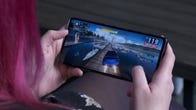

Now playing:
Watch this:
Galaxy A53 5G Review: Samsung’s $450 Phone Feels More…
8:29
But if you can hang on for several more months, you might want to wait before making a purchase. Since Samsung typically launches its new Galaxy S phones within the first couple of months of the year, we are likely to see a successor to the Galaxy S22 sometime between January and March 2023.
Finding the best Samsung phone will ultimately come down to preference. Choosing among so many options can get complicated, so here’s how to decide which Samsung phone is best for you.
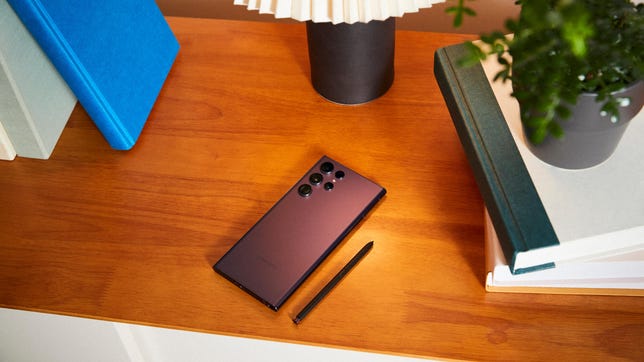

Samsung
Galaxy S22 Ultra
Biggest screen and best camera
Sep 2022
The $1,200 Galaxy S22 Ultra is Samsung’s most expensive phone that isn’t a folding phone. With its giant 6.8-inch screen and four-lens camera, it’s best for those who want the largest screen and best camera possible in a new Samsung phone. Unlike last year’s model, the Galaxy S22 Ultra also comes with Samsung’s S Pen stylus at no additional cost, just like Samsung’s older Galaxy Note devices.
At 6.8 inches, the Galaxy S22 Ultra is noticeably larger than the 6.6-inch Galaxy S22 Plus and 6.1-inch Galaxy S22. The camera is also one of the biggest reasons you should consider this phone over Samsung’s smaller and cheaper devices. While all three new Galaxy S22 phones can take better photos in the dark and have improved color and contrast, the S22 Ultra is the only one with two telephoto lenses. As a result, the S22 Ultra has the closest zoom of any Samsung phone — and perhaps any phone, period. It also has a 108-megapixel main sensor similar to the one in last year’s phone, along with a 12-megapixel ultrawide camera and the two 10-megapixel zoom lenses.
The Galaxy S22’s high price and large size are probably too much for most people, and its battery life could be better. But for those who love big screens and who really want a superior zoom camera and the S Pen for taking notes, the S22 won’t disappoint.
Read our Samsung Galaxy S22 Ultra review.
$1,050 at Samsung$1,200 at TargetGet Price Alerts$1,000 at AmazonYou’re receiving price alerts for Samsung Galaxy S22 Ultra (128GB, Phantom Black)
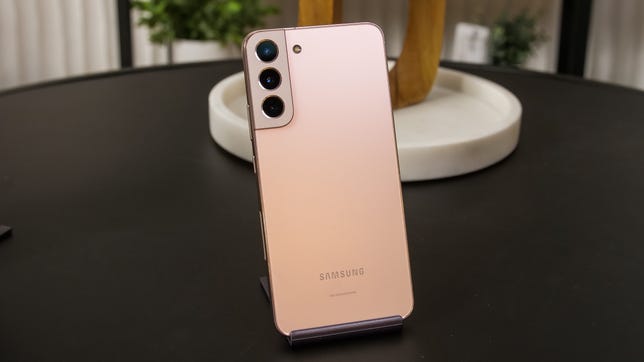

Richard Peterson/CNET
Galaxy S22 Plus
Just the right size
The Galaxy S22 Plus is the middle child of the Galaxy S22 lineup, but don’t overlook it. Its 6.6-inch screen size is just right for most people, it has a sharp new glass-and-metal design and the camera has gotten a major upgrade compared with the S21 generation. Although it’s a bit pricey at $1,000, it feels like the right option for those who want a screen that’s big but not gigantic paired with one of the best cameras around.
Many of the updates Samsung made across the Galaxy S22 lineup are iterative, like the phones’ new processors and refreshed designs. But the jump from the Galaxy S21’s 12-megapixel camera to the S22’s 50-megapixel camera is perhaps the most noticeable improvement. Both the Galaxy S22 Plus and regular Galaxy S22 have this new camera system, along with other internal camera enhancements, which results in better low-light performance, color and detail. The Galaxy S22 Plus also lasted the longest in CNET’s battery test of Samsung’s Galaxy S22 phones, although battery life still felt average rather than impressive.
Overall, the Galaxy S22 Plus is the best choice for those who want a premium phone with a top-notch camera and a large, bright screen.
Read our Samsung Galaxy S22 Plus review.
$900 at Samsung$930 at AmazonGet Price Alerts$1,000 at Best BuyYou’re receiving price alerts for Samsung Galaxy S22 Plus (128GB, Green)
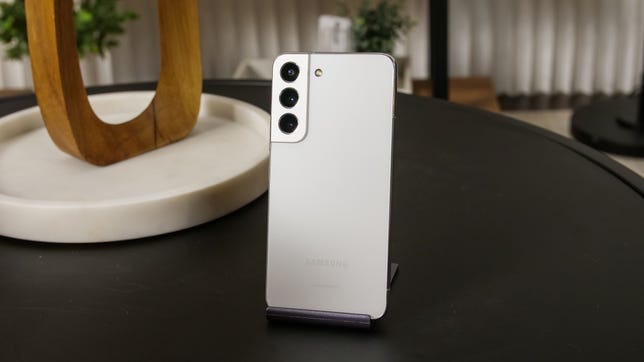

Richard Peterson/CNET
Galaxy S22
For people who prefer smaller phones
Android users don’t have much choice when it comes to small phones, but Samsung is changing that with the Galaxy S22. The standard Galaxy S22 has a 6.1-inch screen, whereas many competing Android phones have displays that measure around 6.4 inches or larger.
The $800 Galaxy S22 otherwise brings many of the same benefits as the Galaxy S22 Plus. That includes a 50-megapixel camera with better low-light photography, a new processor and a revamped design that feels more elegant than the S21. It’s essentially a smaller version of the Galaxy S22 Plus, except the Plus also has a bigger battery, faster charging and ultrawideband support.
The Galaxy S22 is the best option for those who want a more compact phone that still has most of the premium features found in Samsung’s bigger and more expensive phones. Just keep in mind that the Galaxy S22’s smaller size also comes along with shorter battery life than the S22 Plus and S22 Ultra.
Read our Samsung Galaxy S22 review.
$750 at Samsung$689 at AmazonGet Price Alerts$700 at TargetYou’re receiving price alerts for Samsung Galaxy S22 (128GB, Phantom Black)
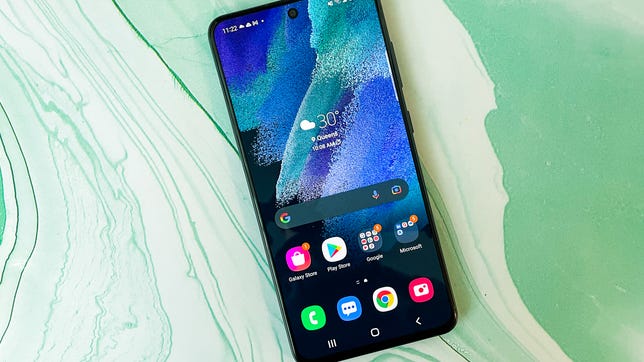

Lisa Eadicicco/CNET
Galaxy S21 FE
Flagship tech at a more approachable price
The first S20 FE seriously impressed us with its balance of performance and price, and the new Galaxy S21 FE takes that further with a solid triple camera, a vibrant display and the same powerful processor found in the flagship S21. It has a 6.5-inch screen, making it an ideal choice for those who want a phone that’s larger than the regular Galaxy S22 without the Galaxy S22 Plus’ high price. Although it’s missing some of the Galaxy S22’s bells and whistles — like improved night photography and a newer processor — this phone has a sharper front-facing camera for selfies and video calls.
The Galaxy S21 FE faces some tough competition from Google’s Pixel 6, but if you’re after a great overall Samsung phone and don’t want to pay top dollar for the flagships, then the S21 FE is well worth considering.
$600 at Target
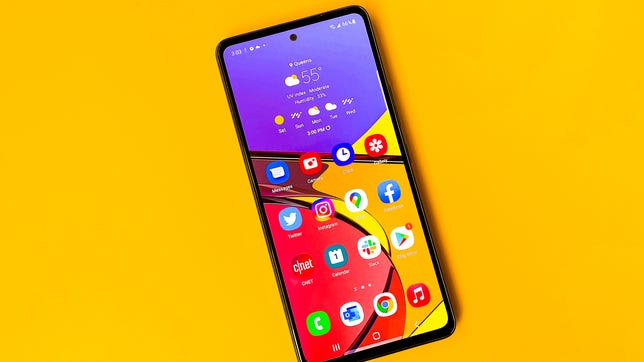

Lisa Eadicicco/CNET
Galaxy A53 5G
Midrange value
New for 2022, the Galaxy A53 gets you a plethora of Samsung features and power at a fraction of the S-series price. It boasts a far larger screen and more versatile camera cluster than the iPhone SE, though Apple’s budget model delivers snappier performance.
Still, Samsung fans will appreciate what they’re getting here considering the affordable price. The Galaxy A53 5G has an ultrawide lens for taking photos with a broader field of view and also supports night-mode photography. Image quality isn’t as good as what you’d get on a more expensive Samsung phone like the Galaxy S21 FE or Galaxy S22, but it’s certainly clear and colorful enough for basic shots. Other highlights include a long-lasting battery, four guaranteed generations of Android operating system updates and a microSD card slot for expandable storage.
Overall, the Galaxy A53 5G is a suitable choice for those who prioritize having a large screen and long battery life for less than $500. Just keep in mind you might have to deal with some occasional lag, and the camera isn’t as advanced as those found on pricier phones. Read our Samsung Galaxy A53 5G review.
$450 at Samsung$350 at TargetGet Price Alerts$350 at Best BuyYou’re receiving price alerts for Samsung Galaxy A53 (Unlocked)
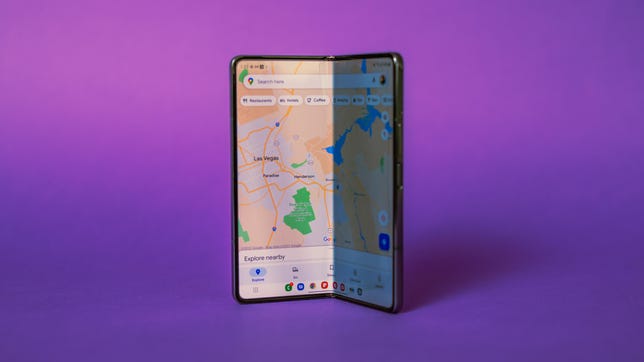

James Martin/CNET
Galaxy Z Fold 4
Best foldable phone
Usually priced at $1,800 (yikes!), the Galaxy Z Fold 4 still costs substantially more than your average smartphone. But the latest version of Samsung’s book-style foldable is filled with small improvements that add up to a much more pleasant overall experience. The hinge is thinner, the device is slightly lighter and the cover screen is a bit wider, making it feel more natural to use as a phone when closed. That’s on top of other routine smartphone upgrades like a better camera that’s similar to the Galaxy S22’s and a new processor. Our reviewer Patrick Holland called it his “favorite Android tablet.”
If you already have a Z Fold 3, it’s not worth upgrading. But if you’re willing to spend big (or can find a good trade-in deal) and are interested in a phone that can double as a tablet, the Z Fold 4 is the way to go.
Read our Samsung Galaxy Z Fold 4 review.
$1,800 at Samsung$1,720 at AmazonGet Price Alerts$1,920 at Best BuyYou’re receiving price alerts for Samsung Galaxy Z Fold 4 (512GB, Phantom Black)


Patrick Holland/CNET
Galaxy Z Flip 3
Samsung’s smaller folding phone
If the Galaxy Fold is a tablet that folds in half to become a phone, the Z Flip is a phone that folds in half to become a smaller phone. The Galaxy Z Flip 3 is a generation older than the newly released Galaxy Z Flip 4. But we recommend it over the Z Flip 4, since it’s $100 cheaper and has many of the same benefits. The Z Flip 4 has a new processor, larger battery, a new main sensor for taking better low-light photos and a slightly tweaked design. That might sound like a lot, but these changes come together to make only a slightly improved experience over last year’s Flip 3.
With the Z Flip 3, you’re still getting a 6.7-inch display that folds in half and can easily slide into a jeans or jacket pocket. The cover screen is also the same size on both phones, and the Z Flip 3 and 4 each have similar cameras and 5G connectivity. At $900, it’s now the most affordable foldable phone Samsung sells. Unless you can find the Z Flip 4 at a discount that makes it the same price as the Z Flip 3, we recommend going for last year’s phone.
Read our Samsung Galaxy Z Flip 3 review.
$1,000 at Target$830 at AmazonGet Price Alerts$850 at Best BuyYou’re receiving price alerts for Samsung Galaxy Z Flip 3 (128GB, Black)


Samsung
Galaxy A42 5G
Affordable, 5G and a big screen
The A42 5G Android phone sits just below the A52, provides less RAM, loses the macro camera and has a lower-resolution front-facing camera. It still has 5G connectivity though, along with a bigger battery and a marginally bigger display, which could make it a great affordable Samsung phone option for those of you who watch a lot of videos on the move.
$400 at Samsung
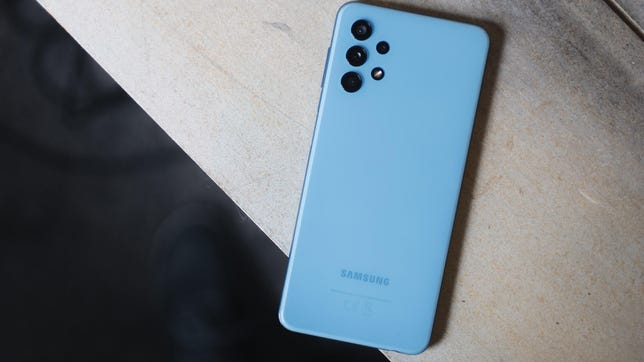

Andrew Hoyle/CNET
Galaxy A32 5G
Samsung’s cheapest 5G phone
If 5G speeds are your top Android phone priority but you don’t want to spend much money, Samsung’s Galaxy A32 5G is where you should be looking. Its low price makes it one of the cheapest 5G-enabled Samsung Galaxy phones that it’s possible to buy right now, and you still get a big 6.5-inch display and a multiple rear camera setup. It’s not challenging the overall performance of the S21 line, but it’s a solid all-rounder device for the money.
$280 at Samsung


Samsung
Galaxy A12
Cheapest Samsung Galaxy phone
The Galaxy A12 is one of the cheapest phones Samsung sells and it’s the one to consider for those of you who simply want a phone for all of life’s essentials. If you don’t care for extravagant cameras or supercomputer-levels of processing power, you won’t have to pay for them with this model. It doesn’t have 5G, but it does have four rear cameras, a 6.5-inch display and a capacious 5,000-mAh battery. Given the generally low demands of the specs, that battery should easily last a full day.
The camera is one of the biggest factors that distinguishes the Galaxy A12 from Samsung’s other less expensive phones. During CNET’s testing, the Galaxy A12 took noticeably better photos than the cheaper Galaxy A03S and Galaxy A02S, especially in low light. Just remember you’ll likely have to buy a microSD card since the A12 only comes with 32GB of built-in storage.
Samsung also recently launched the Galaxy A13, which has 5G, more storage and a sharper 50-megapixel camera, which could be worth considering when searching for Samsung Galaxy phones.
Read our Samsung Galaxy A12 review.
$180 at Samsung
The post Best Samsung Phone for 2022 first appeared on Joggingvideo.com.
]]>The post Best Phones Under $500 for 2022: Pixel 6A, iPhone SE, Galaxy A53 and More first appeared on Joggingvideo.com.
]]>This story is part of Gift Guide, our year-round collection of the best gift ideas.
In the market for a new phone, but wary about dropping serious cash on something that you might lose or break? There are tons of affordable options in the $400 to $500 range, and while you may be worried that cheap phones won’t function as well, there are some incredible models that have a lot to offer for the price. For hundreds less than some of the more popular and pricey phones out there, you can get the latest processors from Apple and Google, years of software updates, stunning cameras and much more.
Even the best phones under $500 will still make some compromises when compared to pricier phones, but nothing that prevents you from being able to do everything you’d like from playing games to hosting video chats and multitasking. Instead, you should note what the phone excels at and whether that makes up for an area where it might not. Some of these devices have 120Hz refresh rate screens with silky animations, but might use a slightly slower processor. Others do the opposite and put a brand-new, blazing fast processor into a phone body that has smaller screen and a 60Hz refresh rate.
This list below has the best phones under $500. Check back often, since we update it with cheaper phone options regularly, and check out CNET’s in-depth reviews of each product to help you find exactly what you need (and what to look out for). We’ve attached links to unlocked versions of each phone on our budget phone list so that you can meet individual needs with the best phone under $500. Needs vary, so you’ll want the one with the flexibility and specific stats you desire. Unlocked phones run on most of the big four US wireless carriers, except for rare exceptions that are specified below.
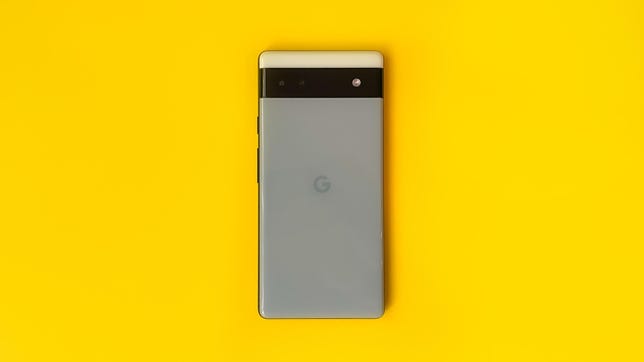

Lisa Eadicicco/CNET
Pixel 6A
Best Android phone under $500
The Pixel 6A is Google’s newest Android 12 phone, replacing the Pixel 5A as the $449 budget-friendly version of its flagship phone. CNET’s Lisa Eadicicco called it the “best Android phone under $500” in her Pixel 6A review, calling out how it keeps the same Tensor chip seen in the $599 Pixel 6 and many of its features.
The phone is slightly smaller than the Pixel 6, featuring an 6.1-inch OLED display and a refresh rate of 60Hz. And it has a similar camera to the Pixel 5A, including a 12.2-megapixel main camera and a 12-megapixel ultrawide camera. But by including the Tensor chip, photos can benefit from its Real Tone skin tone feature, Face Unblur, Night Sight for darker photography and the Magic Eraser for removing unwanted elements from a photo.
$399 at AmazonYou’re receiving price alerts for Google Pixel 6a (128GB, Charcoal)
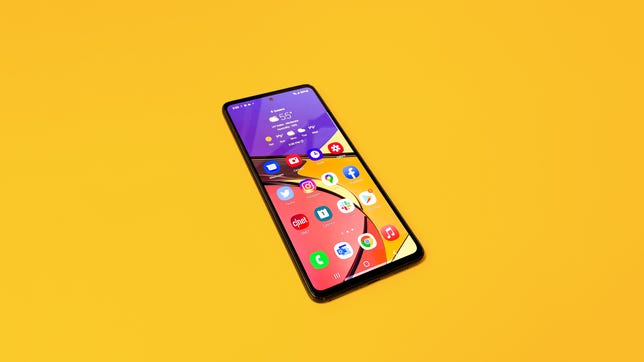

Lisa Eadicicco/CNET
Samsung Galaxy A53
Best for software support
The $450 Samsung Galaxy A53 includes many of the best features seen in the Galaxy S22 line, with a few tradeoffs to hit that lower price. The phone includes a 6.5-inch AMOLED screen with a 2,400×1,080-pixel resolution, 5G support and a long-lasting 5,000-mAh battery. The phone also comes with a 64-megapixel main camera, 12-megapixel ultrawide camera, 5-megapixel macro camera and 5-megapixel depth camera.
But a particular high point for this phone is Samsung’s pledge to provide four years of software support, in addition to shipping with Android 12 with Samsung’s One UI 4.1.
Read our Samsung Galaxy A53 5G review.
$450 at Samsung


Kevin Heinz/CNET
iPhone SE 2022
Best for a smaller phone
The iPhone SE is a mix of an older design with the latest smartphone features, including Apple’s A15 Bionic chip and 5G support. It’s also one of the few phones on the market that includes a smaller 4.7-inch screen.
It’s that throwback design, which continues the general shape that Apple has used since 2014, that could be what you love or dislike most about this phone. If you want a larger iPhone in this price range, you can also consider the iPhone 11, and get a bigger screen and Face ID. But that phone does not include 5G connectivity.
Read our Apple iPhone SE review.
$429 at Apple$429 at AmazonGet Price Alerts$430 at Best BuyYou’re receiving price alerts for Apple iPhone SE (64GB, Starlight)
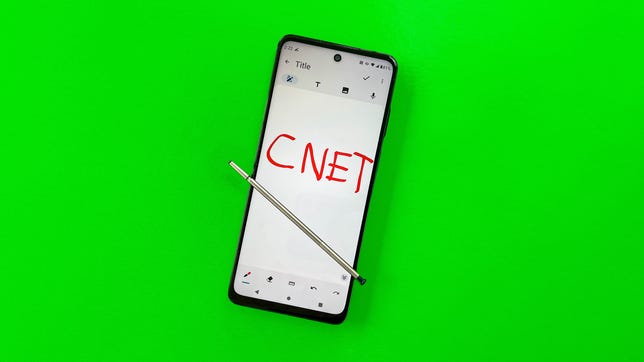

Mike Sorrentino/CNET
Moto G Stylus 5G
Best for a stylus
The $500 Moto G Stylus 5G (2022) is one of the best stylus-equipped phones you can get right now, especially for the price. You get Android 12, 5G connectivity, a large 6.8-inch screen and a spacious 256GB of storage. Unfortunately, the phone is only promised one software update and three years of security updates, which is a much shorter timeline than the four years promised by Samsung for the Galaxy A53.
Yet if you want a stylus-equipped phone, the next step-up option is the substantially more expensive Galaxy S22 Ultra at $1,200.
Read our Moto G Stylus 5G review.
$350 at Amazon
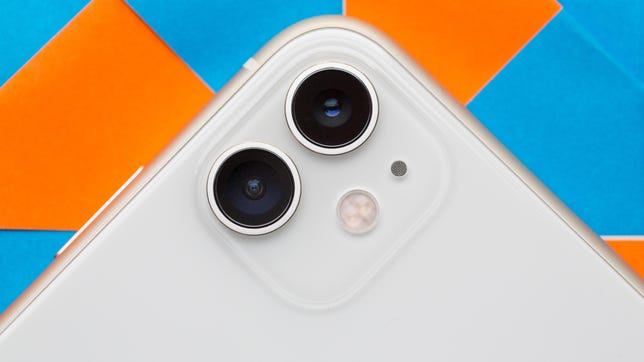

Angela Lang/CNET
iPhone 11
Good all round
Nov 2019
With the launch of the iPhone 14 series, Apple discontinued the iPhone 11, but it’s still widely available. It might be a few generations old, but this phone is still more than capable, handling gaming well and equipped with two superb rear cameras. Just note that Best Buy does not carry any unlocked models, so you’ll have to sign up for a service plan through either AT&T, Verizon, T-Mobile or Sprint.
Read our Apple iPhone 11 review.
$500 at Best BuyGet Price AlertsYou’re receiving price alerts for Apple iPhone 11 (Black, 64GB)
More phone advice
- Best Android Phone for 2022
- Best MagSafe Accessories for the iPhone
- Best Prepaid Phones for 2022
- Samsung’s Galaxy Phones: Which Should You Buy?
- SIM Card Swap Fraud: What It Is and How to Prevent It
- Best Cheap Phones Under $200: Top Picks and New Budget Phones
- Best iPhone Fast Charger for 2022
- Best iPhone for 2022: Which of Apple’s 8 Phones is Right for You?
Find The Perfect Gift
AllUnder $10Under $20Under $50Under $100Under $250allmomsdadsgrandparentsfitnesstravelersteenspreteenstechgamingfoodiesromanticjewelryhomekids107 results
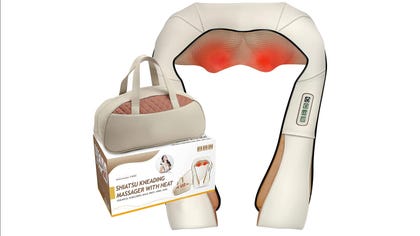
Five S Kneading Massager
$35 at Amazon

Hydro Flask
$35 at Hyrdo Flask

Nintendo eShop Gift Card
$50 at Amazon

Fox in the Forest
$12 at Amazon

SteelSeries Arctis 1
$50 at Amazon

Jacques Torres bonbons
$55 at Jacque Torres

A bouquet of exotic meats
$90 at Man Crates
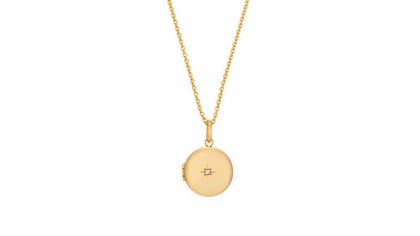
Sarah Chloe diamond locket
$145 at Sarah Chloe

The Bouqs Co. Pixie bouquet
$99 at The Bouqs Co.

Sweet heart bamboo
$35 at Plants.com

Max Brenner chocolates
$37 at Max Brenner

Ingarden microgreens garden
$100 at Amazon

Shun Sora Japanese petty knife
$70 at Amazon
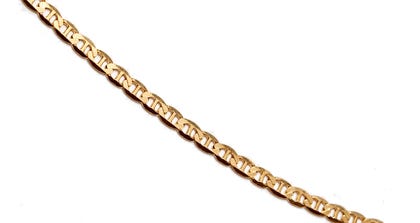
Wolf Circus Toni gold bracelet
$95 at Wolf Circus

Champagne Gummy Bears
$9 at Sugarfina

MakiMaki sushi roll kit for 2
$125 at MakiMaki

Cote des Roses rosé
$16 at Wine.com

Flavored Truffle Gift Box
$38 at La Maison du Chocolat

Barrel Aged Hot Hive Honey and Reaper Salt Series
$40 at Fuego Box

Carrie Hoffman X studs earrings
$290 at Carrie Hoffman

Wanna Date? sweet date spread
$12 at Uncommon Goods

Italian olivewood serving board
$17 at Sur la table
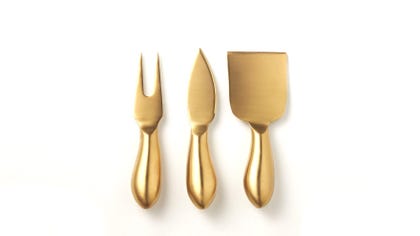
Three-piece cheese knife set
$20 at CB2

A delivery of fresh pasta
$25 at Goldbelly


Maison Miru heart nap earrings
$75 at Maison


Bokksu Japanese snack box
See at Amazon
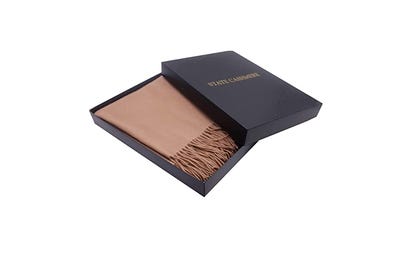

State cashmere blanket throw blanket
See at Amazon
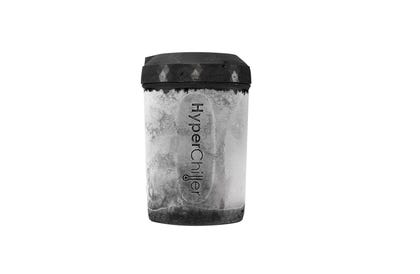

HyperChiller
See at Amazon


Nixplay smart digital photo frame
$20 at CB2


Online cooking classes
See at Online Cooking School
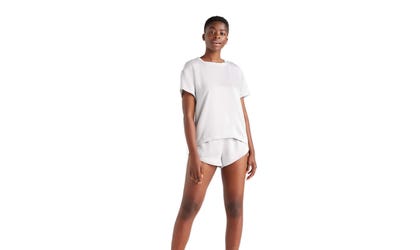

Washable Silk Tee & Shorts
See at Quince


Ouai Chill Pill Bath Bombs
See at Ulta


60 Hour Candle
See at TheraBox


Dyson Supersonic hair dryer
See at Dyson


Mint & Lily Mama necklace
See at Mint & Lily
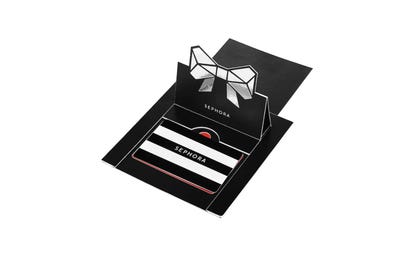

Sephora gift card
See at Sephora
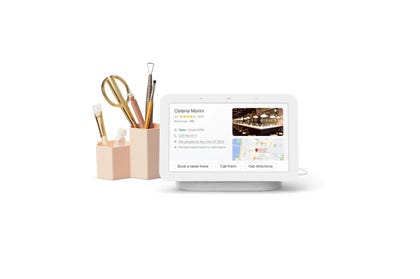

Google Nest Hub
See at Google


Theragun Prime
See at Therabody


Matador NanoDry Towel
See at REI


Mixbook
See at Mixbook
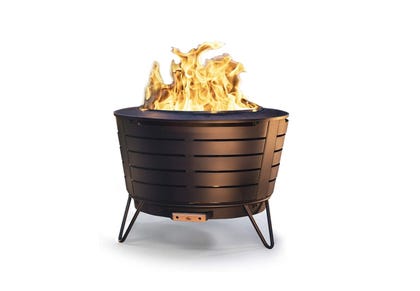

Tiki fire pit
See at Amazon
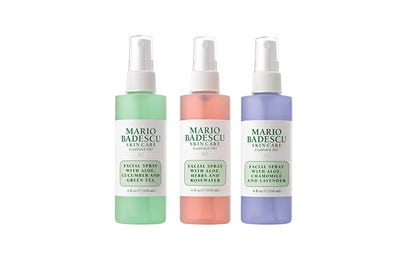

Mario Badescu face spray set
See at Ulta


Flower delivery from BloomsyBox
See at BloomsyBox


Slip silk pillowcase
See at Amazon


Aarke water carbonator
$230 at Bed Bath & Beyond


Disney Plus Gift Subscription
$80 at Disney


DJI Minin 2 Fly More Combo
$600 at Amazon


Fujifilm Instax Mini 11 Instant Camera
$69 at Amazon
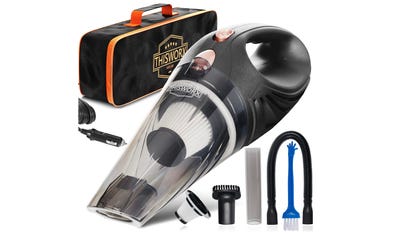

ThisWorx Portable Car Vacuum Cleaner
$36 at Amazon


Perfect Pot
$165 at Our Place


Letterfolk Customizable Tile Mat
$75 at West Elm


Parks Project Candle
$36 at Parks Project


iPad Mini 2021
$500 at Best Buy


Crown & Paw Pet Canvas
$50 at Crown & Paw


Coravin Wine Preservation System
$150 at Target


Botley 2.0
$47 at Amazon


Arcade1Up Arcade Machine
$600 at Best Buy


Biolite TraveLight 135
$40 at Biolite


Blockaroo Blocks
$40 at Amazon
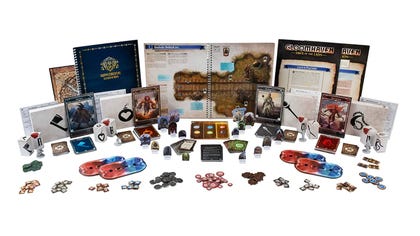

Gloomhaven: Jaws of The Lion Board Game
$32 at Amazon


JBL Go 3
$50 at Amazon


Illy Y3.3 Espresso and Coffee Machine
$149 at Amazon


Lenovo Smart Clock
$35 at Best Buy
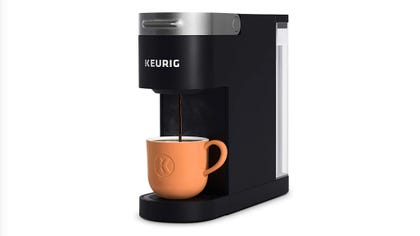

Keurig K-Slim Coffee Maker
$79 at Amazon


Lego Speed Champions Corvette
$30 at Amazon


Madewell Transport Tote
$178 at Madewell


Lunya Silk Sleep Mask
$48 at Lunya
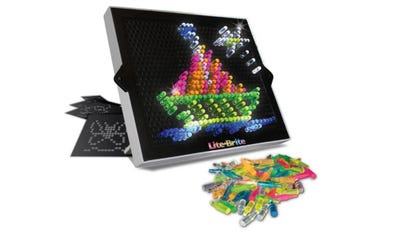

Lite-Brite
$13 at Target


Lodge Cast-Iron Grill Pan
$20 at Amazon


Wyze Cam v3
$36 at Amazon
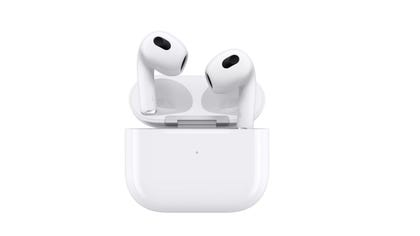

Apple AirPods 3
$150 at Amazon


EarFun Air Pro 2
$80 at Amazon


Sony WF-1000XM4
$250 at Walmart


Sony PlayStation 5
$499 at Amazon


Roku Express 4K Plus
$39 at Amazon


Apple iPad 2021 (9th generation)
$280 at Amazon


Acer Chromebook Spin 713
$530 at Amazon


MacBook Air M1
$1,000 at Best Buy


Bose SoundLink Flex
$150 at Best Buy


Dell G15
$1,100 at Best Buy
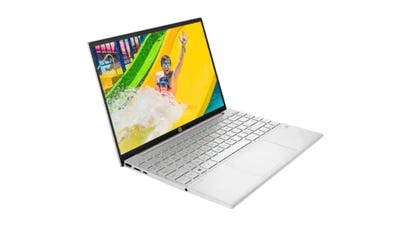

HP Pavilion Aero 13
$1,000 at HP


Lenovo Yoga 7i (2-in-1)
$850 at Best Buy


Mosaic Plant-Based Meal Delivery
$70 at Mosaic
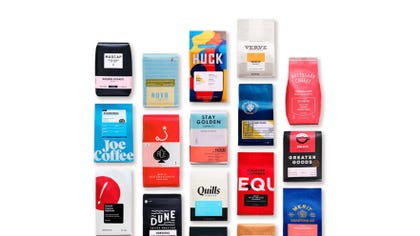

Trade Coffee Subscription
$40 at Trade


Vizio MQ7 65-inch
$1,000 at Amazon


Apple Watch SE
$269 at Amazon


Apple Watch Series 7
$399 at Best Buy


Atlas Tea Club
$199 at Atlas Tea Club


iPhone 11
$499 at Apple
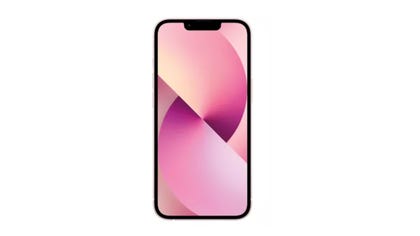

iPhone 13
$799 at Apple


Fitbit Charge 5
$179 at Amazon


Google Pixel 6
$599 at Amazon
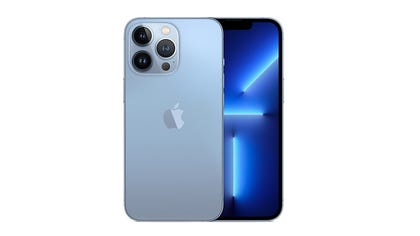

iPhone 13 Pro
$999 at Apple
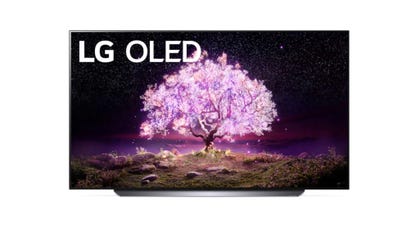

LG C1 OLED 65-inch
$1,797 at Amazon


Samsung Galaxy S21 Ultra
$1,166 at Amazon
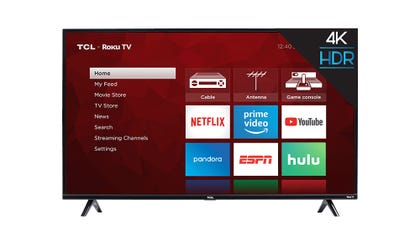

TCL Series 4 TV 65-inch
$529 at Amazon


TCL Series 6 TV 65-inch
$999 at Amazon


Theragun Mini
$199 at Amazon
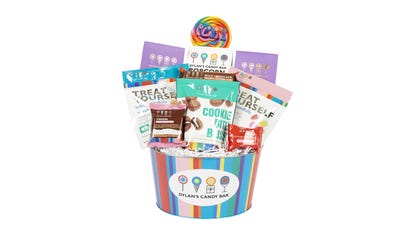

Best of Dylan’s Candy Bar Gift Basket
$100 at Dylan’s Candy Bar
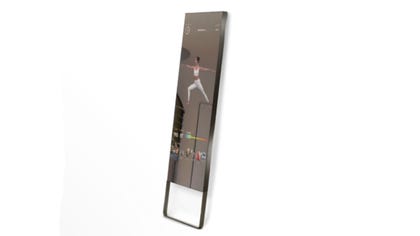

The Mirror
$1,495 at Mirror


Echo Dot with Clock
$60 at Amazon


Croissant Light
$19 at Amazon


Spanish-style Wine Glasses
$20 at Amazon


Nintendo Switch OLED
$350 at Target


Xbox Series X
$499 at Amazon
The post Best Phones Under $500 for 2022: Pixel 6A, iPhone SE, Galaxy A53 and More first appeared on Joggingvideo.com.
]]>The post Best iPhone 13 Accessories for Better Mobile Videos and Photos first appeared on Joggingvideo.com.
]]>Our phones’ cameras are becoming more advanced and come with even better features out of the gate these days, but you don’t have to rely solely on your iPhone’s camera to shoot something professional-grade. There are now a ton of iPhone filming accessories and gear that can help turn your mobile devices into cameras that can deliver an amazing final product without having to carry around a bunch of other equipment.
The iPhone 13 and 13 Pro offer excellent features that creative professionals will enjoy, like multiple rear cameras that can capture incredible photos and videos. Perhaps the most notable, however, is the addition of ProRes to the iPhone 13 Pro, which enables you to produce a far more professional-looking post-production look. This means that, now, creative professionals can incorporate these phones into their productions.
And sure, you can simply walk outside with your phone and snag some beautiful footage, but there’s a wealth of iPhone 13 accessories you can use that’ll help elevate both your videos and photos to new levels to wow your followers.
Here’s our list of the best tools to pair with your iPhone to give your shots a boost. Every iPhone 13 accessory listed here has been tested by us to make sure it works as well as it’s supposed to. If it didn’t impress, it didn’t make the list.
Also keep in mind that Apple recently released the iPhone 14, which has even more camera updates from the iPhone 13 — but if the preorder delivery time is anything to go by, you might be waiting a little while if you plan to upgrade. However, if you’re the owner of an iPhone 13, look no further for the best iPhone filming accessories to take your skills to the next level. These excellent tool options will make shooting a breeze.
Read more: Best Cases for iPhone 13, iPhone 13 Pro and iPhone 13 Pro Max
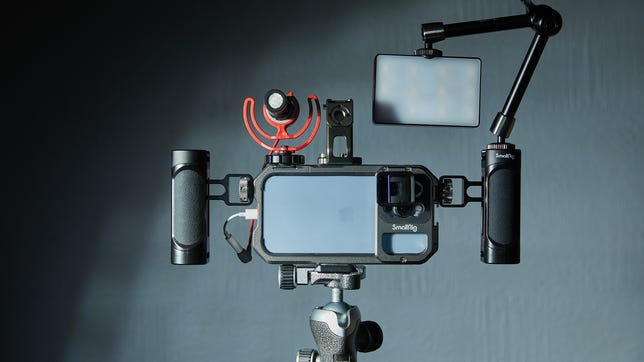

Andrew Hoyle/CNET
SmallRig Mobile Video Cage
Top-notch cage mount
Camera cages are common tools that let you attach a wide variety of accessories to a DSLR, including lights, microphones, handles and external monitors. SmallRig’s new mobile cage offers much the same functionality, but for your iPhone, with multiple mounting points around the edge to attach whatever accessories you need.
I’ve been using the cage with an attached Aperture LED light, PolarPro tripod and Rode microphone (all seen below), which makes for an incredible mobile vlogging rig. SmallRig also offers various attachments of its own, including top and side handles, which help provide stability when you’re hand-holding while filming. The cage is solidly built from aluminum, has bayonet lens mounts (see below), and has a convenient clasp for easily slotting your phone in and out.
$41 at Amazon
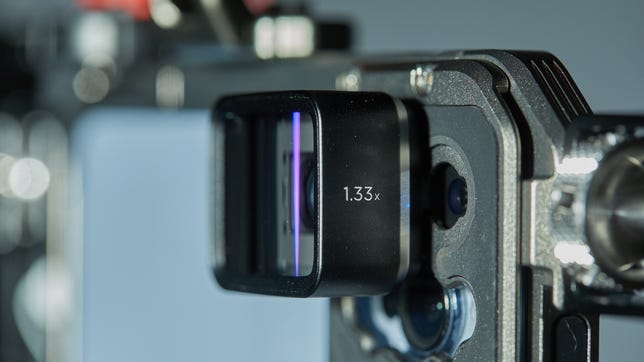

Andrew Hoyle/CNET
Moment Anamorphic lens
Excellent add-on lens for iPhone
Anamorphic lenses are normally something you’d find in a professional cinematographer’s kit bag. These lenses provide a wider aspect ratio, along with distinctive blue-line lens flares that gives footage a much more filmic quality. Moment’s mobile anamorphic lens does exactly that for your iPhone.
Clip it on and it’ll squeeze your footage into the shorter, wider format that completely transforms the look of the video you can take from your phone. I’ve absolutely loved the look of my phone footage using the lens and it’s a must-have for any budding film producers wanting to up their game with their phone.
You’ll need to shoot with apps like Filmic Pro that let you “unsqueeze” the footage so it doesn’t look all distorted. The lens uses a bayonet mount that attaches to compatible cases, including Moment’s own ones or a variety of third-party options, including the SmallRig cage mentioned above.
$120 at AmazonGet Price AlertsYou’re receiving price alerts for Moment Anamorphic lens
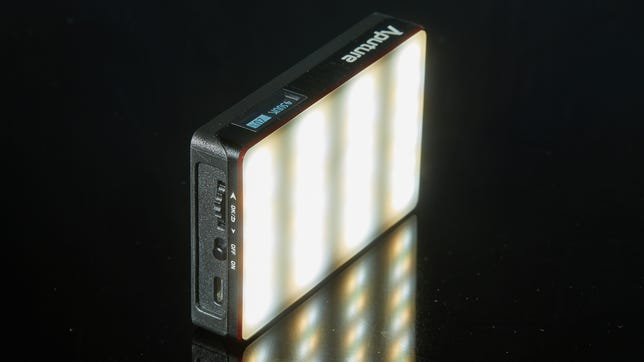

Andrew Hoyle/CNET
Aputure MC LED video light
Powerful lighting on a budget
This USB-C rechargeable LED video light is small enough to fit into the palm of your hand but puts out a huge amount of light. It’s great for lighting up your subjects, whether that’s for portraits, product photography or macro or to light up yourself if you’re vlogging at night. The power output is easily adjustable, as is the color temperature of the light.
It also has a variety of creative effects to spice up your production, including simulations of fireworks, lightning, a flickering fireplace or the flashing red and blue of police car lights.
$90 at Amazon
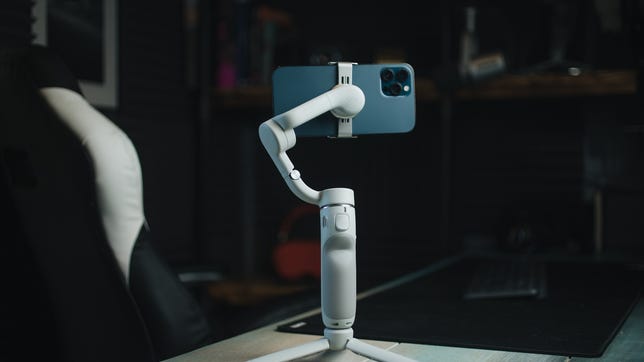

Andrew Hoyle/CNET
DJI Om 5 gimbal
Like a Steadicam for your iPhone
The iPhone 13’s built-in image stabilization is already superb, but for an even smoother ride, consider using a dedicated gimbal like DJI’s OM 5. It evens out all but the most aggressive movements, allowing you to get smooth tracking footage of you running behind your subject as you film a chase scene.
It also has a built-in extendable selfie stick, which not only makes it great for YouTube vloggers, but also allows for more creative angles by holding it up higher, or even flipping it over and having the camera run close to the ground or through grasses.
$129 at Amazon$130 at Best BuyGet Price Alerts$160 at AppleYou’re receiving price alerts for DJI Om 5 gimbal
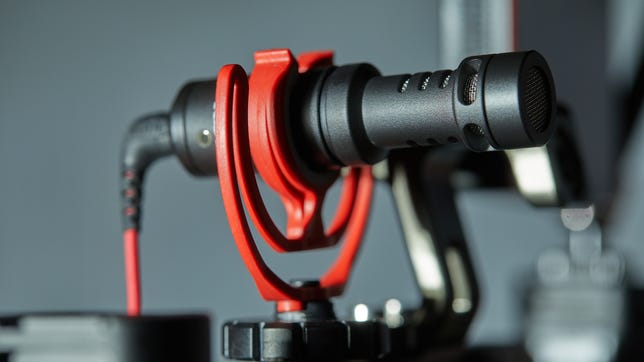

Andrew Hoyle/CNET
Rode VideoMicro microphone
Excellent external mic
Recording good audio for your vlogs or your next iPhone-based short film is crucial, and while the iPhone does a decent job of capturing audio, a dedicated microphone will take things to the next level. Rode’s VideoMicro shotgun mic can plug into your phone’s Lightning port (via an adapter) and provides crystal-clear audio when recording with the standard iPhone camera app or any third-party video app.
I love using it on top of my phone for vlogging and the included wind shield is superb for cutting out wind noise when working on location. Alternatively, get a 3.5mm extension cable and you can try using the mic on the end of a boom pole for recording audio in a conversation you’re filming.
$48 at Amazon
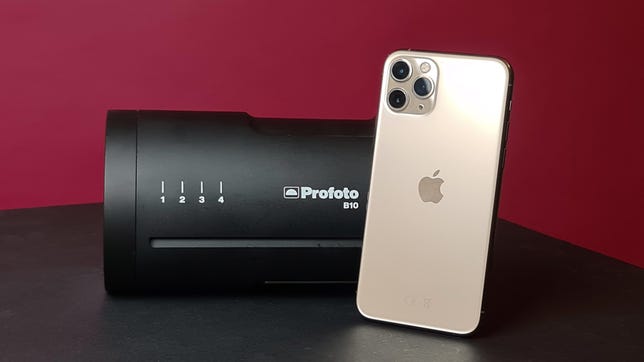

Andrew Hoyle/CNET
Profoto B10
Pro-level flash for iPhone
At $1,795, industry goliath Profoto’s B10 studio flash will be little more than a pipe dream for most. But if you want to get truly professional lighting on location or in a studio using your iPhone, the B10 is second to none. This pro flash is designed primarily for use with DSLRs but can also be used with iPhones and Android phones via the Profoto app. It allows you to get shots with your phone that would simply not be possible to achieve without it.
Sure, most pros probably wouldn’t consider shooting a major project on just their phone, but it’s a potentially great backup in case of camera failure, or simply a lightweight and convenient way to test ideas in the field without hauling bags of gear around.
$1,795 at Amazon
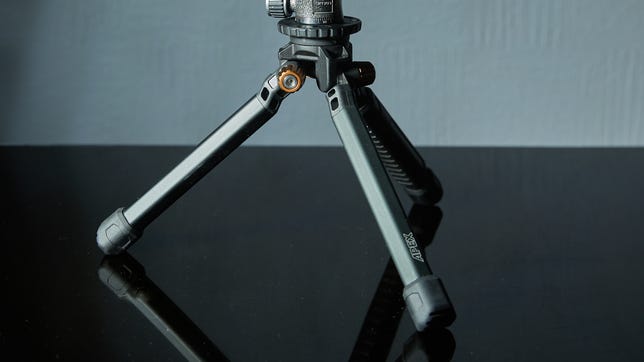

Andrew Hoyle/CNET
PolarPro Apex Minimalist tripod
Our favorite iPhone tripod
Having a solid tripod can make all the difference in getting stable, wobble-free video, particularly if you want to put yourself in the frame. PolarPro’s Apex Minimalist tripod is a great option for mobile producers, as its compact size means it’s easy to chuck into a backpack, but it’s burly enough to support bigger cameras should you need to.
I love using it for static shots, and for holding my phone up to shoot vlogs while walking around. It comes either with an integrated twist-locking ball head, or as the tripod legs only. I prefer the latter as it allows me to use my own compact ball heads, which are more stable with heavier loads.
$100 at Polarprofilters
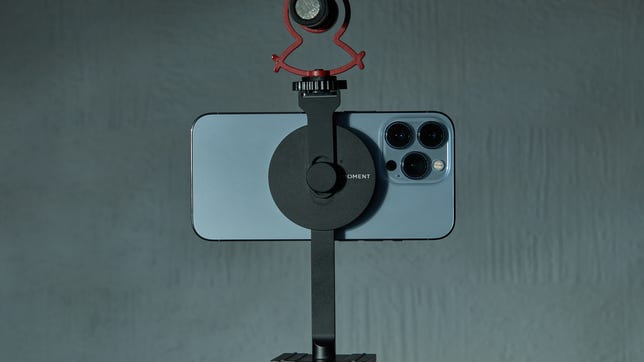

Andrew Hoyle/CNET
Moment MagSafe tripod
Magnetic ease of use
Rather than use screw clamps to secure your phone in place, Moment’s tripod mount uses Apple’s MagSafe system, which makes it incredibly quick to pop your phone in place and start shooting. When you’re done, just rip your phone away from the magnetic disk and pop it back in your pocket. Easy!
The minimalist approach to the mount’s design makes it extremely compact so it’s no hassle to always carry it with you for when inspiration strikes. The magnets are strong, too, so you don’t need to worry about your phone popping loose while you’re walking along. It’s available as a mount by itself, or with the cold-shoe bracket (pictured) to attach a microphone when vlogging.
$50 at Moment$50 at Amazon
The post Best iPhone 13 Accessories for Better Mobile Videos and Photos first appeared on Joggingvideo.com.
]]>The post My Biggest Wishes for Apple’s iPhone 14 first appeared on Joggingvideo.com.
]]>This story is part of Focal Point iPhone 2022, CNET’s collection of news, tips and advice around Apple’s most popular product.
Apple’s iPhone 13 and 13 Pro are undeniably among the best phones you can buy in 2022. They offer a brilliant blend of impressive all-around performance with camera skills that can rival professional cameras. But since Apple’s “Far Out” event is set for Wednesday, a new iPhone is likely arriving soon with a variety of refinements and new features.
We expect to see the iPhone 14 at Apple’s launch event today— here’s everything you should know about its rumored release date, price and new design. Although time is running out, I still want Apple to give my wish list a read and make sure it ticks everything off. Because that’s how it works, right?
In no particular order then, here are my top hopes for the iPhone 14.
More from the Apple Event
- Apple Makes The iPhone 14, 14 Plus Official
- Apple unveils AirPods Pro 2
- New Apple Watch Brings 36 Hours of Battery Life With Low-Power Mode
- New Apple Watch Ultra: Longer Battery, Titanium Design, Underwater Modes, More
- Apple Watch Adds New Temperature Sensor for Fertility Tracking
- New Apple Watch Series 8 Has a Temperature Sensor and Car Crash Detection
No notch on the iPhone 14
The notch. It has to go. Yes, it’s served its purpose, housing as it does the front-facing camera and the various scanners to let you unlock your phone just by looking at it. And while the notch did get slightly smaller on the iPhone 13, it’s still a big chunk of screen that’s cut away. So it’s time for a better solution that lets that screen really shine.
Perhaps Apple could perfect under-display cameras that are there but essentially invisible. We’ve seen that already on phones from ZTE and Vivo, but the technology is far from perfect. Then there are the weird pop-up selfie cameras seen on some Oppo phones that spring up from the top edge, keeping the display unbroken.
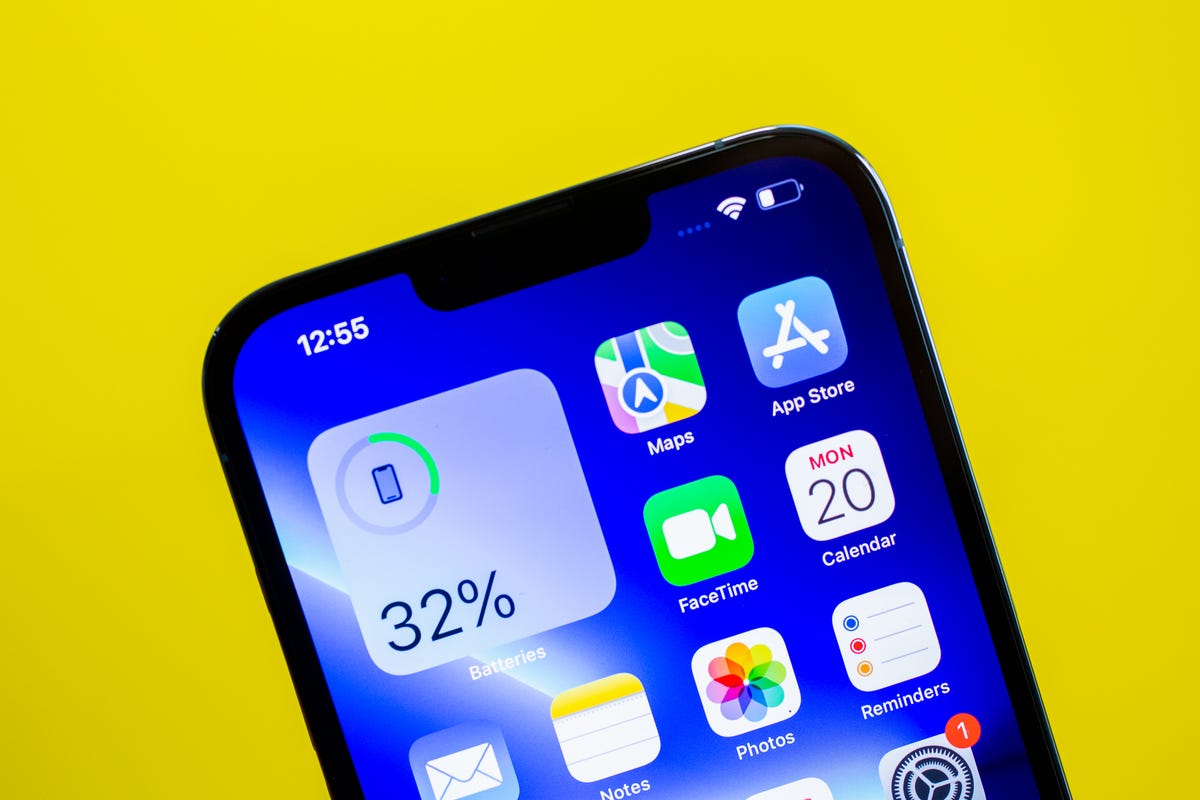

The notch has outstayed its welcome.
Sarah Tew/CNET
I’d even compromise with a simple punch-hole solution, filling the front with the display but just popping a couple of small, less obtrusive holes for the cameras to peep through.
Apple’s Newest Releases
- iPhone 14 Pro, Pro Max Review: Welcome to Apple’s Dynamic Island
- iPhone 14 Review: A Good Upgrade for Most People
- Apple Watch Series 8 Review: Improvement By Degrees
- Apple Watch SE Review: Almost Everything I Want
- Apple iOS 16 Released: New iPhone Features From the Update
In-screen fingerprint scanner as well as Face ID
Speaking of things hidden in the screen, let’s pop a fingerprint scanner under there too. Apple’s Face ID works well for the most part, or at least it did before the pandemic hit. Wearing masks in public is a much more common occurrence than it was prior to the pandemic, and before the release of iOS 15.4 in March, face unlock simply didn’t work without also pairing up with an Apple Watch. Although you can now unlock your iPhone while wearing a mask thanks to the iOS update, I think Apple should still bring back fingerprint scanning.
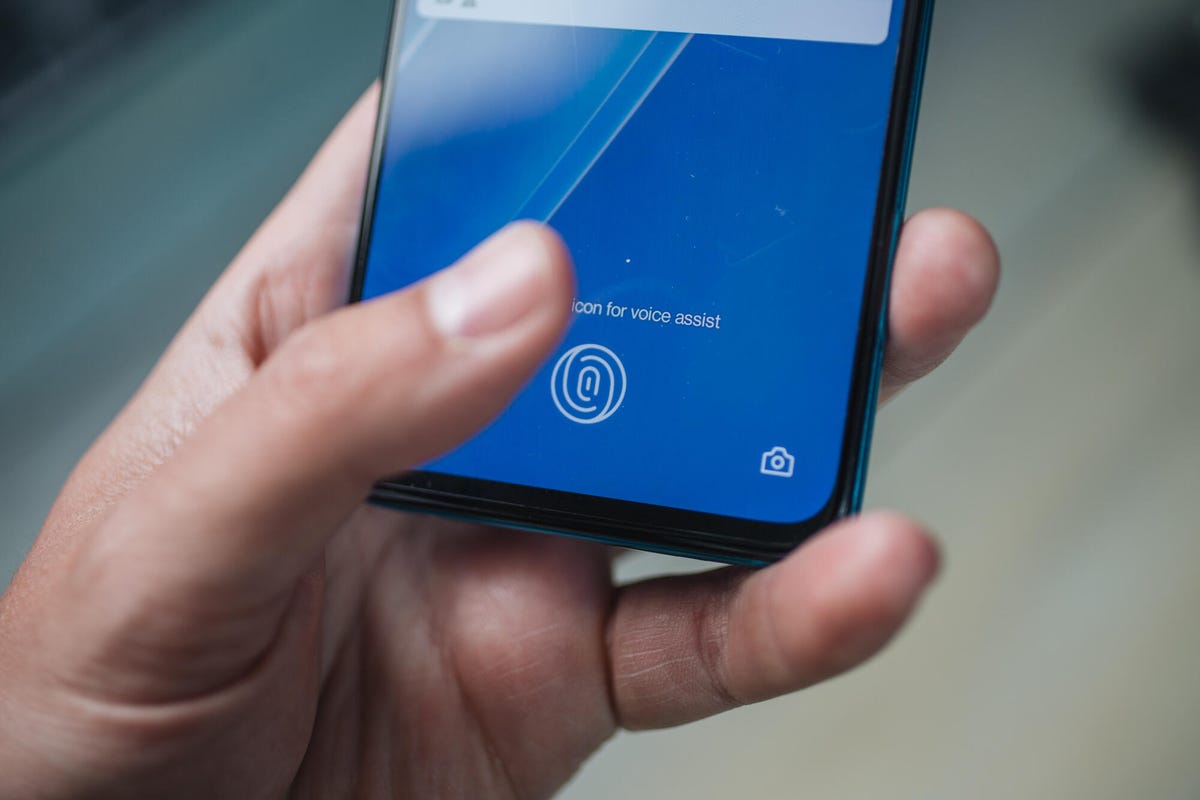

Even on the affordable OnePlus Nord CE you’ll find a fingerprint scanner hidden beneath the display.
Andrew Lanxon/CNET
In-screen scanning technology is common now, with affordable phones from OnePlus invisibly hiding scanners into the display of their phones and I find that they work pretty much as well as physical scanners that were once on the back or side of the phone. It’s not a step backward to put this technology in — it would simply be acknowledging that maybe the world needs a different solution to what we had before — which can be said of so many things.
A bigger zoom and larger sensor for iPhone 14’s camera
The iPhone 13 Pro camera is superb, taking beautiful images in the daylight and capturing bright, sharp shots in the middle of the night. It’s one of the best cameras you can find on a phone, but I’m a photographer, so naturally I’m going to demand more.
The main thing I want here is a bigger zoom. Yes, Apple upped the zoom level to 3x with the iPhone 13 Pro, but that still pales against the Samsung Galaxy S22 Ultra‘s whopping 10x zoom. Zoom lenses are superb tools for finding interesting compositions in your environment, for getting up close on those details that would simply be lost if you took your shot with a wide angle lens. Even the 4x zoom on Google’s new Pixel 6 Pro was enough of a jump to allow for more telephoto-style images.
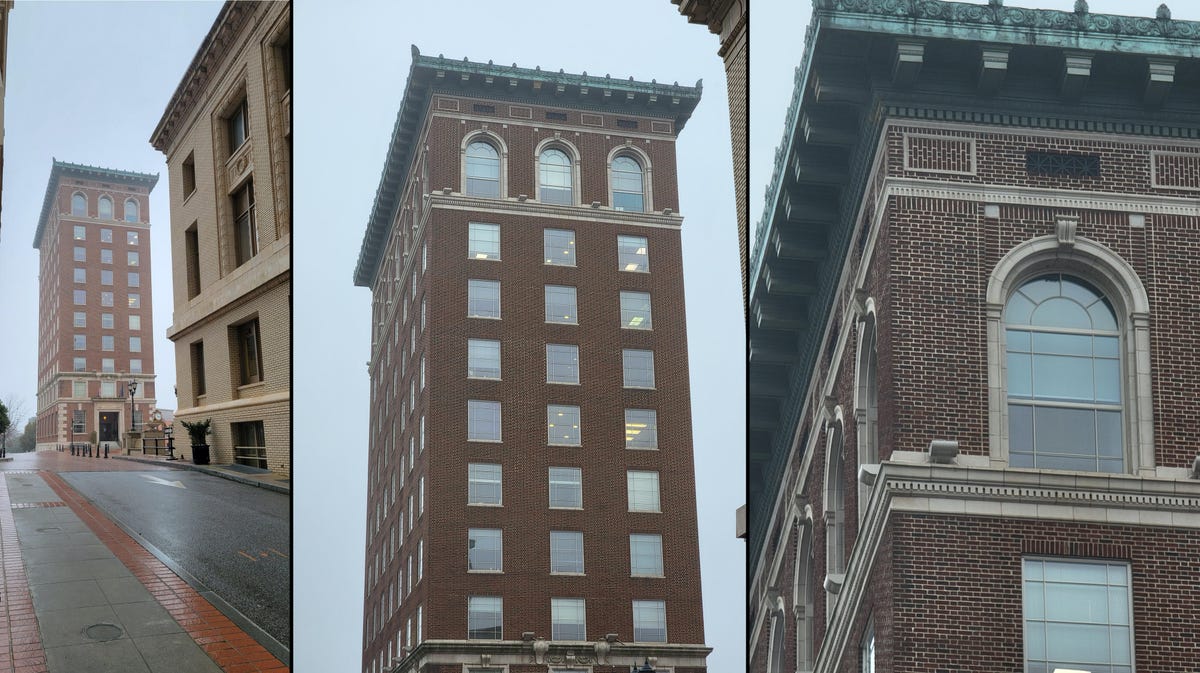

Captured with the Samsung Galaxy S21 Ultra, which also has a 10x zoom, it’s clear to see how much benefit there can be from having a longer zoom option.
Patrick Holland/CNET
But while we’re on the camera, I’m always keen to see overall improvements in quality. So let’s also slap an even bigger image sensor in there — maybe a 1-inch size as we’ve seen on Sony’s recent Xperia Pro I, or hell, let’s go APS-C or full frame, if we’re dreaming. The bigger the sensor, the better the overall image quality and with each generation of camera upgrade we’ve had, the less I need to take my camera out with me.
Maybe with the iPhone 14 I can just sell my DSLR and shoot solely on my phone.
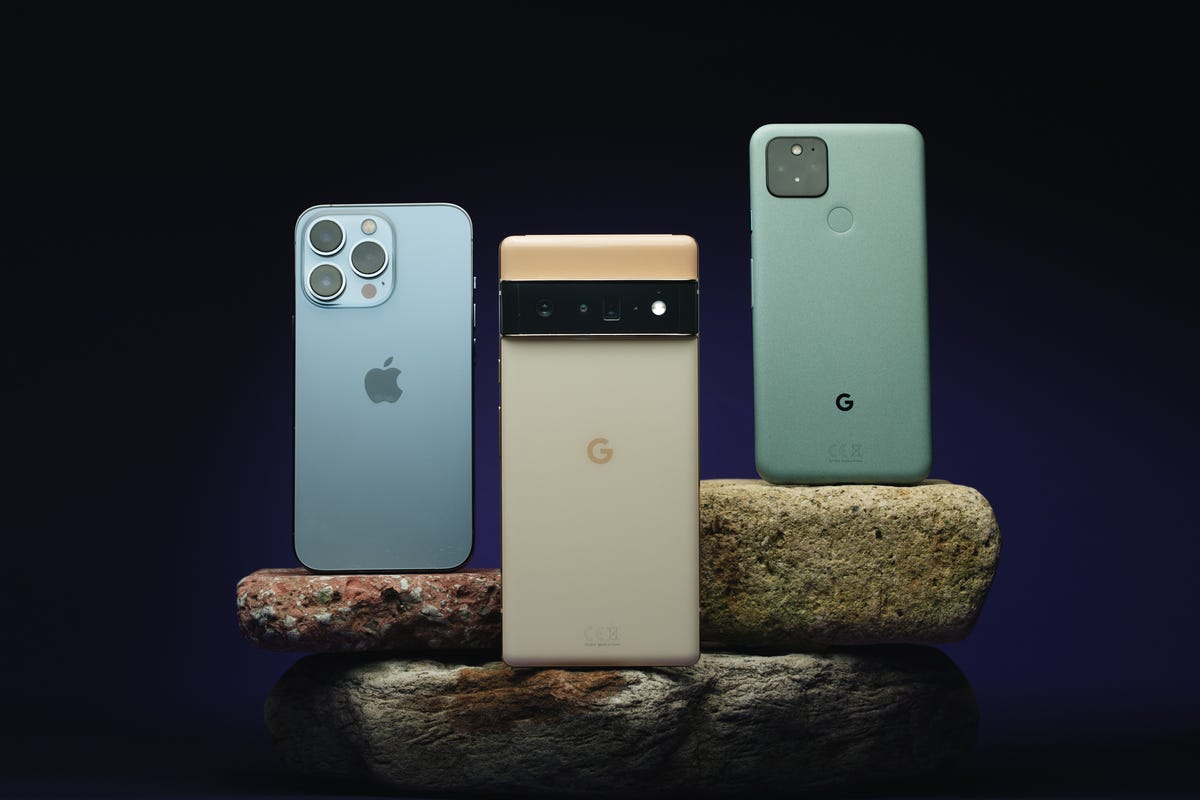

The iPhone is the only one out of these three that doesn’t use USB-C.
Andrew Lanxon/CNET
USB-C charging to replace Lightning
Apple has adopted USB-C for almost all of its products now from the iPads to the MacBooks to the AirPods. The iPhone still uses Apple’s legacy Lightning port, which makes it the only device on my desk I need to find a different cable for when I want to charge it. All my Android review phones, my tablets and even my mouse and keyboard plug into my USB-C power cables and the iPhone feels somewhat outdated as a result.
But Apple has always had its own ways of charging. When everyone else was using Micro-USB, Apple had that massive 32-pin connector first seen on the iPod and that was a pain, too. So expecting Apple to step in line with the rest of the industry feels about as likely as asking giraffes to maybe try having shorter necks like the rest of us, OK? You too, swans. Donkeys, you’re fine, you’ve got enough going on.
But what I don’t want is for Apple to remove the port entirely, which was rumored when it launched MagSafe charging. Because then, I still need a dedicated charging cable. Plus MagSafe charges slower than the Lightning cable and doesn’t currently support data transfer. You see, it wouldn’t work. So USB-C it is. Thanks. In the meantime, at least I can make use of any USB-C to Lightning cable to get at least half of the convenience I’m looking for.
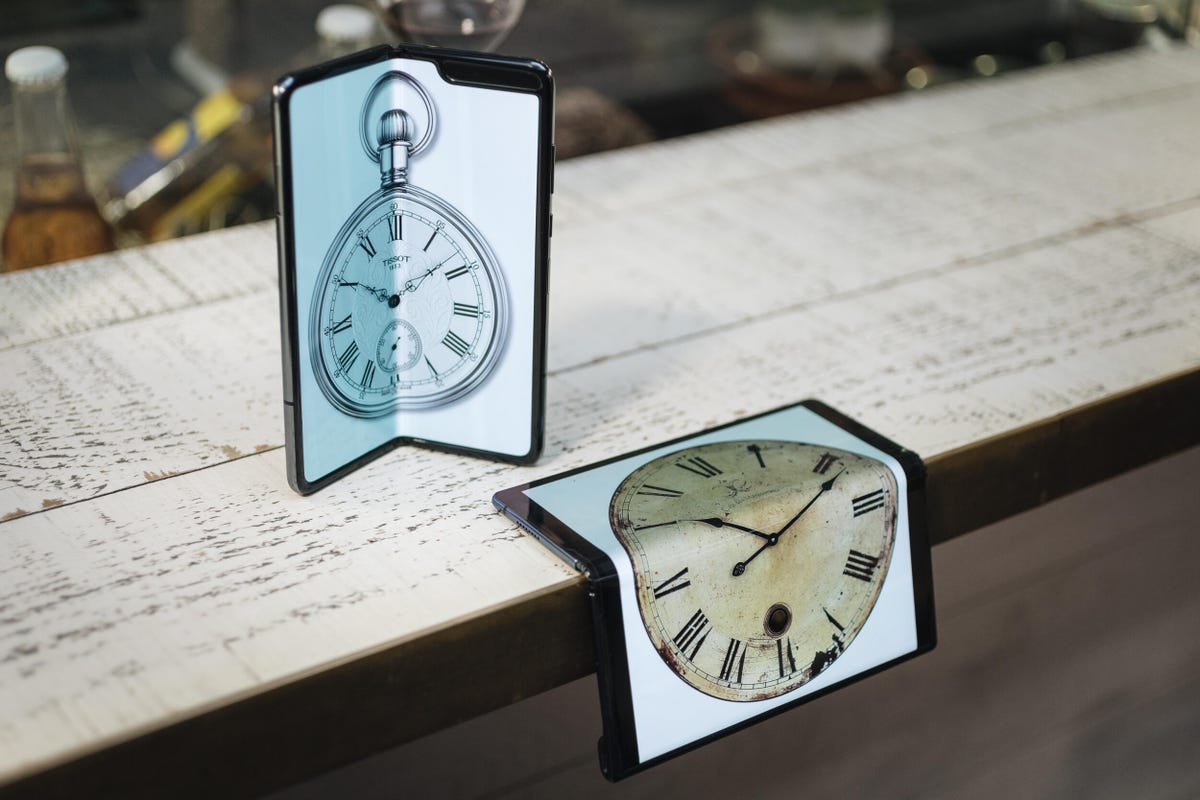

Foldable phones are great for making a big screen fit into a smaller body.
Andrew Lanxon/CNET
A foldable iPhone 14
Foldable phones have been the biggest physical design revolution we’ve seen in phones since basically the advent of the smartphone. But they’ve not really caught on — possibly because of their high prices but also possibly because they just don’t really offer a compelling reason to make use of that fold.
But Apple has a decent track record of taking an existing innovation and actually finding a way to make it work well enough to have an impact in our lives. Apple didn’t invent tablets, but the iPad was the first one that really showed how useful they can be, and now it’s basically the only tablet that matters. And I like foldable phones. They’re fun and they allow a big screen that’s great for videos and photo editing to fold in half and be much more pocket friendly.
So I’d love to see Apple’s take on this genre of device and see what its team would do with a product that’s halfway between an iPhone and an iPad. Maybe not as the only phone it launches, but maybe as an additional one, called the iPhone 14 Fold that sits above the iPhone 14 Pro. And while there are only a few foldable iPhone rumors to suggest that this will ever be a real thing, I’d put good money on a working Apple folding phone concept sitting somewhere right now deep down in its research labs on that spaceship campus.
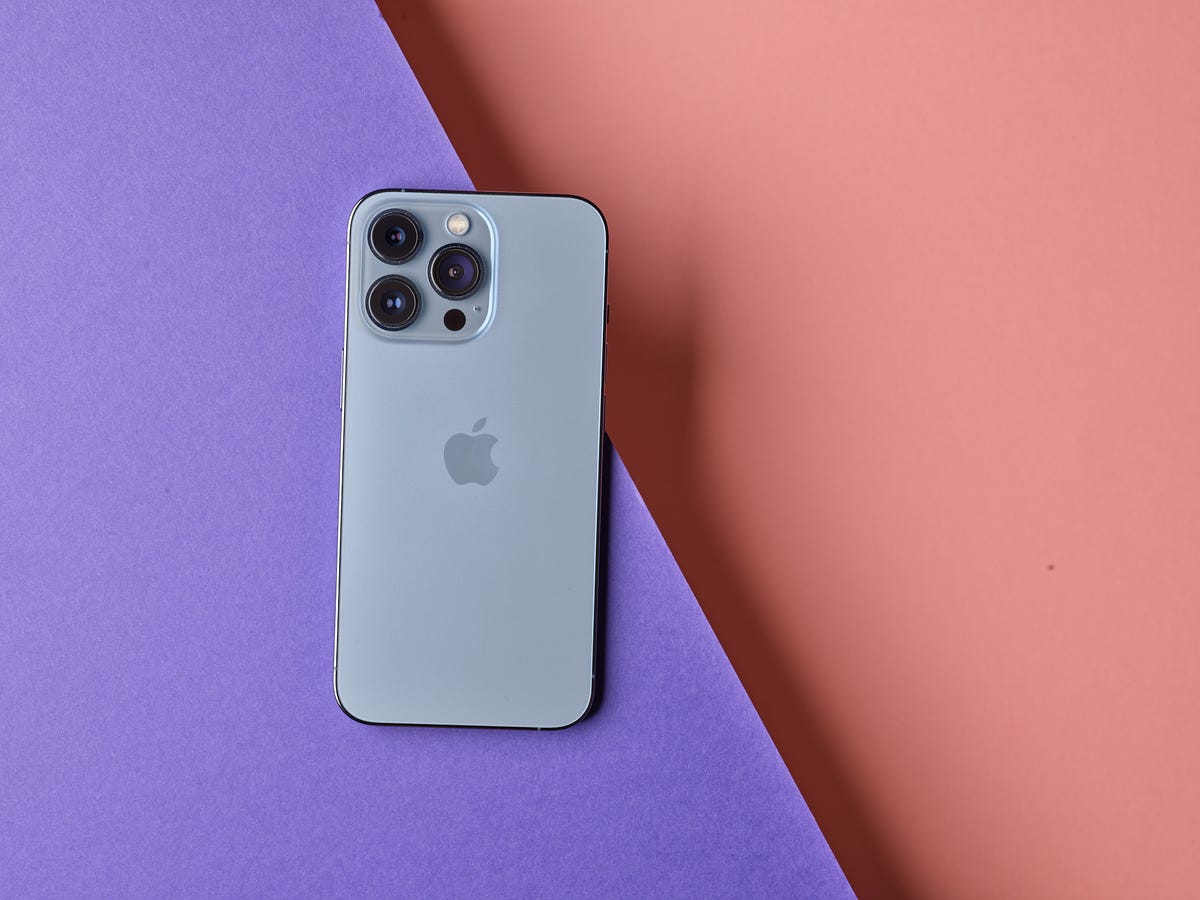

The iPhone 13 Pro is one of the top phones you can buy right now.
Andrew Lanxon/CNET
But those are my top five things I’d like to see from the iPhone 14. For more, check out all the iPhone 14 rumors we’ve heard so far including its release date and price. You can also take a look at the best features in iOS 16. Plus, we break down the best iPhones you can buy right now.
The post My Biggest Wishes for Apple’s iPhone 14 first appeared on Joggingvideo.com.
]]>The post DIY iPhone Battery Replacement: How I Fixed My Phone at Home first appeared on Joggingvideo.com.
]]>This story is part of Focal Point iPhone 2022, CNET’s collection of news, tips and advice around Apple’s most popular product.
Apple’s do-it-yourself repair program lets you fix some of its products yourself with official parts, but it’s always been possible to open your iPhone and do a DIY fix with third-party components.
I did exactly that, replacing the old battery of a used iPhone 6 to give it a new lease on life. I was pleased to find the phone on eBay for only £75 (about $100 or AU$140). That’s a huge saving over a new iPhone 13 Pro, but the battery had aged to the point where the software had to artificially throttle the performance to stop it from shutting down. Instead of casting off the phone and getting buyer’s remorse, I decided to buy a replacement battery and tools from iFixit and have a go at replacing the battery myself.
It took a little over an hour, but I was able to safely swap out the battery, and the iPhone 6 was running perfectly again. I’m not giving step-by-step instructions here — head to iFixit and grab a kit if that’s what you’re after — but I do want to describe my experience, including how easy this was to do, and hopefully answer some of the questions you may have if you also need a new battery.
If you have a more recent model (an iPhone 12 or newer), then make sure to first check Apple’s new repair options and see if you’d be able to put in a replacement with parts directly from the company.
Note that any maintenance you do on your own devices is entirely at your own risk.
1. Why would you need to replace an iPhone battery?
Batteries age over time, and considering that the iPhone 6 was released over seven years ago, it’s no surprise that the one I bought wasn’t running in prime condition. One time, the phone unexpectedly restarted while in use, and it flashed a warning that read, “This iPhone has experienced an unexpected shutdown because the battery was unable to deliver the necessary peak power. Performance management has been applied to help prevent this from happening again.” Even the phone itself knew it had a bum battery.
In short, a phone’s performance can be throttled if it can no longer cope with power demands. There is the option to turn throttling off, but this will result in more frequent crashes. Neither situation is ideal, so a battery replacement seemed like a smart way forward for me, since it wasn’t my main phone and I was willing to take the risks.
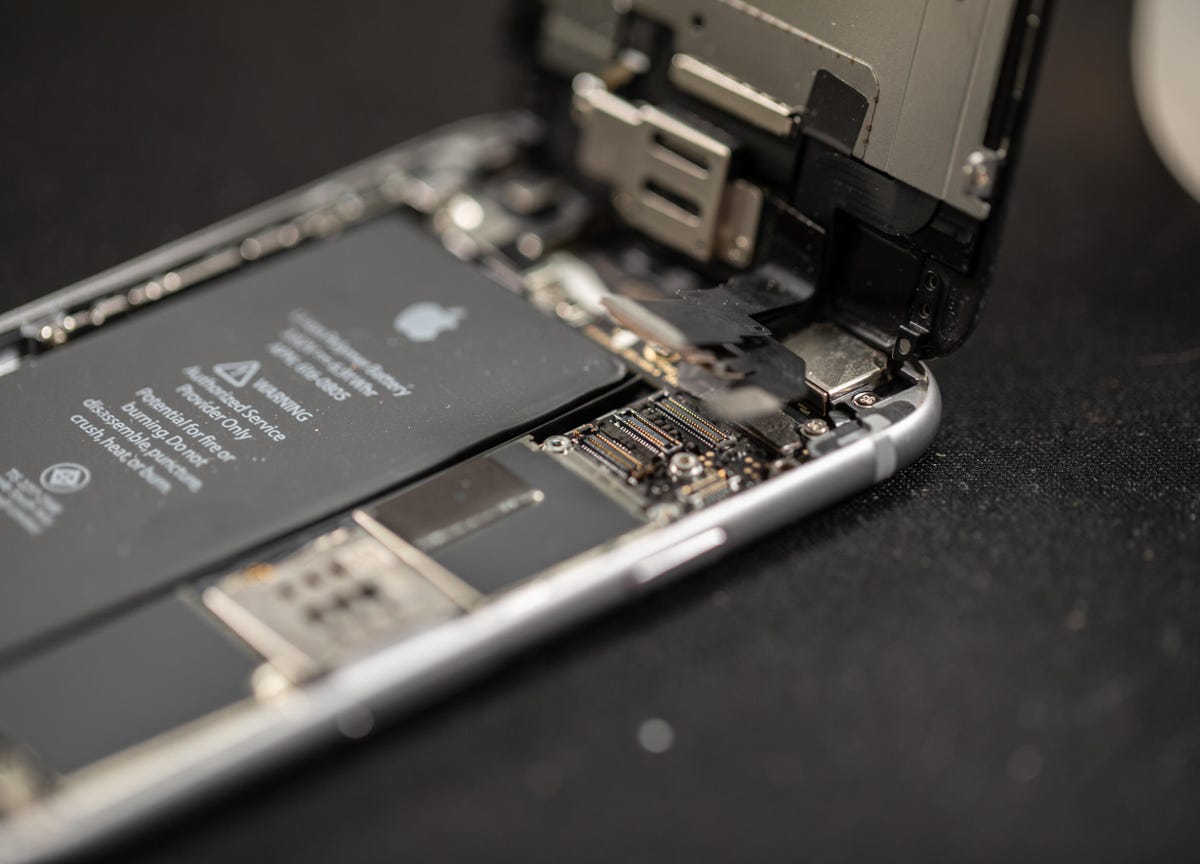

Opening up my iPhone 6.
Andrew Hoyle/CNET
2. How much does a replacement iPhone battery cost?
The problem with my situation specifically was that I bought the phone for so little in the first place that spending more money on a battery replacement service negated some of those initial savings. Apple‘s official replacement service costs £49 ($49), which is more than half what I paid for the iPhone 6 I bought. As I was in the middle of a coronavirus lockdown when I attempted this, I wasn’t able to get to an Apple store to take it in, and sending it in through the mail would bring the total cost to around £56 (about $75 or AU$105).
iFixit, however, sells a DIY replacement pack for £35 (including postage to my home in Scotland). It costs $30 in the US, and with shipping costs that comes to about $38. It’s not a huge saving over Apple’s official replacement, but every little bit helps.
3. What comes in the iFixit battery fix kit?
iFixit’s kit comes with a third-party replacement battery that is not from Apple, since Apple does not sell its parts separately for phones older than the iPhone 12. It also has all the tools needed to open the phone and remove the old battery. The only additional thing I needed was a hair dryer to heat up and remove the glue.
4. Does replacing a battery void your phone warranty?
Opening up an iPhone will void the warranty, but if your battery is old enough to need replacing, odds are you’re already out of the 12-month warranty period.
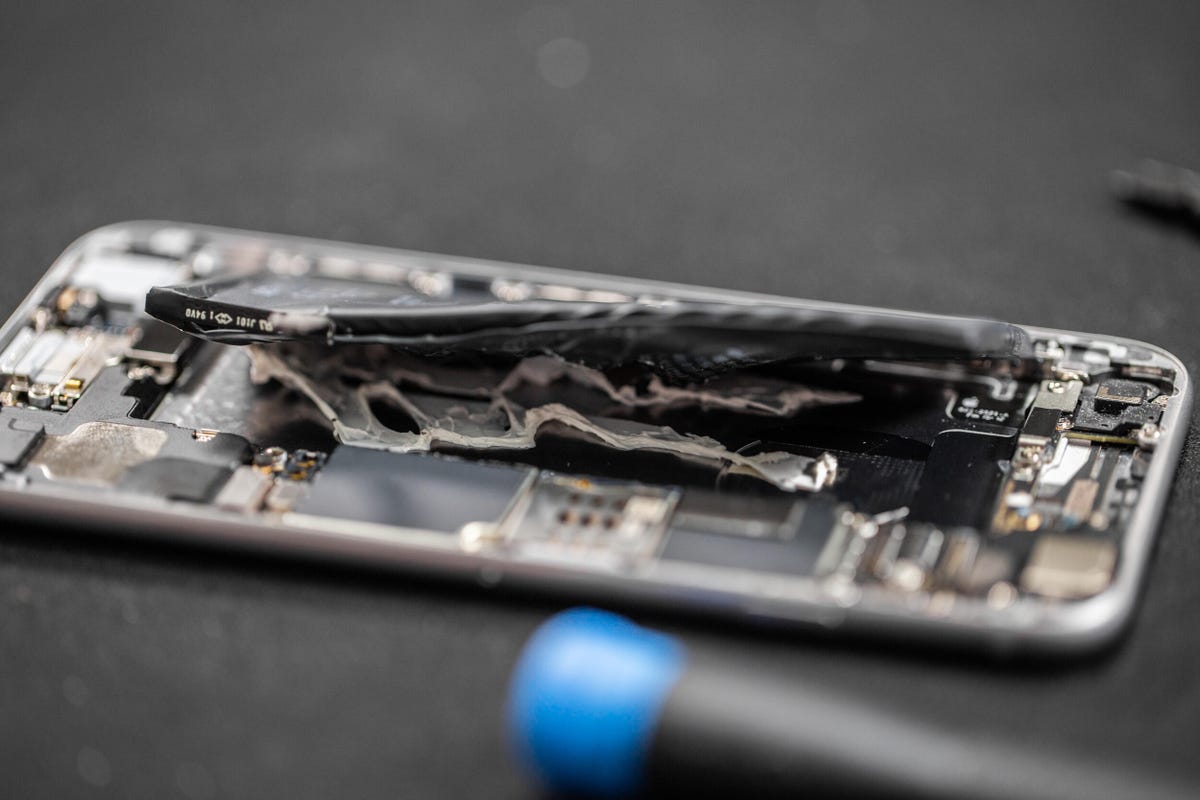

Prying the old battery out was tricky, and I wasn’t always sure I was doing it safely.
Andrew Hoyle/CNET
5. Is it safe to replace your iPhone battery yourself?
This one isn’t so straightforward to answer. iFixit’s guide gives very detailed instructions on the steps involved, but there were a couple of points that made me nervous. One step involved heating up the back of the phone with a hair dryer in order to loosen the glue holding the old battery in place.
Specifically, it said to heat it to “slightly too warm to touch comfortably,” which I found a little vague. Especially since that section also warned that “overheating the iPhone may ignite the battery.” But how hot is too hot? What signs would I see if it was overheating? I couldn’t find this information, and as such wasn’t sure how close to overheating it I might be.
Shortly after, while trying to pry out the old battery, I accidentally ripped into what looked like the black wrapping around that battery. I was pretty sure that the battery itself wasn’t punctured — there was no smoke or hissing — but I’d have felt a lot more comfortable if I had “emergency” instructions on hand about what to do if the battery did ignite.
6. Can I replace my iPhone battery myself?
Up to a point I found I could, yes, and I’m not normally “handy” in a DIY sense. iFixit’s instructions were easy to follow, and there were only seven internal screws to remove, which were easy to replace.
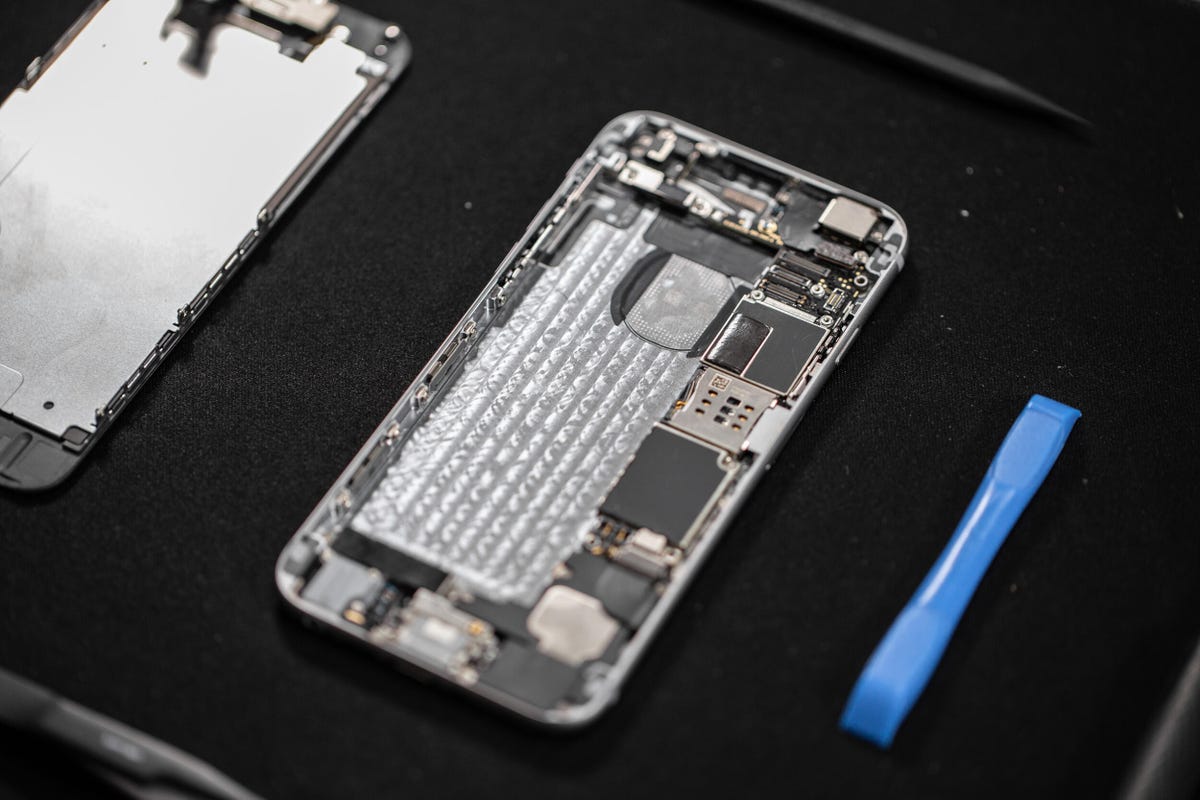

The iPhone 6, old battery removed and all traces of the glue cleaned off.
Andrew Hoyle/CNET
What I found a little confusing was that iFixit’s instructions on its web page end at the point where you remove the old battery. The only instruction in the conclusion was to follow the previous steps in reverse order. Admittedly, that wasn’t particularly difficult to do, but I would have appreciated more guidance at that point.
Another issue I ran into was that, during the removal of the screen, I cracked the screen protector that was in place. I noticed the hairline cracks and was worried that I’d damaged the display itself, but thankfully that was unharmed.
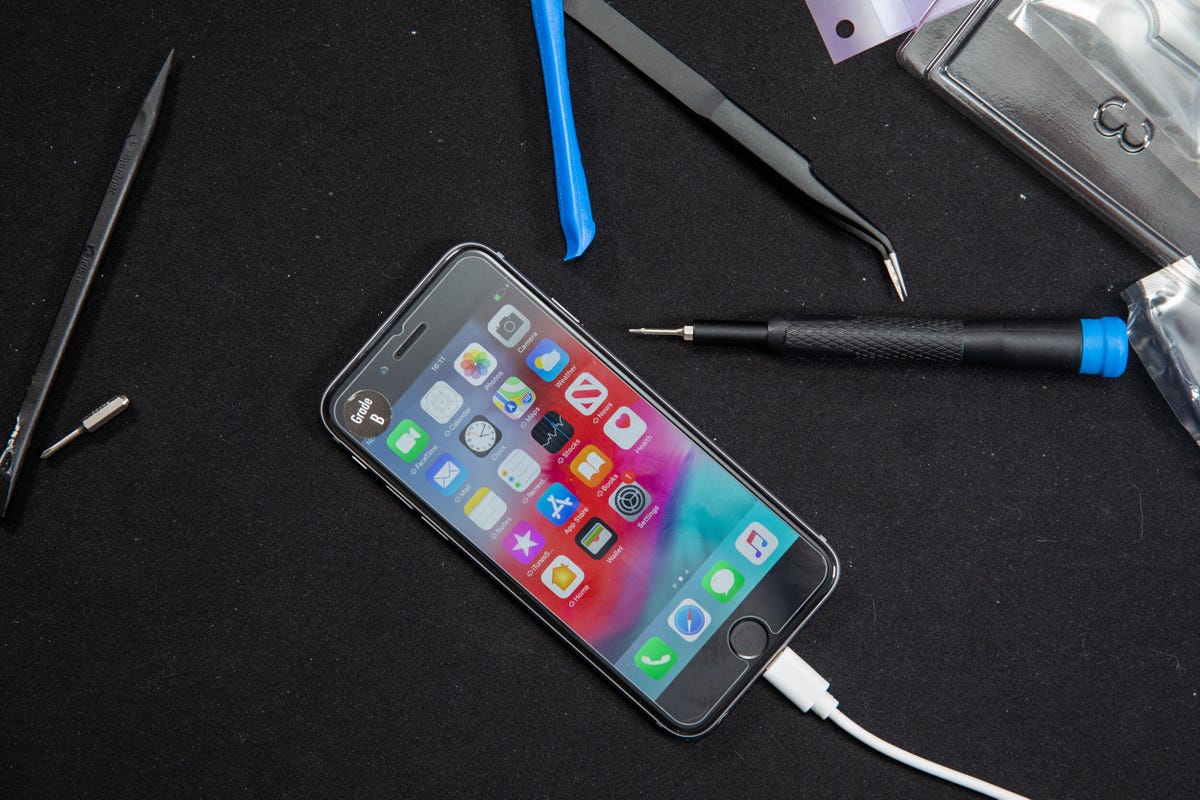

With its new battery, this iPhone 6 should be running at optimal level again.
Andrew Hoyle/CNET
7. Is it worth replacing an iPhone battery?
It really depends on the age and value of your phone. If, like me, you bought a cheap used iPhone and just want to get it back up to speed, then it could be a great way to breathe new life into old tech without spending a fortune. Bear in mind, though, that this wasn’t going to be my main phone, nor did I buy it with my own money. For me, the risk was low and had I done it wrong and ruined the phone, it wouldn’t have been a big problem. You’ll need to consider whether you really can manage without it, and your tolerance for other risks.
If you’re using a more recent device, like an iPhone 12, for example, I’d probably just take it directly to Apple. The savings you’ll get from doing it yourself aren’t so great as to justify the potential cost of damaging a more valuable phone.


Now playing:
Watch this:
Apple announces DIY repairs for iPhones and Macs
5:41
The post DIY iPhone Battery Replacement: How I Fixed My Phone at Home first appeared on Joggingvideo.com.
]]>The post Can I Go Swimming With My iPhone? Breaking Down Water first appeared on Joggingvideo.com.
]]>This story is part of Focal Point iPhone 2022, CNET’s collection of news, tips and advice around Apple’s most popular product.
While waterproofing used to be something found only on those beefy, rubber-sealed rugged phones designed for construction workers or downhill mountain bikers, now you’ll find it built — to differing extents — into most mainstream phones, including the iPhone 13 Pro, Galaxy S22 Ultra and the new Pixel 6 and Pixel 6 Pro. The value of water-resistance on a phone is clear to anyone who’s ever spilled a pint of beer over a shiny new phone: It can mean the difference between a quick wipe with a napkin and an expensive trip to the Apple store.
But not all phones can withstand a dunking, and some should avoid being near water altogether. If you’ve shopped for a phone recently then you’ll have come across terms like “water-resistant” as well as the now common IP67, IP68 or IPX8 ratings. But what do those ratings really mean and, crucially, how waterproof is your expensive new phone?
Let’s break down the jargon and find out.
What does IP67, IP68 and IPX8 mean?
IP, or ingress protection ratings (aka international protection ratings), are a standard set forth by the International Electrotechnical Commission. According to the organization, the codes are designed as a “system for classifying the degrees of protection provided by the enclosures of electrical equipment.”
The first number in the rating code represents the amount of protection provided against the entry of foreign solid objects, such as fingers or dust. These protection levels range from a low of 0 to a high of 6.
The second number represents the degree of protection against the entry of moisture or liquid, with protection levels ranging from a low of 0 to a high of 8.
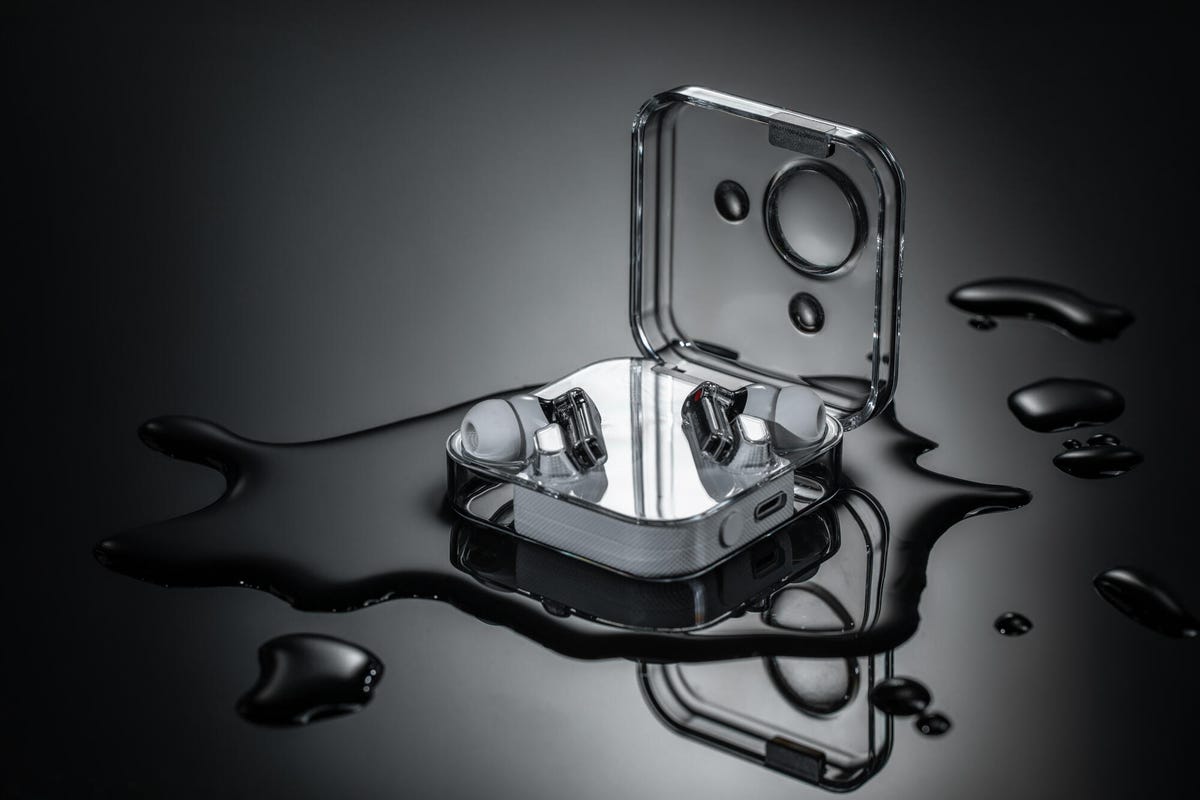

Nothing’s earbuds are IPX4 rated, which is enough to keep them safe from sweat during your workouts.
Andrew Hoyle/CNET
Sometimes you’ll see an IP rating with a number replaced with an X, such as IPX8. In this instance, a company hasn’t provided testing details so the rating number is replaced with an X. An IPX8-rated device can survive being submerged in water, then, but it hasn’t officially been rated for any protection from dust.
The iPhone 13 Pro has an IP68 rating, meaning it’s protected from dust getting inside and can withstand being submerged in water. The Galaxy S22 Ultra is also IP68 rated. So they’re equally water-resistant, right? Well, no. That’s where it gets confusing.
For an 8 on the IP rating, the IEC demands a device can withstand being submerged in at least 1 meter of water for 30 minutes. Beyond that, it’s up to the manufacturer. The S22 Ultra can be submerged in up to 1.5 meters of water for 30 minutes, while Apple says the iPhone 13 Pro is safe in up to 6 meters of water for up to 30 minutes. So while any phone with an IPX8 rating will have had to hit that 1 meter-30 minute minimum threshold, it’s important to check the fine print and see exactly what your phone offers.
For further details on all the IP ratings, you can see charts at the end of this article outlining the protection levels set by the IEC.
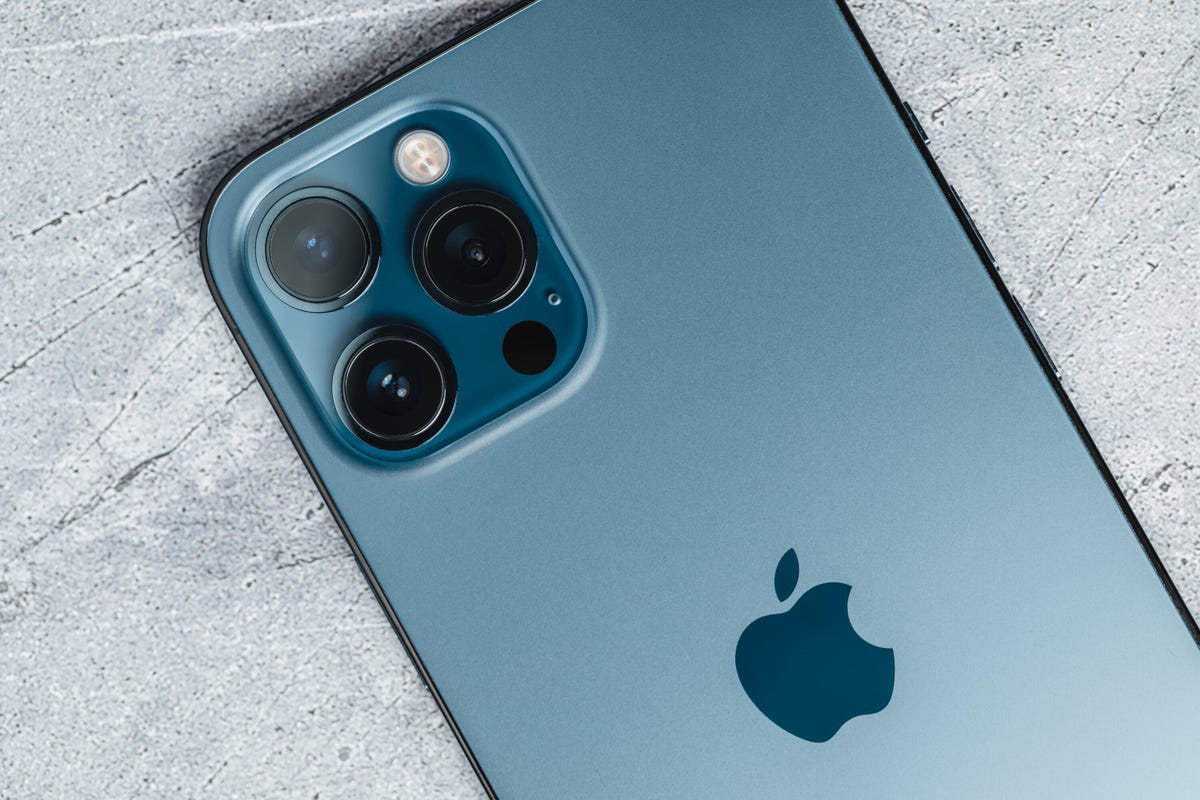

The iPhone 12 Pro Max can be submerged in water up to 6 meters deep for up to 30 minutes at a time.
Andrew Hoyle/CNET
Can I go swimming with my iPhone?
While the iPhone 13 Pro’s advertised 6 meters of water-resistance might make it seem like you can slip one into your swim shorts and hit the pool, you’d be well advised to leave it out of the water. The IP rating is tested in controlled conditions — in water with no movement. Moving your phone in the water will add more water pressure, making it more likely that water could find its way inside and do irreparable damage to your phone.
The IP tests are also done using fresh water; most pools will have additional chemicals such as chlorine, which could make a difference to your phone’s resistance. And you should absolutely keep your phone out of the sea: Salt water could cause a lot of trouble, including degrading the metal parts in your charging port.
Even if your phone has the top IP68 resistance rating, it’s good practice to treat the feature as a backup in case of emergencies. Your phone is not designed to go snorkeling, so don’t try using the camera to snag pictures of starfish or whatever. Nor should you try to record TikTok videos of yourself jumping off the high dive into the deep end. It’s there for accidents like spilling a drink or emergencies like making a call in the pouring rain.
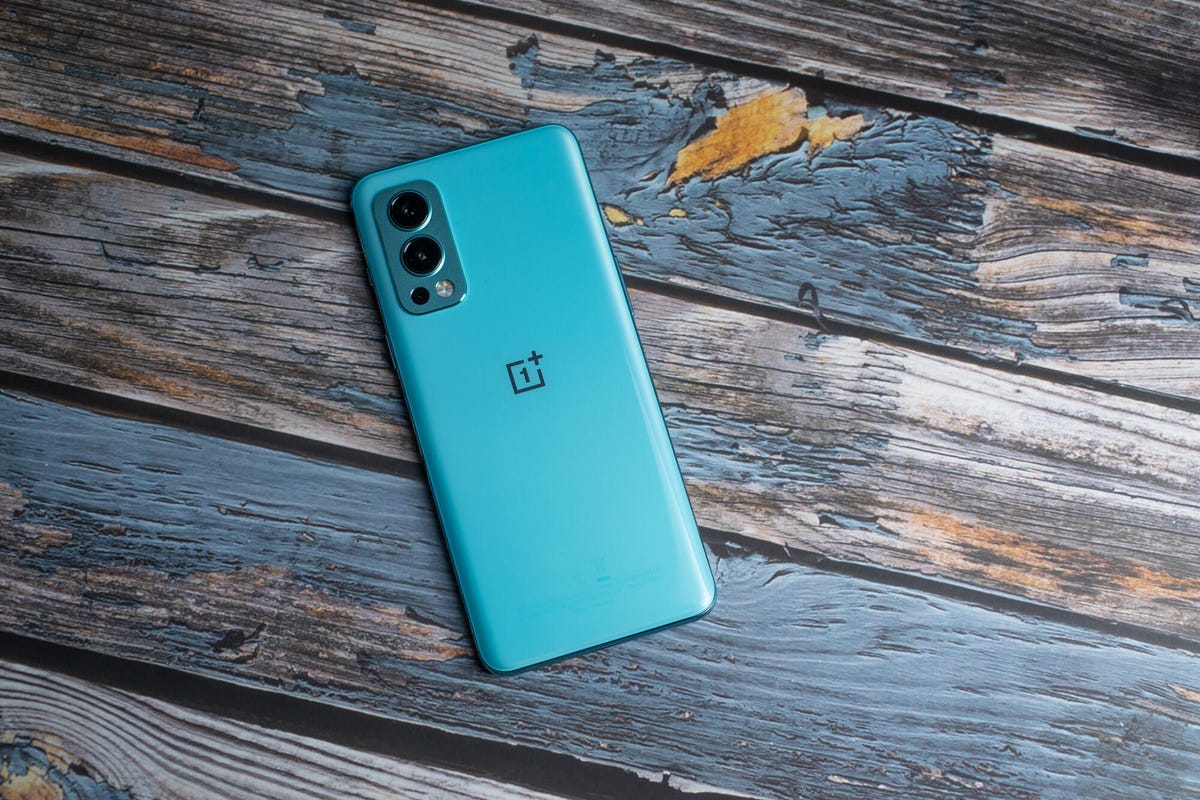

The OnePlus Nord 2 does not have any stated resistance to water — keep phones like this extra safe when you’re around liquids.
Andrew Hoyle/CNET
My phone doesn’t have an IP rating. Can it get wet?
In order for a company to advertise that their product has an IP rating at all, it needs to have undergone strict tests to ensure it meets the requirements. These tests can be timely and costly, so it’s understandable that some companies simply don’t want to spend the cash, particularly when it comes to budget-focused models.
Some phones — including Motorola’s Moto G50 — use terms like “water-repellent” or “water-resistant” without an official IP rating. These handsets may make use of methods like rubberized seals or water-repellent nano coating to keep moisture at bay. While these phones may well survive an accidental dunking, it’s worth keeping them safe from being fully submerged in water. But you shouldn’t need to worry too much about taking calls in the rain.
If your phone makes no mention of water resistance, then it’s best to assume that it has none and you should take as much care as you can around liquids.
Solid protection
| IP Code | Protection | Object size |
|---|---|---|
| 0 | No protection. | N/A |
| 1 | Protection from contact with any large surface of the body, such as the back of a hand. But no protection against deliberate contact with a body part, such as a finger. | Less than 50mm |
| 2 | Protection from fingers or similar objects. | Less than 12.5mm |
| 3 | Protection from tools, thick wires or similar objects. | Less than 2.5mm |
| 4 | Protection from most wires, screws or similar objects. | Less than 1mm |
| 5 | Partial protection from contact with harmful dust. | N/A |
| 6 | Protection from contact with harmful dust. | N/A |
Moisture protection
| IP Code | Protection | Test duration | Usage |
|---|---|---|---|
| 0 | No protection. | N/A | N/A |
| 1 | Protection against vertically dripping water. | 10 mins | Light rain |
| 2 | Protection against vertically dripping water when device is tilted at an angle up to 15 degrees. | 10 mins | Light rain |
| 3 | Protection against direct sprays of water when device is tilted at an angle up to 60 degrees. | 5 mins | Rain and spraying |
| 4 | Protection from sprays and splashing of water in all directions. | 5 mins | Rain, spraying and splashing |
| 5 | Protection from low-pressure water projected from a nozzle with a 6.3mm diameter opening in any direction. | 3 mins from a distance of 3 meters | Rain, splashing and direct contact with most kitchen and bathroom faucets |
| 6 | Protection from water projected in powerful jets from a nozzle with a 12.5mm diameter opening in any direction. | 3 mins from a distance of 3 meters | Rain, splashing, direct contact with kitchen and bathroom faucets, outdoor use in rough sea conditions |
| 7 | Protected from immersion in water with a depth of up to 1 meter (or 3.3 feet) for up to 30 mins. | 30 mins | Rain, splashing and accidental submersion |
| 8 | Protected from immersion in water with a depth of more than 1 meter (manufacturer must specify exact depth). | At least 30 mins | Rain, splashing and accidental submersion |
This article was originally published in 2015 and is updated periodically to include new devices.
The post Can I Go Swimming With My iPhone? Breaking Down Water first appeared on Joggingvideo.com.
]]>The post Best Camera to Buy In 2022 first appeared on Joggingvideo.com.
]]>In this article
Buying the best camera is no easy task, especially with so many models at different prices offered by a wide range of manufacturers. But whether you want to go with Sony, Canon, Nikon or Fujifilm, if you want full-frame image sensors and fast burst shooting or you just need something small and light for your travels, there will be a camera that suits.
As with most things, the more you spend, the better performance you’ll get, with top-spec cameras offering 8K video and high resolution sensors costing a hell of a lot more than their entry-level equivalents. Want to take photos from the air? Check out our guide to the best drones. Want a camera to record your next ski trip? Our action camera guide is for you.
Later in this article you can read my advice on what to consider when buying a new camera, as well as answers to some of the most common questions.


Andrew Lanxon/CNET
Sony A7 IV
Best all-round mirrorless camera
While Sony’s A1 has cranked all of its specs to the max, the A7 IV takes a more “sweet spot” approach, offering solid performance at a much more approachable price. Its 33-megapixel full-frame sensor still offers superb clarity and excellent dynamic range and its maximum 10fps burst rate is still pretty nippy.
It also has in-body stabilization but it’s also got excellent noise reduction allowing you to crank the ISO speeds higher without overly degrading the image quality. Video tops out at 4K at 60fps, but like the A1 you can shoot in 10-bit S-LOG format for greater control in post production.
But my favorite aspect is its compact size, which is small enough to pop into a small shoulder bag (assuming you don’t have a massive zoom lens on, of course) making it a great option for travel photography, street photography or even just as an “everyday carry” camera so you’re always ready to shoot when inspiration strikes.
$2,500 at Amazon


Andrew Lanxon/CNET
Sony ZV-1
Best affordable compact camera for video
Sony’s ZV-1 is primarily aimed at aspiring YouTube vloggers who are looking for a video camera you can just pick up and start shooting with. It’s got an articulated display that lets you easily see yourself when you’re filming your pieces to camera and the built-in mic does a decent job of capturing audio — and there’s an included fluffy wind-shield which helps cut down on wind noise.
Its 1-inch type sensor is the smallest of all cameras on this list, so its image quality isn’t as good as more expensive models, particularly in lower light conditions, but in daytime lighting it’s footage looks solid. It doesn’t have interchangeable lenses but its built-in zoom takes it from an equivalent of 24mm through to 70mm. It’s stabilized well enough for vlogging when you’re standing still, but it struggles to smooth out bigger movements when you’re walking at more of a pace.
It’ll shoot video at 4K resolution at 60 frames per second, but turn that quality down and it can shoot up to a whopping 960fps for some super slow-mo action. Stills max out at 20.1 megapixels and they’re perfectly good for daytime snaps on your travels.
The ZV-1 isn’t the best camera to go for if you only want still photographs, but if you’re looking to shoot a lot of video on your next vacation, or if you’re after a second camera specifically for video purposes then it’s worth considering. Its small size, solid video quality, all-purpose zoom range and decent built-in mic means it’s well-equipped to help you on your first steps to vlogging success.
$748 at Amazon
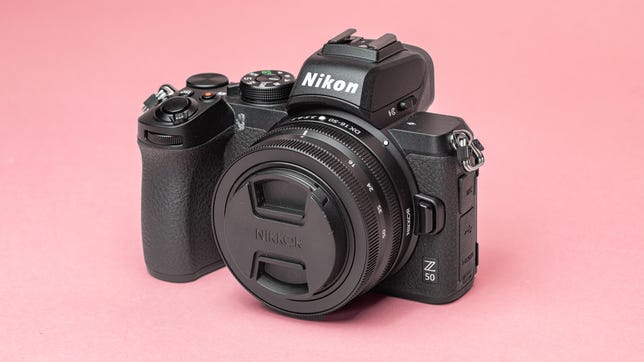

Andrew Lanxon/CNET
Nikon Z50
Best entry-level mirrorless camera
Nikon’s Z50 packs a smaller APS-C sized image sensor into a small and lightweight body which makes it excellent for chucking into a little backpack and heading out on your travels. Its 20.9-megapixel sensor takes good-looking images, with excellent detail and enough dynamic range in the raw files to pull back highlights or lift shadows.
There’s no in-body image stabilization (you’ll need to splash more cash for that) but its 11 frames per second burst shooting rate should help you score a sharp image. It shoots 4K video at up to 30 frames per second and its tilting rear LCD display will help get shots in more awkward angles.
Nikon currently offers only three lenses designed for its APS-C DX-format camera which isn’t a wide selection — although the wide zoom ranges available will likely suit beginners well. It does use the same Z-mount for its lenses as Nikon’s FX-format cameras like the Z7 II, however, so you can always use those professional-standard lenses on this camera. That said, the higher prices of those lenses will somewhat negate the affordability of the Z50 itself.
$1,085 at Amazon


Andrew Lanxon/CNET
Canon EOS R5
Best hybrid stills and video camera
Canon’s EOS R5 is the company’s best all-rounder camera, offering rock-solid specs for professionals in both still images and video. On the stills side, its full frame image sensor packs 45 megapixels and has up to 8-stops of image stabilization (with a compatible lens) helping keep handheld images sharp even at slower shutter speeds. It can shoot up to 20 frames per second and its handy flip-out screen means getting shots in awkward positions is no problem.
On the video side, it was Canon’s first camera to offer a whopping 8K resolution in 12-bit raw which, while overkill for your average family movie, does offer pro shooters more scope for cropping in post-production. At 4K resolution it’ll shoot up to 120fps for smooth slow motion in Canon’s CLog format for easier color editing.
It’s a superb all-round camera that’ll suit enthusiastic photographers and pros alike who are keen to bring beautiful video production into their workflow.
$1,800 at Best Buy$1,799 at CrutchfieldGet Price Alerts$1,699 at AmazonYou’re receiving price alerts for Canon EOS R (body only)


Andrew Lanxon/CNET
Canon EOS R3
Best fast-shooting pro Canon camera
Canon’s flagship is built for speed. Capable of shooting up to 30 raw images a second, it’s a camera aimed squarely at serious sports or wildlife photographers that need to guarantee they’ll nail that decisive moment. Its full frame sensor offers a maximum 24-megapixel resolution, and like the EOS R5, it comes with a fully articulating screen and in-body image stabilization for when the light gets low.
Its auto-focus has been bolstered with deep-learning algorithms allowing the camera to recognize and lock on to people, animals and birds, as well as cars and motorcycles — it’s even able to identify a driver’s helmet in an open-cockpit racing car and lock focus on it. Motorsports photographers have no excuses for missing that winning shot.
It’s no slouch with video either, offering up to 6K footage in Canon’s Log format for better post production. Its high price and physically larger size means it’s not a camera that’ll suit everyone, but if you’re after the absolute pinnacle of photographic speed then it’s the Canon camera to go for.
$5,999 at Crutchfield$5,470 at AmazonGet Price AlertsYou’re receiving price alerts for Canon EOS R3


Andrew Lanxon/CNET
Sony A1
Best high-performance Sony camera
Like Canon’s EOS R5, the Sony A1 is designed to excel with both stills and video. Its compact body is packed with a 50.1-megapixel full frame sensor that delivers pristine detail and excellent dynamic range. It’s stabilized too for sharper hand-held images while its 30fps maximum burst rate (in compressed RAW or JPEG) means it’s well equipped for sports or wildlife photographers too.
It can shoot video at up to 8K resolution, but also offers 4K at up to 120fps in 10-bit S-LOG3 for pro shooters looking for greater color grading control in post production. It’s Sony’s most expensive hybrid stills and video camera, but it’s packed with the absolute top tech the company has to offer, making it a superb choice for enthusiasts and professionals looking for the best of both worlds.
$6,498 at Target$6,498 at AmazonGet Price Alerts$6,500 at Best BuyYou’re receiving price alerts for Sony A1


Andrew Lanxon/CNET
Nikon Z9
Best pro Nikon camera for wildlife photos and videos
The Z9 is Nikon’s answer to Canon’s R3; a larger-sized camera body packed with awesome camera tech delivering blistering shooting rates for serious enthusiasts and pros alike. Its 45.7-megapixel full-frame sensor delivers stunning, detail-packed shots while its in-body stabilization allows for hand-held shooting at slower shutter speeds. It can shoot RAW files at up to 20fps or lower-resolution JPEGs at 120fps.
It’s a video beast too, able to shoot 8K at 60fps in Nikon’s raw video format. Take that to 4K and you can get 120fps for smoother slow-mo while editing professionals will appreciate the ability to shoot in ProRes format for much better control over highlights and colors in post production.
Auto-focus is lightning fast, with a 493-point focus system that’s able to lock onto the eye of people, animals and even birds.
Like the R3 and Sony’s A1, the Nikon Z9’s price and top-notch specs mean it’s overkill for most enthusiast photographers, but if you’re after ultimate speed and performance from Nikon then the Z9 is the camera for you.
$5,500 at Best Buy$5,497 at CrutchfieldGet Price Alerts$5,715 at AmazonYou’re receiving price alerts for Nikon Z9


Andrew Lanxon/CNET
Nikon Z7 II
Best Nikon camera for travel and landscape shooters
With its 45.7-megapixel full-frame sensor, the Nikon Z7 II can capture beautifully-detailed images with excellent colors and dynamic range but it does so in a much smaller package than the speed-focused Z9. Its compact size makes it a great option for the travelers among you who don’t want to sacrifice performance when on the move.
Those same travelers will appreciate its magnesium alloy construction, which is weather sealed against moisture and dust so wherever you’re heading to next, the Z7II will be able to cope.
Its eye-tracking auto-focus is fast, it can shoot raw files at up to 10 fps and its five-axis in-body stabilization provides up to 5 stops of stabilization, making hand-held shooting easier at slower shutter speeds. Then there’s its 4K 60fps video capabilities that will let you shoot stunning footage to go alongside your stills. Nikon fans looking for a solid all-round hybrid stills and video camera are well catered to.
$3,000 at Amazon


Andrew Lanxon/CNET
Panasonic Lumix S5
Best for full-frame photos and videos on a budget
Panasonic’s Lumix line has been best known for its prowess with smaller micro-four-thirds sensors, but its S-series, including the new S5 has shown the company knows its stuff with full-frame sensors too. The S5’s image sensor offers 24 megapixels of resolution, with great dynamic range, burst speeds of up to 7 frames per second and ISO speeds up to 204,800.
Want even more resolution? A high resolution mode shifts the sensor and takes multiple shots to create a raw file at 96 megapixels. It works best with static, rather than moving scenes and you’ll need a tripod for the best results, but for landscape or studio photographers wanting additional pixels it could be a handy addition.
It’s relatively compact in size, making it great for chucking in a bag for day trips, while its articulating LCD screen makes it easier to shoot in awkward positions — or for shooting selfies.
It’s great for video shooters too, offering 4K at up to 60 frames per second, with 10-bit 4:2:2 recording options for those of you wanting more scope for editing your footage later. Autofocus in video is good too and the flip-out screen means it’s well-suited for vloggers wanting a more professional look to their videos.
$1,698 at Amazon$1,700 at Best BuyGet Price AlertsYou’re receiving price alerts for Panasonic Lumix S5


Andrew Lanxon/CNET
OM Systems (Olympus) OM-1
Best for travel and ultra high-speed shooting
The OM System (formerly known as Olympus) OM-1 uses a smaller micro-four-thirds image sensor, rather than the full frame sensors seen on models like the Canon R5 or Sony A1. But what it lacks in sensor size it makes up for in sheer performance. Its capable of capturing raw files at an astonishing 120 frames per second so sports and wildlife shooters are well catered for.
Its sensor is stabilized too, so handheld shooting is smoother, the flip-out screen makes low-angle shooting a breeze and it’s IP53 rated so you won’t need to pack it away the first time you feel a rain drop land on your head.
But one of the main benefits of a micro-four-thirds system is its size. The OM-1’s body is smaller and lighter than every other camera on this list, as are the lenses it uses. As a result, shooting all day with this thing around your neck isn’t going to leave you with ruined muscles, nor will taking an extra couple of lenses with you, just in case you want that extra zoom.
For video shooters, the OM-1 can manage 4K resolutions at 60fps and you can take that to 240fps for awesome slow-motion shots at full HD resolution.
With 20 megapixels, the OM-1 might not have the raw resolution of some of its full-frame competitors, but its immense shooting speed, travel-friendly design, stabilization and video skills make it a great all-rounder, especially for those of you interested in wildlife photography.
$2,100 at Amazon


Andrew Lanxon/CNET
Hasselblad X1D II 50C
Best for premium design and medium format image quality
While the above OM-1 has a smaller sensor for fast shooting, Hasselblad’s X1D II 50C goes the opposite direction. It packs a medium format sensor which is physically much bigger than even the full-frame sensors offered by the other cameras on this list. A larger sensor is typically able to capture more detail and dynamic range and indeed the X1D’s shots can be stunning.
The dynamic range is excellent, with lots of scope for lifting shadows or toning down highlights in post-production software like Adobe Lightroom. Detail from the 50-megapixel sensor is superb as well, while Hasselblad’s commercial-standard color science means that your shots will look true-to-life.
It’s not build for speed though; with auto-focus frequently being quite slow and a max burst rate of only 2.7fps. But this is a camera designed more for taking the time to study and compose your scene, only firing the shutter when all the elements are in place.
It’s physically beautiful though, with a minimalist, all-metal design that’s built in Sweden. Despite it packing a medium format sensor, it’s surprisingly compact overall, being easy to carry in a shoulder bag, with an extra lens on standby.
The slow speed and high price of this camera means it won’t suit if you want quick street snaps on your next city break, but for those of you looking for truly stunning image quality from more considered scenes then Hasselblad’s X1D II 50C is well worth considering.
$5,750 at Bh photo video


Andrew Lanxon/CNET
Fujifilm GFX100S
Best for pristine images for large-format printing
Like the Hasselblad above, the Fujifilm GFX100S packs a medium format sensor that’s physically larger than the more common full-frame sensors seen in cameras like the Canon EOS R5 and much bigger than the APS-C sensors found in most of Fuji’s range. That big sensor size not only lets this camera shoot with a whopping 100-megapixel resolution, but it offers an amazing dynamic range in its images, giving a huge amount of scope to recover highlight and shadow detail in post.
The downside is that the camera — and its lenses — are physically a lot bigger than cameras with smaller sensors, not to mention more expensive, too. That said, the GFX100S is a lot smaller than its predecessor and isn’t much bigger than more traditional DSLRs like the Canon 5D MkIV. That makes it a great option for landscape photographers among you wanting to hike with a backpack of gear, knowing that you’ll be able to take truly stunning images when you get to your location.
It’s comfortable to shoot with and that massive sensor is stabilized, allowing you to get sharper shots when shooting handheld — something that’s critical when shooting at 100 megapixels, when those fine details will show up even the slightest of blur.
It shoots 4K video at 30 frames per second, which makes it capable enough for those occasions when you really want to capture a bit of moving footage, but it’s certainly not a camera to consider if video production is your main goal. But for stills shooters — especially landscape lovers — the GFX100S offers truly stunning image quality that I’d love to have as part of my own kit bag.
$6,000 at Amazon


Andrew Lanxon/CNET
Fujifilm X-S10
Best for lightweight travel
With an APS-C sensor size, the Fujifilm X-S10 has a compact body size that’s the smallest of all the cameras on this list. Paired with a compact lens it makes for a potent travel camera setup, allowing you to always have it in your rucksack, ready to shoot whenever you turn a corner down some Italian alleyway and find photographic inspiration.
It’s comfortable to hold, with well-placed controls and a solid feel to its construction that gives me confidence that it’ll be able to put up with a tough life on the road. Its smaller sensor offers 26 megapixels and while it might not have the dynamic range or low-light prowess of more expensive full-frame rivals, its overall image quality is excellent.
Its LCD screen fully articulates, allowing for easier shots in tricky situations — or for getting those grinning vacation selfies — while its burst rate of up to 20fps means you won’t miss that quick action. That’s helped by fast auto-focus which locks on quickly, but it’s not always accurate when it comes to tracking subjects as they move through the scene. It shoots 4K video at 30fps too, and its stabilized sensor helps smooth out some of the shake when you’re holding it by hand.
While it might not have the same advanced feature set of others on this list, its smaller size and more approachable price makes it a great option for beginner photographers, street photographers or travelers looking for a light option to always have in the bag.
$999 at AmazonGet Price AlertsYou’re receiving price alerts for Fujifilm X-S10
Frequently asked questions
What is the difference between a DSLR and mirrorless camera?
A DSLR — or digital single lens reflex — camera is what you might think of as a “traditional” camera. While both DSLRs and mirrorless cameras have interchangeable lenses with an image sensor at their heart, a DSLR has a mirror that reflects light from the lens up into the viewfinder. When you take an image, that mirror flicks up, allowing the same light to pass through the image sensor.
A mirrorless — as the name suggests — has no mirror, meaning that light always passes straight through the lens to the sensor.
Are mirrorless cameras better than DSLRs?
The lack of a mirror gives mirrorless cameras a number of advantages. Firstly, they tend to be smaller, requiring smaller body sizes that don’t need to house that mirror system — Canon’s mirrorless EOS R5, for example, is a lot smaller than the EOS 5D MkIV DSLR it replaces. They’re often able to shoot faster too, with quicker auto-focus.
The viewfinders on mirrorless cameras are usually digital, which isn’t always to everyone’s tastes, but it does typically mean that when you change settings — a narrower aperture or faster shutter speed, for example — the camera will be able to show you what that exposure will look like before you take the photo, rather than only seeing it afterwards.
While mirrorless cameras are expensive right now, their combination of size and performance means they tend to outperform DSLRs in most ways.
Are DSLRs going away?
While some camera manufacturers do still produce DSLRs, it’s been some time since a new model was launched. Neither Canon or Nikon have released a new DSLR in the last couple of years and Sony has gone so far as to officially discontinue all of its DSLRs, focusing fully on its mirrorless range.
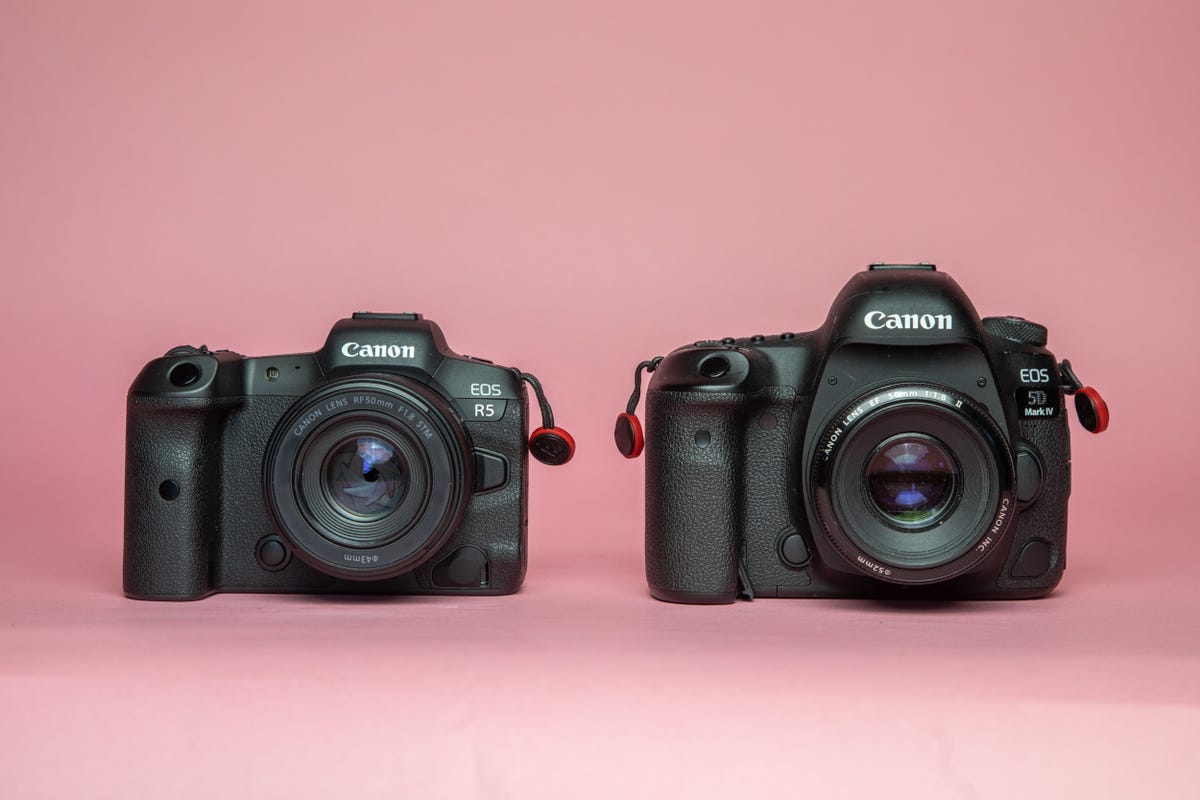

The mirrorless Canon EOS R5 (left) is smaller than the older Canon 5D Mk IV DSLR (right).
Andrew Lanxon/CNET
Should I buy a used DSLR?
The rise in popularity of mirrorless cameras means that many people are looking to offload their older DSLRs, which often means you can pick them up on the used market for a lot less than their original selling price. If you’re a beginner, looking to dip your toe in the photography waters then it can be a good way of experimenting without spending too much money up front.
However it’s worth thinking long term. If you love your new hobby then there’s every chance you’ll want to upgrade to new gear later on, or add new lenses and accessories that might not be available on your older camera system. Spending the extra on a more modern system now might mean that you’re future-proofed down the line.
I have a great phone, do I still need a proper camera?
Today’s top phones like the iPhone 13 Pro or Samsung Galaxy S22 Ultra pack incredible camera systems that can take beautiful photos. Even more affordable mid-range phones like the Nothing Phone 1 can still take great snaps, so do you really need a dedicated camera?
This will largely come down to what kind of photography you do. If you really just want some quick snaps of your kids in the park to send to your family then your phone camera will almost certainly be fine. It’ll save you having to buy expensive equipment and having to drag it with you everytime you want to take some photos. Your phone, meanwhile, will always be in your pocket ready to go.
If you want to take things a bit more seriously then a proper camera is worth considering. Image quality is still typically better, often with sharper details and better dynamic range (the amount of information captured in the very bright and very dark areas) than a phone can manage. This is largely because a phone’s camera sensor has to be incredibly small to fit on the back of the phone, whereas a camera’s sensor can be much bigger — the bigger the sensor, the more light it can capture and the better your shots will look.
And while phones like the S22 Ultra have impressive zoom capabilities, it’s not as good as carrying a professional telephoto lens to get great quality shots when zoomed in.
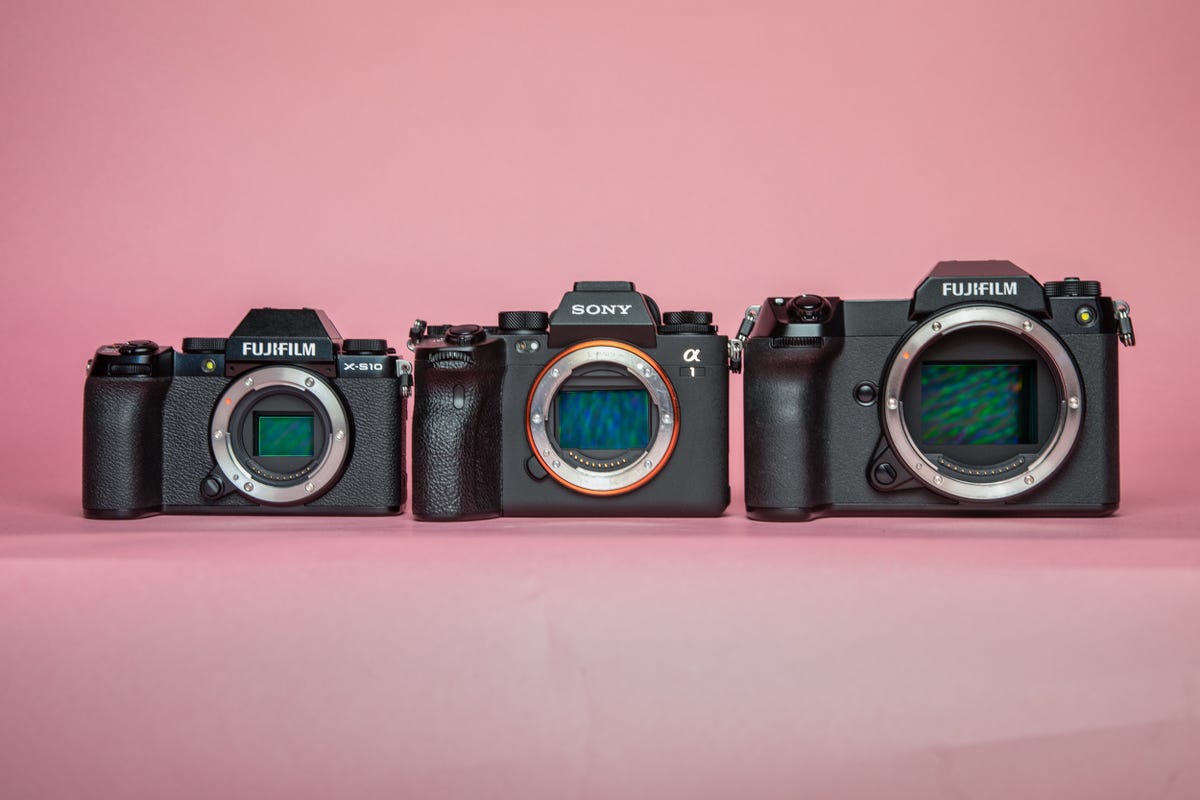

A look at micro four thirds sensor (left), a full-frame sensor (middle) and medium format sensor (right). Typically a larger sensor results in better image quality.
Andrew Lanxon/CNET
What’s the difference between a full-frame, APS-C and micro four-thirds sensor?
In short, the size. A full-frame sensor has the same dimensions as a frame of 35mm photography film, whereas APS-C is smaller and micro four-thirds is smaller still. A bigger sensor can capture more light and therefore typically produce better dynamic range and sharper images in low-light situations. Most professional cameras like the Canon EOS R5 or Sony A1 have full frame image sensors.
Then there are medium format cameras like the Hasselblad X1D II 50C or Fujifilm GFX 100S that have even bigger image sensors then full frame. These massive sensors allow these pro-level cameras to capture incredible details and beautiful dynamic range.
But a bigger sensor means a bigger camera to fit it in so there are certainly advantages of having a smaller sensor in your camera. The OM-Systems (Olympus) OM-1 uses a micro four thirds sensor and as a result it’s a very compact body to carry around. It’s also able to shoot with incredible burst speeds because it’s not capturing as much data in each single still image as a full-frame camera would. Professional wildlife or sports photographers would likely be happy with the tradeoff of dynamic range here in order to shoot as fast as possible to capture the action.
Smaller sensor cameras can also use smaller lenses that typically cost less than their full-frame equivalents. An APS-C camera then can save you both money and weight in your camera bag.
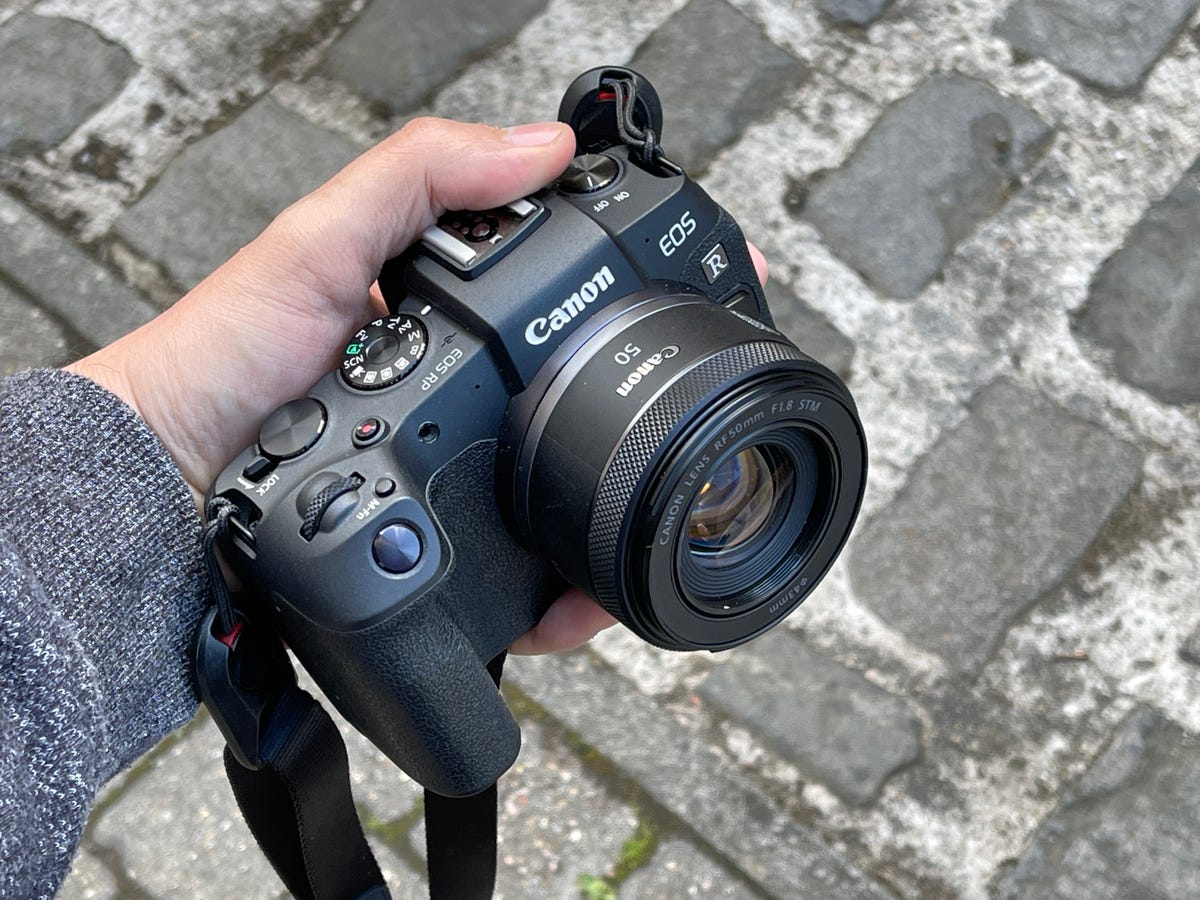

Canon’s 50mm f/1.8 RF lens is small, light and cheap. It’s a great starter lens but it’s also good for pros wanting something that won’t weigh them down.
Andrew Lanxon/CNET
What’s the best beginner lens to buy with my new camera?
Many cameras — especially those aimed towards beginner and amateur photographers — come with a ‘kit lens’ to get you started. Often these are zoom lenses, offering a relatively broad range from 18mm at the wide end to 55mm at the zoomed-in end. These can be great to start on, but they’re often quite mediocre when it comes to image quality, offering narrow apertures, meaning you can’t get that attractive out of focus background in your portrait and low-light shooting can be very difficult.
There is no one lens that will suit everyone and eventually you’ll likely build up a kit bag of lenses, having perhaps two or three favorites that you use most often. A great starting lens to upgrade to from your kit lens is a 50mm prime lens (“prime” meaning it is fixed at that focal length, with no zoom) with a f/1.8 aperture. Most camera manufacturers offer this at relatively cheap prices. Canon’s own model, for example, is often referred to as the “nifty fifty” and it costs a tenth of the price of its professional-standard f/1.2 aperture 50mm lens.
A prime lens like this not only allows you to get creative with those shallow depth of field shots, but having a fixed focal length can be a great way to learn more about composition in your photography. Instead of simply zooming in and out to fit things in your scene, you’re forced to move around and really consider how the different elements go together in the final image.
If you’re looking for an all-rounder, a 24-105mm f/4 (or 24-120mm, as offered on Nikon’s Z-mount lenses) provides both a wide-angle and telephoto perspective, meaning it could be the only lens you need to put on your camera.
Should I buy third-party lenses?
Companies like Sigma, Tamron, Laowa or Samyang have all become more dominant names in the photography industry, offering alternatives to Canon, Sony or Nikon’s own lenses, often at much more competitive prices. Sigma’s Art range is highly-regarded as providing superb image quality that’s on par with what you’d expect from their camera-branded equivalents.
It’s still the case that you get what you pay for and if you’ve found a 50mm f/1.2 lens for 300 bucks somewhere on the internet that claims to be as good as Sony’s $2,000 original then you can safely assume that there will be tradeoffs somewhere along the way.
As with most things, it’s worth checking the reviews and forums and seeing what others have to say about them. At the end of the day it’ll come down to what you’re willing to pay and what you’ll use it for; if you’re a pro with commercial clients demanding the best, make sure you’re not cheaping out on lenses. If you just want some cool shots from your next vacation to put on Instagram, go ahead and dive into the third-party market.
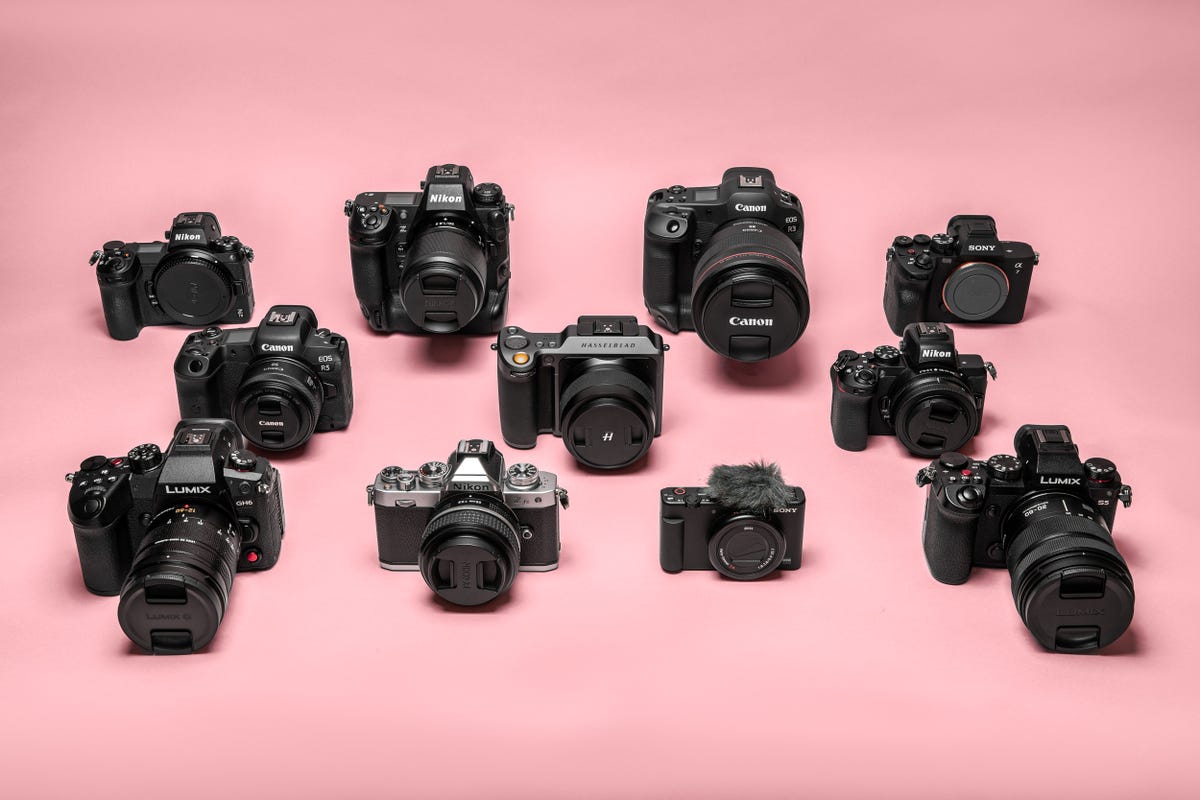

There’s a huge array of choices when you’re looking for a new camera.
Andrew Lanxon/CNET
What to consider when buying a new camera
With so many camera brands offering a huge variety of different models at wildly-differing prices, choosing a camera that suits you can be tricky. Like most things though, performance lines up with budget, with the best, most advanced features typically found on more expensive, professional-standard models.
So it’s worth spending some time thinking about what you actually need from your camera. If you’re looking for something small and light to chuck in a backpack and get some great travel shots then smaller APS-C models like Fujifilm’s X-S10 will suit you well and won’t break the bank. The OM Systems OM-1 is similarly compact thanks to its smaller image sensor, but its higher price comes with more advanced auto focus, incredible burst firing speeds and pro-standard video options.
If you’re looking to take your photography to the next level then look towards full-frame models like the Nikon Z7 II, Sony A7 IV or Canon EOS R5. These cameras all come with higher price tags attached, but their physically larger image sensors allow you to shoot pristine-looking photos that capture more detail in the highlights and shadows of your scene. These are often the cameras you’ll see in the hands of professional photographers.
But don’t forget, it’s not just the camera you’re buying, you’ll need to consider lenses too. And unfortunately, lenses don’t come cheap, with many professional-level lenses costing more than the cameras themselves. Full frame sensors demand bigger lenses to accommodate them, which in turn makes them more expensive, so again, beginners among you will be better served with smaller sensor models from the likes of Fujifilm or Olympus.
Is more megapixels better?
Not necessarily, no. While some cameras like the Canon EOS R5 or Sony A1 offer huge megapixel counts, more pixels don’t make your photos look better. Instead, those additional pixels allow you to crop into the image later without sacrificing too much resolution, allow for high-quality gallery printing or allow for easier compositing in post production. If none of those things are important to you then you needn’t worry too much about your camera’s resolution.
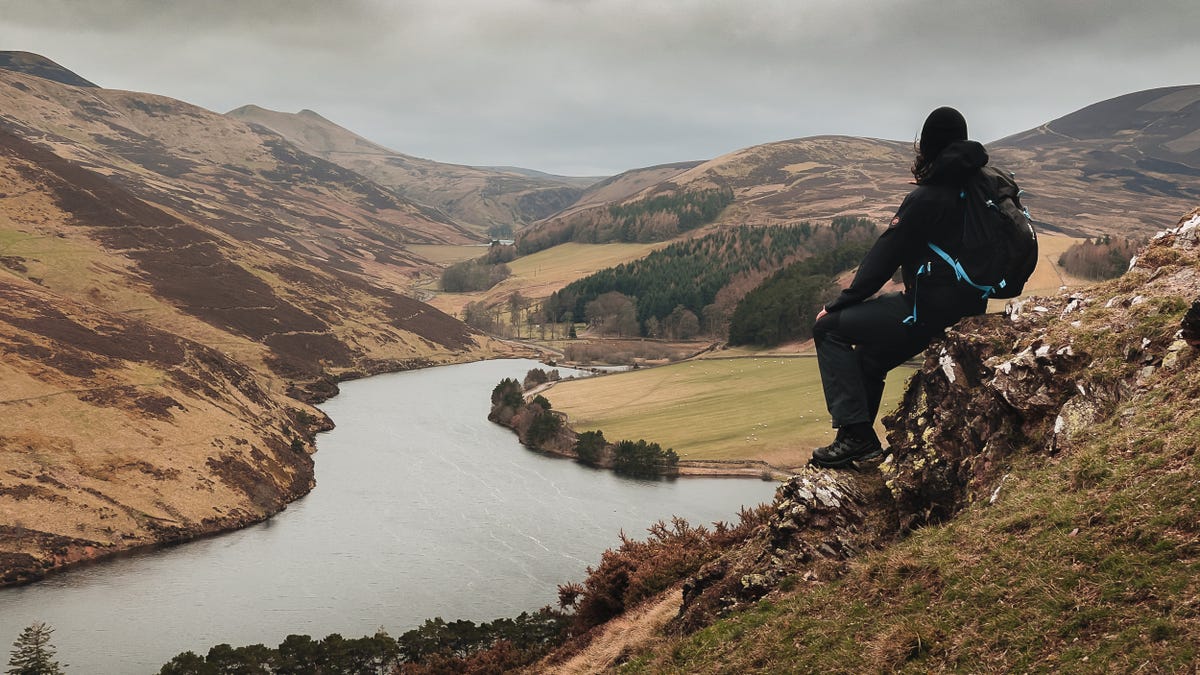

A rare moment of CNET Editor At Large and professional photographer Andrew Lanxon seen in front of the lens as he takes a break from camera testing in the beautiful Scottish scenery.
Andrew Lanxon/CNET
How we test cameras
Everything on this list has been hand-selected and tested by us to make sure that it performs as promised. No manufacturer’s claims are taken at face value and if it didn’t impress, it didn’t make the list.
The cameras featured here have been tested by CNET Editor At Large and professional photographer Andrew Lanxon. They’ve been carried in backpacks, in messenger bags, taken to city-center coffee shops, bars, to the beach, up hills and through forests. We’ve tested cameras in the ways that you’d want to use them yourself; actually getting out into the world and capturing real images we’d want to share with family or on Instagram.
Frame after frame of test images have been taken on each camera, both in raw format and JPEG, to test all of the key features of the camera and to see how each model really handles. Most cameras were tested with fast SD cards by SanDisk and ProGrade, but more high-performance models like the Canon EOS R3, R5 and Nikon Z9 were tested with ultra high-speed CFExpress cards by ProGrade.
As professionals ourselves, we know what to look for in a good camera, we know what makes our lives easier when out shooting in the field and what features genuinely help us take better-looking images — or are simply a waste of money.
The post Best Camera to Buy In 2022 first appeared on Joggingvideo.com.
]]>